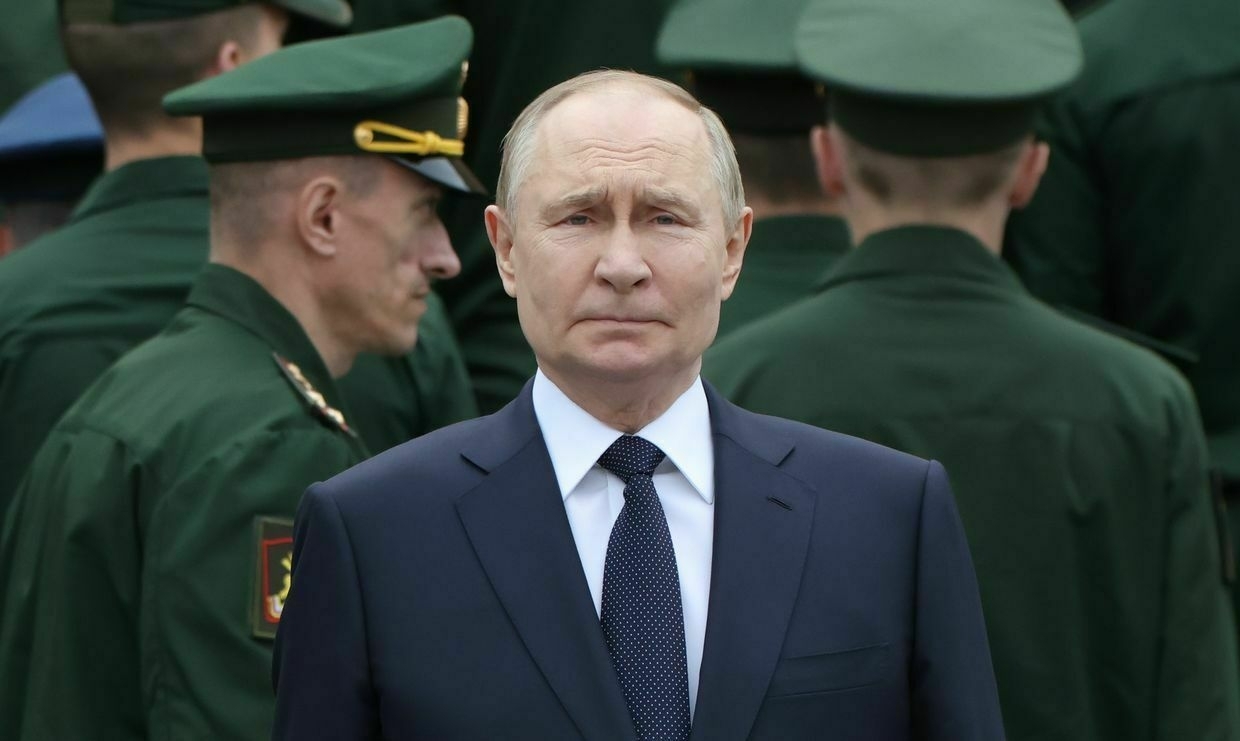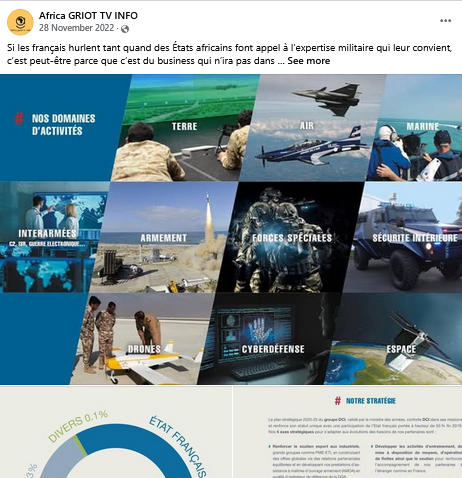-
Ukraine to receive $46 million for repairs to Chornobyl sarcophagus after Russian strike
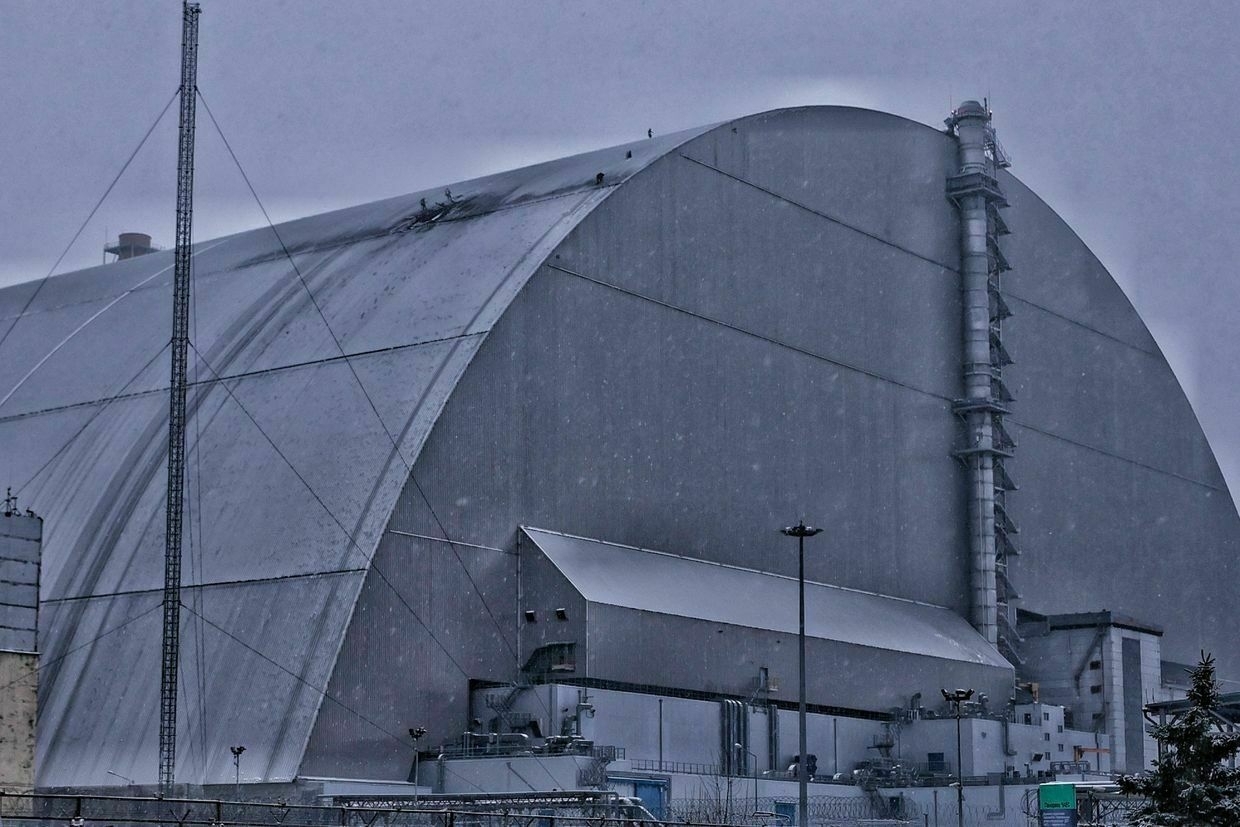
Ukraine will receive €42.5 million ($45.7 million) from international partners to repair the protective arch over the Chornobyl nuclear plant’s destroyed reactor, Environment and Natural Resources Minister Svitlana Hrynchuk announced on June 26.
A Russian Shahed-type drone struck the New Safe Confinement over Chornobyl’s destroyed 4th reactor on February 14.
The structure built to contain radioactive material was damaged, no serious radiation leaks were caused.
France pledged €10.6 million ($11.4 million), the United Kingdom committed €6.9 million ($7.4 million), and the European Commission contributed €25 million ($26.9 million) toward the repairs.
“This is further evidence that Ukraine does not face its challenges alone, but has reliable friends,” Hrynchuk wrote on Facebook.
The funding was announced at the European Bank for Reconstruction and Development (EBRD) headquarters in London during a meeting of the Chornobyl International Cooperation Account Assembly of Contributors – the governing body of the fund created to address Chornobyl Nuclear Power Plant issues.
Ukraine has already surveyed the building’s structure and completed preparatory work, Hrynchuk said. In March, €400,000 ($430,000) was allocated from the special fund for this purpose.
The assembly discussed plans for temporary repairs and further work to fully restore the arch’s integrity and functionality.
Chornobyl was the site of the world’s worst nuclear disaster in 1986, contaminating areas across Ukraine, Belarus, and Russia.
After an protective structure was built over the destroyed reactor to contain radioactive material in the months following the disaster, the current arch, an international project built as a more permanent solution, was completed in 2017.
Chornobyl isn’t safe anymore… againChornobyl disaster occurred in the early hours of April 26, 1986, in Soviet Ukraine. Nearly 39 years after the worst nuclear disaster in history, Russia’s brazen attack on the $2 billion New Safe Confinement (the sarcophagus enclosing the destroyed reactor) in February 2025 poses a new potential radioactive danger as engineers race to repair the damage. The Kyiv Independent’s Kollen Post dives into why the restoration is not as simple as it may seem.The Kyiv IndependentKollen Post

-
Trump vowed at NATO summit that Russia won’t attack alliance during his presidency, WP reports
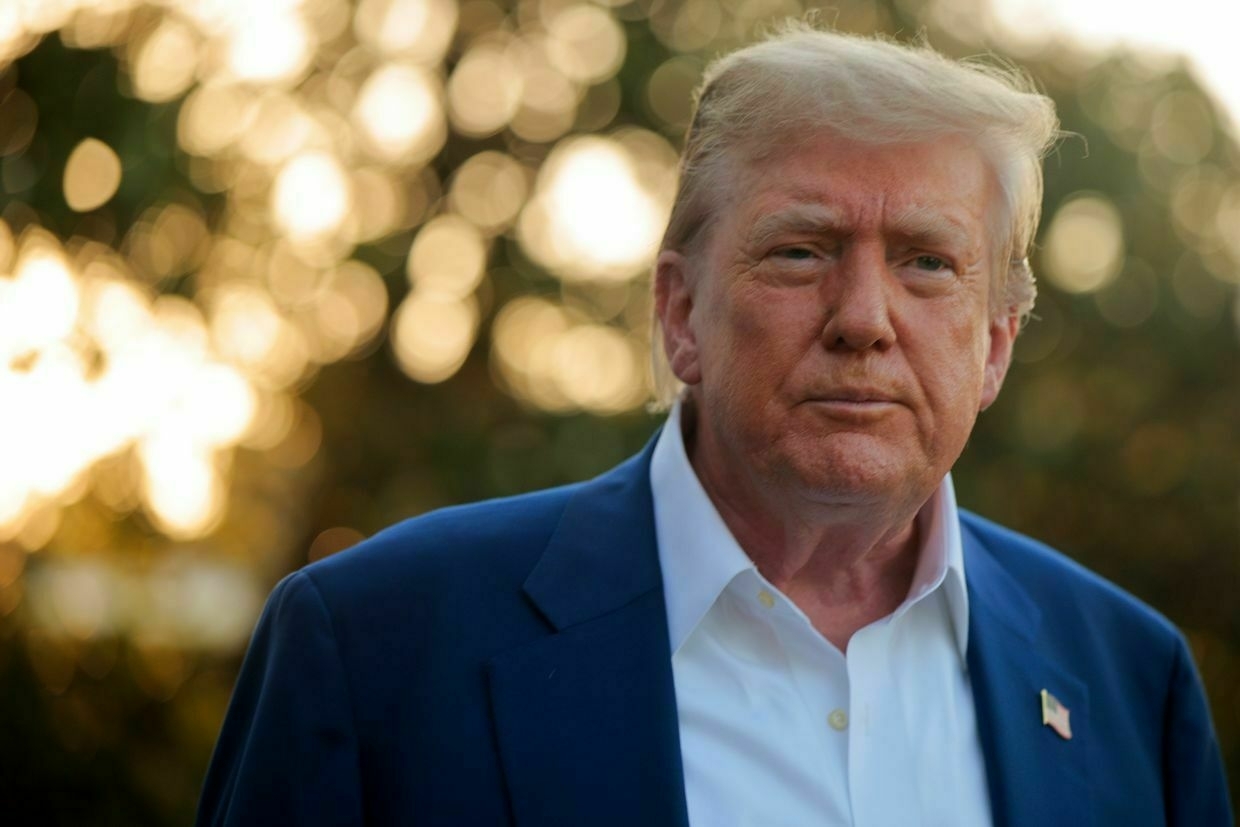
U.S. President Donald Trump promised during the NATO summit in The Hague that Russia would never attack the alliance while he is in office, the Washington Post reported on June 26, citing three unnamed European officials.
Speaking at a briefing in The Hague a day earlier, Trump, however, did not rule out that Russia has territorial ambitions beyond Ukraine.
“It’s possible,” he said.
Still, the U.S. president immediately downplayed Moscow’s threat and aggression against Ukraine, saying Russian President Vladimir Putin was “misguided."
Foreign officials and EU diplomats have increasingly called for the preparation for a potential full-scale conflict between NATO and Russia.
Trump’s remarks came days after President Volodymyr Zelensky said that Ukraine’s intelligence has proof that Russia is preparing new military operations in Europe and just a week after Putin declared “all of Ukraine is ours."
During the summit, NATO Secretary General Mark Rutte called on alliance members to be realistic about the threats posed by Russia and China. Previously, he warned that Russia could be ready to launch an attack against the alliance within five years.
Amid rising threats from Russia, NATO member states have agreed to a new defense spending benchmark, committing to allocate 5% of their gross domestic product annually to defense and security-related expenditures by 2035.
In early June, German intelligence chief Bruno Kahl said Russia may try to test NATO’s unity with provocations beyond Ukraine, as some Russian officials believe that the alliance’s collective defense principle no longer works.
Putin under pressure to declare war on Ukraine, but experts say Russia isn’t readyDespite suffering over 1 million casualties, pounding Ukrainian cities nightly with missiles and drones, and committing countless war crimes, one startling fact about Russia’s full-scale invasion remains — Moscow has yet to officially declare war on Ukraine. In February 2022, Russian President Vladimir Putin described what he believed was going to be a swift victory and the capture of Kyiv within days as a “special military operation.” Nearly three-and-a-half years later, the Kremlin is stuck The Kyiv IndependentChris York
The Kyiv IndependentChris York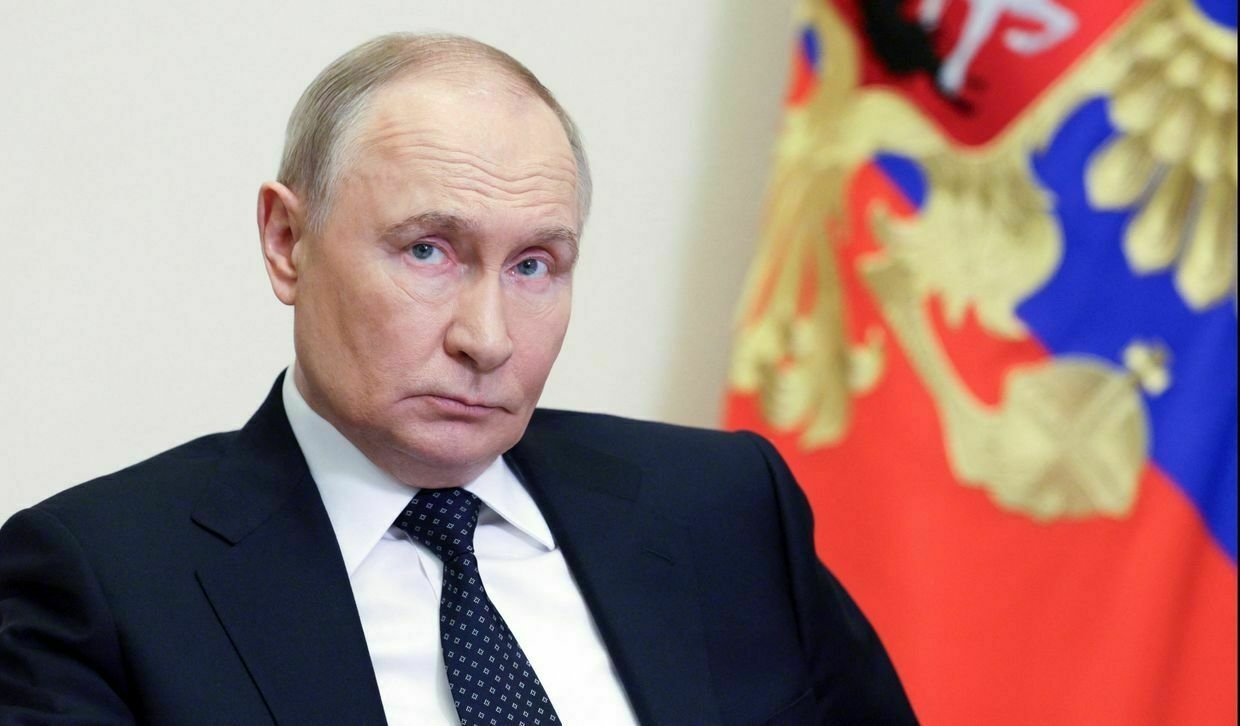
-
Ukraine’s NATO membership – a long road full of challenges
-
Kyrgyz citizen pleads guilty to illegally exporting US firearms to Russia
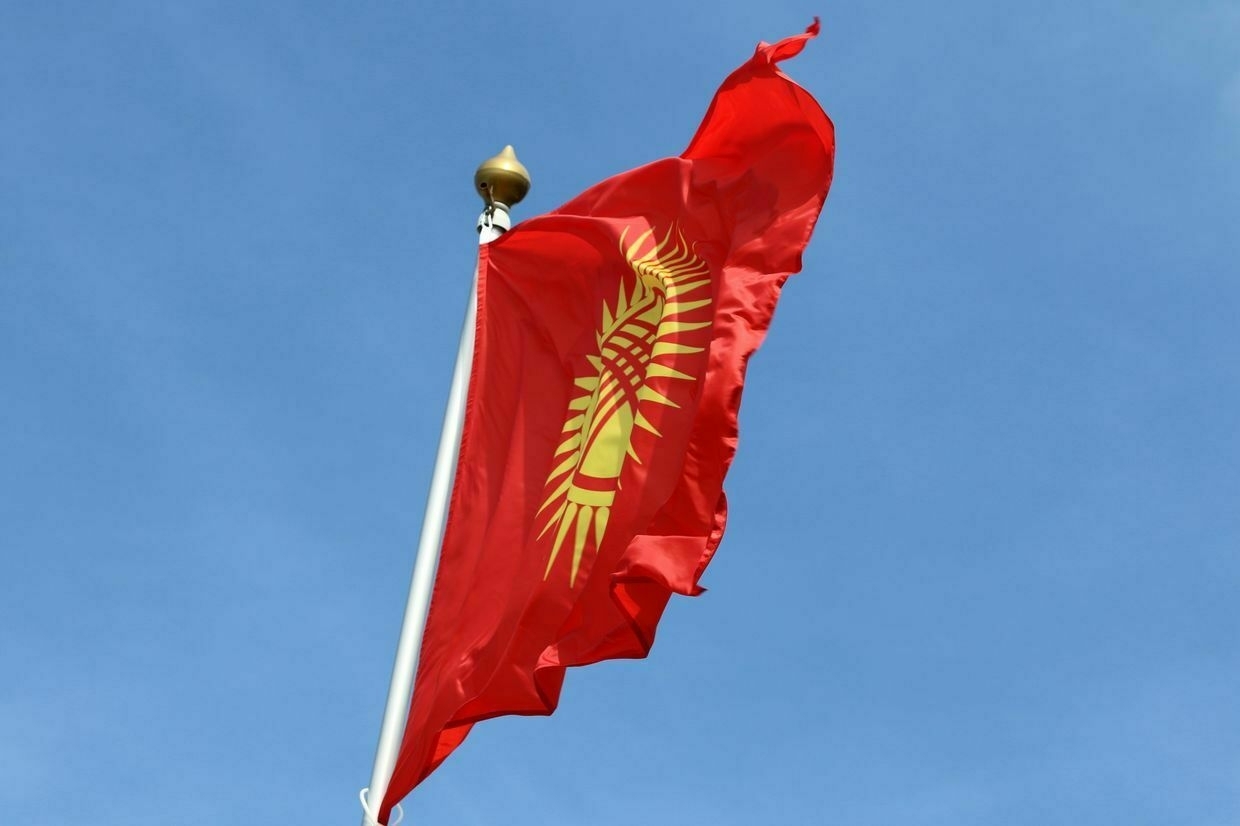
Sergei Zharnovnikov, a 46-year-old citizen of Kyrgyzstan, pleaded guilty in New York federal court on June 25 to a conspiracy to illegally export U.S.-made firearms to Russia and smuggling, the U.S. Department of Justice announced.
According to the statement, the defendant exported firearms and ammunition worth more than $1.5 million from the U.S. to Russia, violating U.S. law.
“The defendant admitted that he purchased American-made, military-grade firearms and re-exported them to Russia,” U.S. Attorney Joseph Nocella for the Eastern District of New York said.
“Today’s guilty plea is the culmination of extensive investigative work, showing that this office will not allow merchants of lethal weapons and Russia to flout U.S. sanctions."
According to court records, Zharnovnikov, owner of a Bishkek-based arms company, conspired to export U.S. firearms to Russia starting in March 2020. He signed a $900,000 contract with a U.S. company to send weapons to Kyrgyzstan, using a Department of Commerce export license that specifically banned re-export to Russia.
Despite the restriction, Zharnovnikov allegedly sent semi-automatic hybrid rifle-pistols to Russia via Kyrgyzstan without proper permits. Shipping records show the weapons left JFK Airport in July 2022. By November, a Russian client listed those same weapons on a tax form.
Upon sentencing, Zharnovnikov could face up to 20 years in prison.
’50,000 Russian troops pinned down’ — Ukraine halts advance in Sumy Oblast, summer offensive ‘faltering,’ Syrskyi says“This year’s wave of the enemy’s ‘summer offensive’ from Russian territory is faltering,” Commander-in-Chief Oleksandr Syrskyi said. The Kyiv IndependentTim Zadorozhnyy
The Kyiv IndependentTim Zadorozhnyy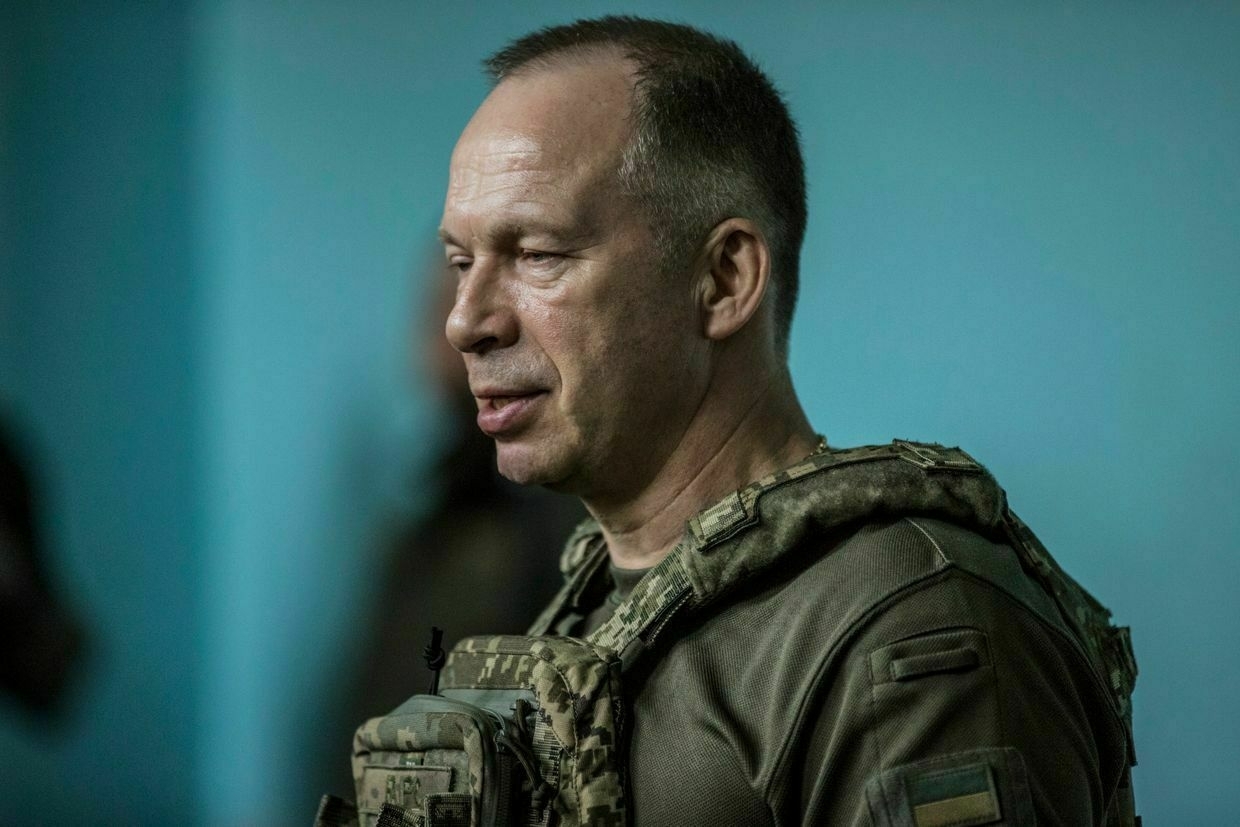
-
4000 rescued – A nun from Argentina helps Ukraine
-
Influence as a service: l’illustration de la Dame de Sochi
Au cœur des démocraties libérales, la liberté d’opinion demeure un pilier intangible. Mais c’est précisément cette valeur, socle du débat public ouvert, que certains États malveillants exploitent désormais à des fins d’ingérence. Plutôt que de recourir aux traditionnels faux comptes sur les réseaux sociaux – une méthode aujourd’hui obsolète et peu crédible – ces acteurs préfèrent désormais l’authenticité, ou du moins son apparence.
Bienvenue dans l’ère de l’« influence as a service », où les campagnes d’influence ne s’appuient plus sur des avatars anonymes, mais sur des figures bien réelles, suivies, et souvent rémunérées. Des influenceurs au service de causes géopolitiques, souvent sans le dire, louent leur audience à des États étrangers pour relayer des messages ciblés, construire des opinions favorables, ou décrédibiliser un camp adverse.
Ce modèle répond à plusieurs objectifs : capter des communautés fidèles, bénéficier de la crédibilité sociale de ces figures, et injecter des messages politiques dans des sphères souvent imperméables aux canaux classiques de communication institutionnelle. Loin d’être marginal, le phénomène s’impose comme l’un des leviers centraux des stratégies d’influence offensives, en particulier pour la Russie sur le continent africain.
En mai dernier, le DFRLab (Digital Forensic Research Lab) publiait une enquête édifiante : des influenceurs sud-africains y sont identifiés comme participants à des campagnes de désinformation sur la plateforme LIT, visant explicitement à relayer des messages anti-ukrainiens, dans le cadre d’une stratégie plus large d’opérations informationnelles pro-Kremlin.
Il ne s’agit donc nullement d’un débat d’idées ou de liberté d’expression, mais bien de la manipulation délibérée de ces principes à des fins offensives, agressives et profondément déstabilisatrices. Ce n’est plus la pluralité d’opinion qui est en jeu, mais sa subversion méthodique au service d’intérêts hostiles.
INPACT/AEOW a choisi de présenter plusieurs exemples liés à Nathalie Yamb, figure centrale d’un écosystème d’influence solidement structuré. Loin d’un simple activisme spontané, les enquêtes révèlent des dispositifs soigneusement planifiés, bénéficiant d’un soutien matériel et logistique en provenance directe de cercles liés à l’appareil russe. Coordination des relais, synchronisation des prises de parole, diffusion multi-plateforme et mobilisation de ressources techniques : les campagnes auxquelles elle participe illustrent un mode opératoire rationalisé, pensé pour maximiser l’impact informationnel. Plus qu’une voix singulière, Yamb apparaît comme un rouage stratégique d’un mécanisme d’influence externalisé, où la communication politique s’adosse à des moyens concrets, calibrés et orchestrés en amont.
La Côte d’Ivoire est dans le giron de la Russie qui va envoyer une délégation de consultants via les activités Wagner en Janvier 2019 (voir plus bas). Les premiers contacts publics de Nathalie Yamb avec la Russie remontent au printemps/été 2019 où elle est le bras droit d’un homme politique camerounais Mahmadou Koulibaly du parti LIDER, opposant au président Ouattara. Mahmadou Koulibaly est interviewé sur Sputnik en mai 2019. Ils partent en Russie chercher des financements pour préparer la campagne présidentielle ivoirienne de 2020. Dès lors, elle est identifiée comme une figure intéressante pour communiquer les messages russes en Afrique et auprès des diasporas africaines et reviendra de multiples fois en Russie, notamment comme invitée de premier plan à des forums de haut niveau réunissant exclusivement
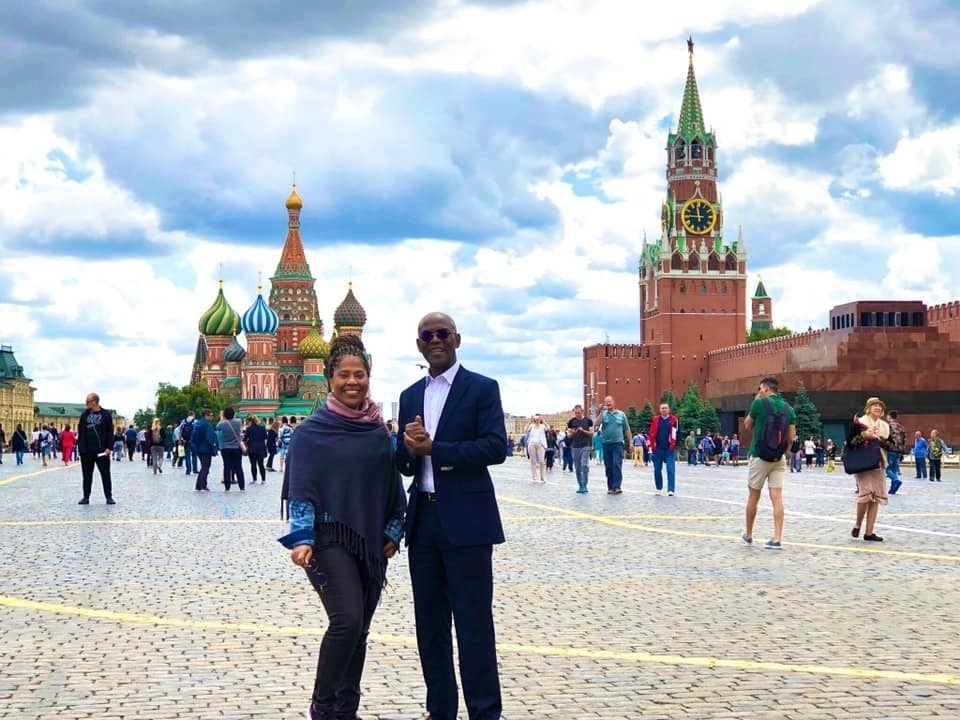
L’équipe du parti LIDER à Moscou en Juillet 2019 Le Projet AFRIC
L’engagement de Nathalie Yamb auprès de la Russie est rendu public via la structure AFRIC qui se présentait comme un think tank pour penser l’Afrique différemment mais aussi un groupe d’observateurs des élections en Afrique. En réalité, ce groupe créé de toute pièce au sein du Back Office du groupe Wagner était un projet d’influence au service des intérêts russes et participant notamment au soutien de candidats africains poussés par le Kremlin et comme agence de détection des talents africains susceptibles de porter les messages de Kremlin.
Nathalie Yamb apparait à plusieurs événements en Russie et en Europe aux côtés des cadres du Back Office de Prigojine à présent sous sanctions internationales.
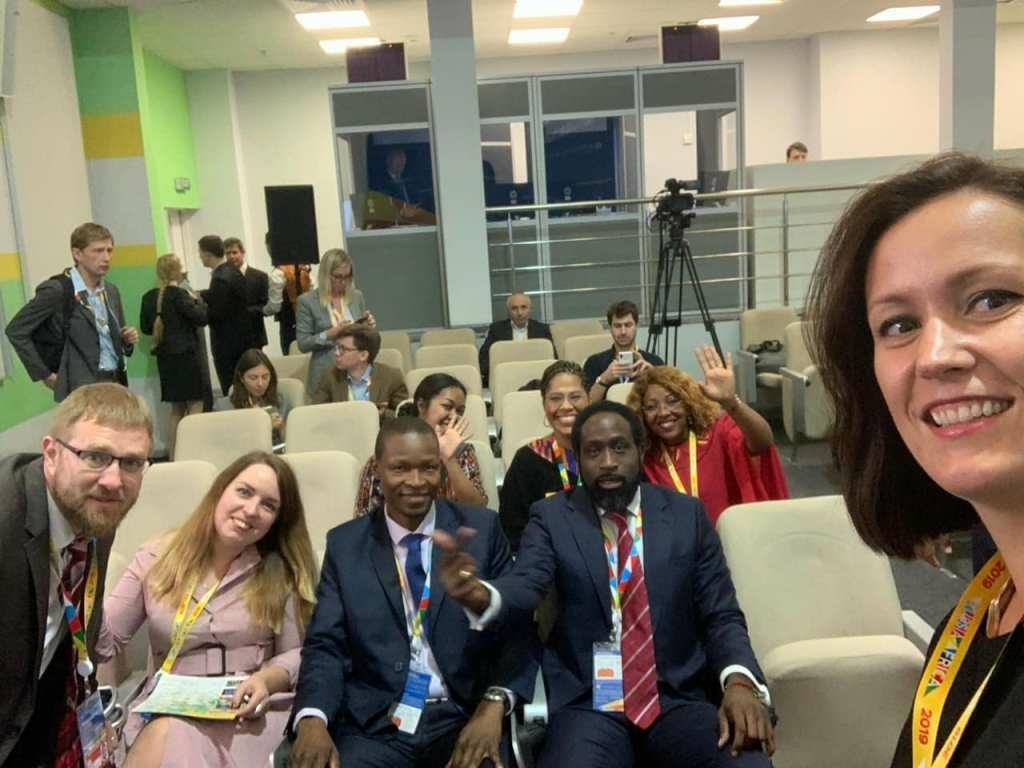
Octobre 2019 avec l’équipe de AFRIC/ Back Office à Sochi 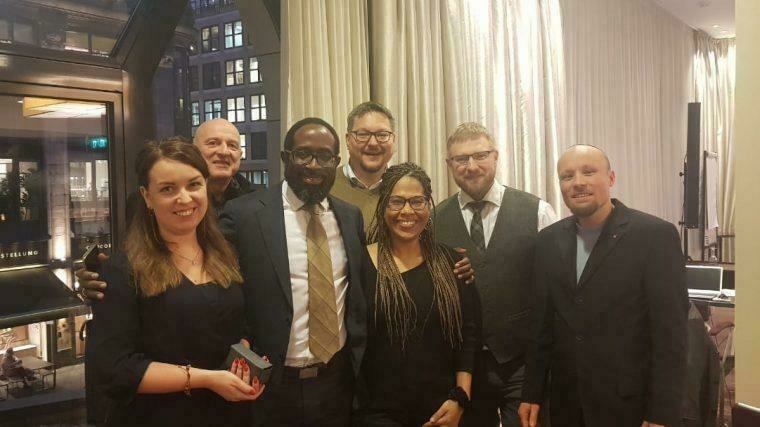
Nathalie Yamb avec l’équipe de AFRIC et du Back Office de Prigojine dont Yulia Afanasayeva Berg, cadre des opérations d’influence russe sur l’Afrique 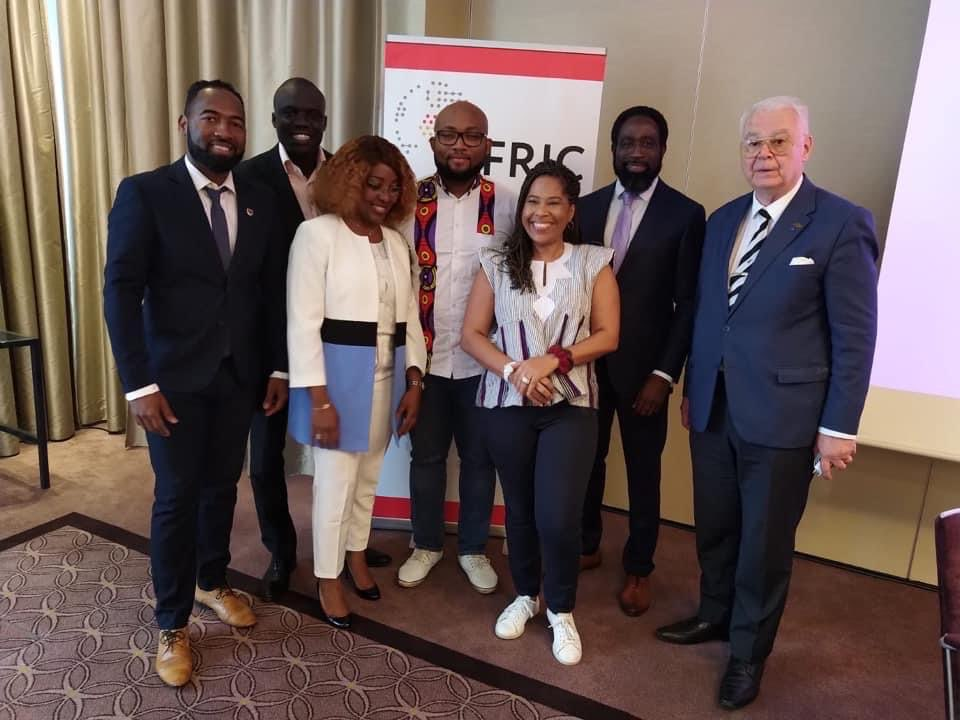
A Berlin Il est à noter que la mort de Evgeny Prigojine n’a pas enrayé les liens entre l’appareil d’état russe et Nathalie Yamb qui a participé notamment à l’animation du référendum russe dans les territoires occupés en Ukraine en September 2023 à l’initiative du gouvernement russe avec d’autres ex membres d’AFRIC et du back office Wagner.
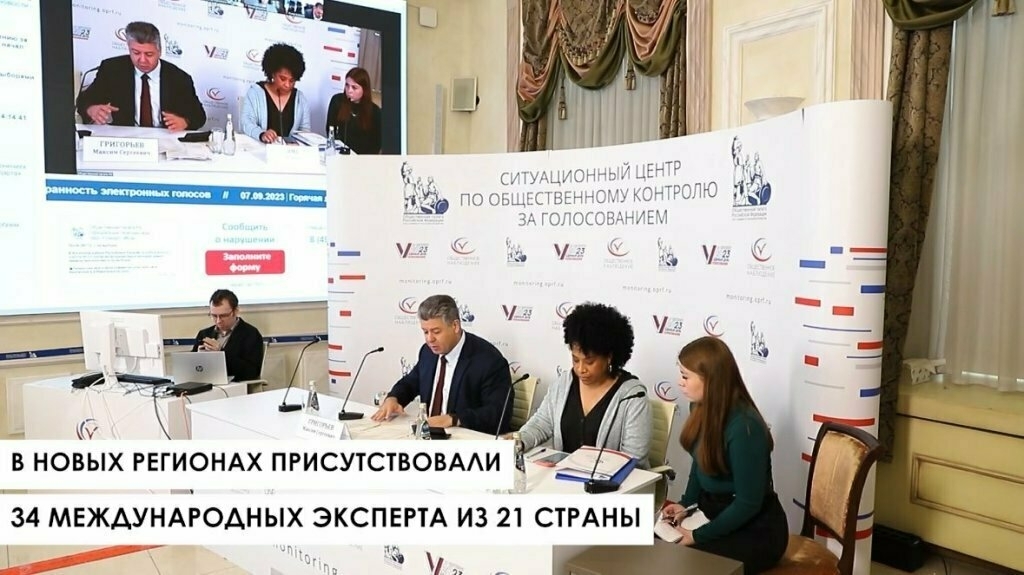
Nathalie Yamb anime le scrutin organisé dans les territoires occupés ukrainiens en Septembre 2023 Soutien planifié et matériel russe aux actions de communication de l’influenceuse
Mais, l’utilisation des influenceurs pour soutenir des actions d’influence offensives va plus loin que la simple concordance des positions politiques. Il s’agit d’une entreprise bien préparée. INPACT/AEOW a pu obtenir au cours des trois derniers années des documents provenant des bureaux de la holding Concord appartenant à Evgeny Prigojine et gérant les activités du groupe Wagner dont la partie influence avec un bureau Afrique très actif nommé “back office” ou “Africa Politology”. Ces documents décrivent une partie des actions d’influence créées et déployées par ce back office, listent les employés et leurs salaires, donnent les budgets des actions de communication et les rémunérations des médias et de certaines personnes comme Kémi Seba. Ce sont des documents de pilotage de projets (dont AFRIC), de budgets et des stratégies et plans d’action pour étendre l’influence de la Russie sur le continent Africain. Ils démontrent donc l’existence d’une stratégie de communication pensée, planifiée et déployée à des fins offensives pour accroître l’acceptabilité du groupe Wagner, promouvoir les intérêts de la Russie, décrédibiliser leurs compétiteurs (l’occident) et servir les interêts de leurs clients.
Un document budgétaire en particulier rapporte le paiement du déplacement de Nathalie Yamb à une conférence de la Chambre Civique de la Fédération de Russie en décembre 2019. Africa Politology finance son visa, ses nuits d’hôtel à Moscou, ses billets d’avion et son transport mais la deffraie aussi de 16000 roubles (environ 228 euros en 2019).
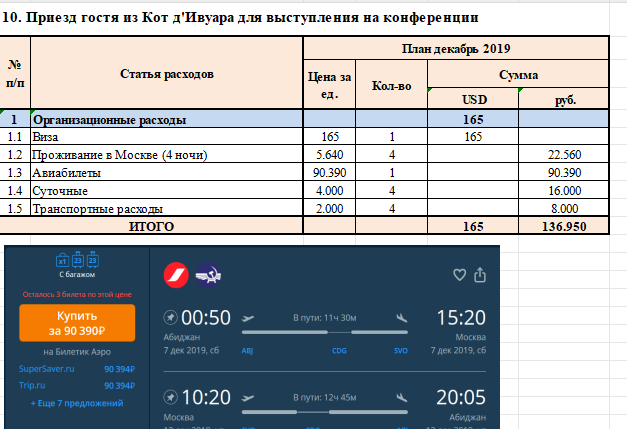
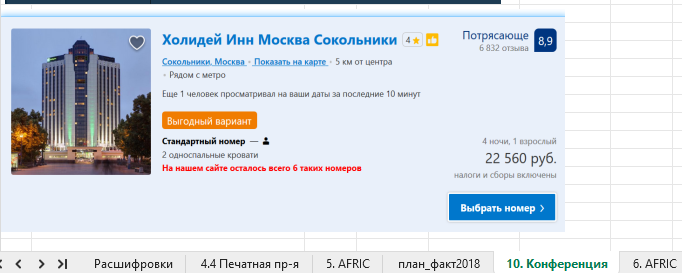
Extrait d’un document budgétaire de Africa Politology Le billet d’avion est pris pour un départ depuis Abidjan en Côte d’Ivoire le 7 décembre 2019. Mais Nathalie Yamb se retrouve expulsée de Côte d’Ivoire le 2 décembre 2019 suite à son intervention au Sommet de Sochi.
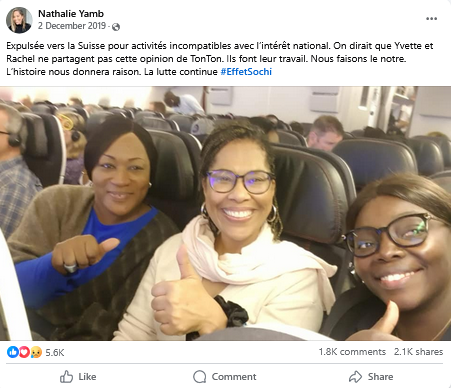
Facebook – Nathalie Yamb Elle partira en fait de Suisse à la conférence aux côtés de l’équipe AFRIC.
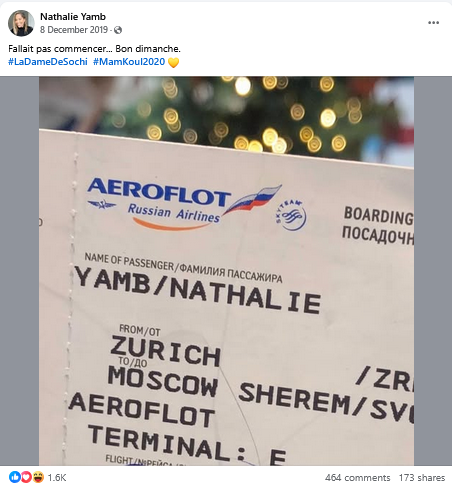
Facebook – Nathalie Yamb 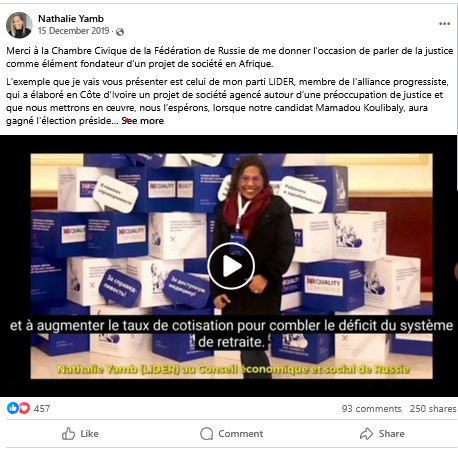
Facebook – Nathalie Yamb D’ailleurs, les dépenses liées à Nathalie Yamb sont notées sous le code “RP/39” dans le budget du Back Office/Africa Politology et font référence à plusieurs interventions de l’influenceuse en Russie et en Europe.

Extrait des documents budgétaires du Back Office/Africa Politology Avant son départ de Cote d’Ivoire en décembre 2019, les équipes du Back Office/Africa Politology organiseront une mission sur place en Janvier 2019 comprenant des enquêtes d’opinion par téléphone, des focus groupes, le paiement d’un ou plusieurs experts sur place pour un montant total de 2240 USD et un pourboire de 1200 USD pour l’expert.

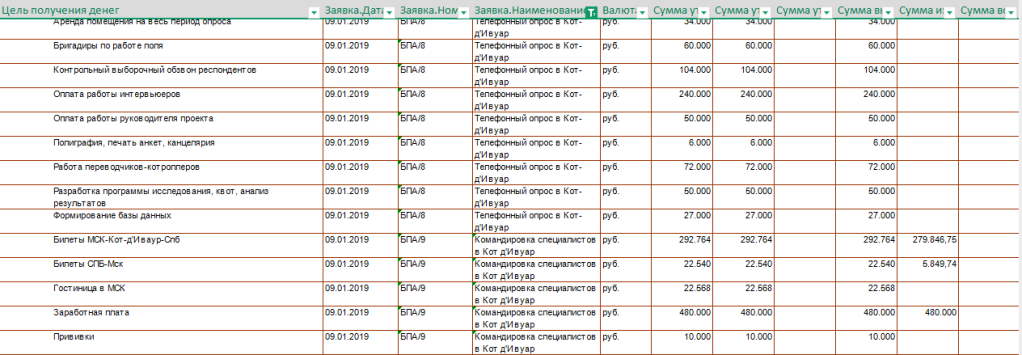
Extrait des documents budgétaires du Back Office/Africa Politology DCI, la campagne improbable
INPACT/AEOW a identifié plusieurs campagnes coordonnées impliquant des médias russes et des actifs numériques, menées en synergie avec des influenceurs. Parmi elles, l’une des plus surprenantes demeure la campagne visant la société française DCI — un sujet particulièrement technique, éloigné tant des thématiques habituellement portées par Nathalie Yamb que des centres d’intérêt de ses audiences. Ce cas emblématique illustre parfaitement les ressorts de l’« influence à louer » : une opération manifestement exogène, sans lien organique avec l’écosystème de l’influenceuse, mais intégrée à sa communication dans une logique d’orchestration stratégique.
Le 26 novembre 2022, le canal Telegram RYBAR – un blog militaire russe d’abord financé par le groupe Wagner, puis soutenu par ROSTEC, fleuron du complexe militaro-industriel russe – publie un post accusateur sur l’implication de la France dans le soutien à l’Ukraine. L’attention se porte notamment sur la société française DCI (Défense Conseil International), opérateur du ministère des Armées chargé de la formation, du conseil et du suivi des transferts d’armement à l’international. Le post met également en lumière les activités de DCI en Afrique, dans une tentative à peine voilée de nourrir une rhétorique anti-française.
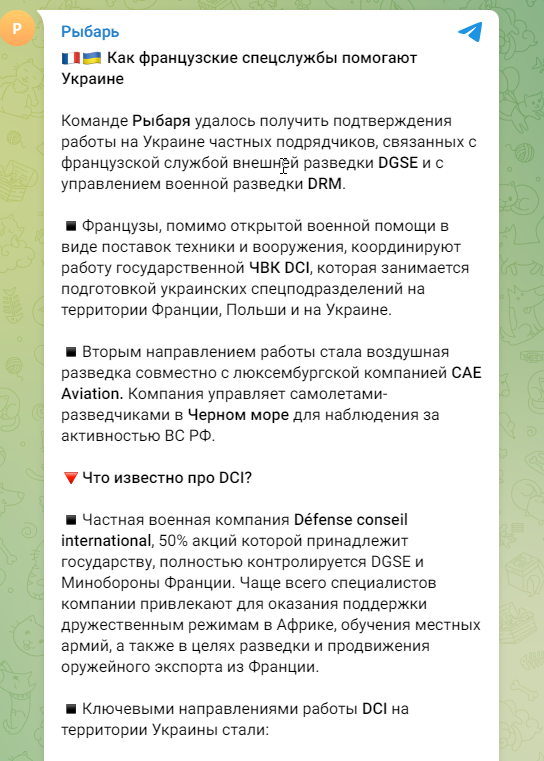
Post initial sur Telegram de Rybar le matin Le même jour, le compte X de Rybar republie le message en anglais, finalement noyé dans le flot d’informations.

Compte Rybar sur X le soir Bien qu’il s’agisse d’un sujet particulièrement technique et peu médiatisé, il va rapidement trouver un écho grâce à Nathalie Yamb, qui s’en empare pour le relayer auprès de ses audiences. Sa reprise permet au narratif d’être propulsé dans les sphères informationnelles africaines, où il sera amplifié et intégré dans un discours plus large de contestation de la présence française sur le continent.
Nathalie Yamb publie un thread nourri d’images sur X sur DCI et son action en Afrique le 27 Novembre en début d’après-midi. Cette fois-ci le récit est focalisé sur DCI comme société paramilitaire agissant en Afrique et dont la DGSE est l’actionnaire afin de nullifier l’attention portée sur les activités du groupe Wagner sur le continent.
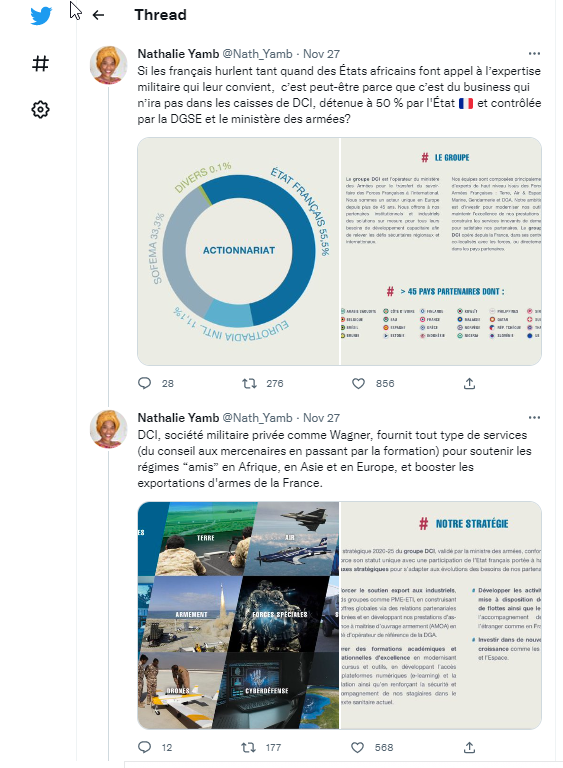
Rapidement, le post est relayé sur deux jours par des comptes authentiques mais probablement aussi amplifié par des comptes inauthentiques sur un ensemble de plateformes: X, Facebook et Telegram. Difficile d’imaginer la résonnance du sujet de DCI auprès des communautés de Nathalie Yamb, ni même de son arrivée sur le radar de l’influence.
A louer: promotion d’autres pays?
La Russie est-elle le seul État à avoir eu recours aux services de Nathalie Yamb ? Y-a-t-il coordination des efforts? La question reste ouverte. Si son rôle dans les campagnes pro-Kremlin est bien documenté, INPACT/AEOW a également relevé des prises de position alignées sur les intérêts chinois, notamment au plus fort de la crise du Covid-19 en 2020. Plusieurs contenus relayés à l’époque faisaient l’éloge de la gestion sanitaire chinoise, tout en mettant en avant la supériorité géopolitique et technologique de Pékin face aux démocraties occidentales. Ces éléments suggèrent que l’influence à louer pourrait s’exercer au bénéfice de plusieurs commanditaires, selon les conjonctures.

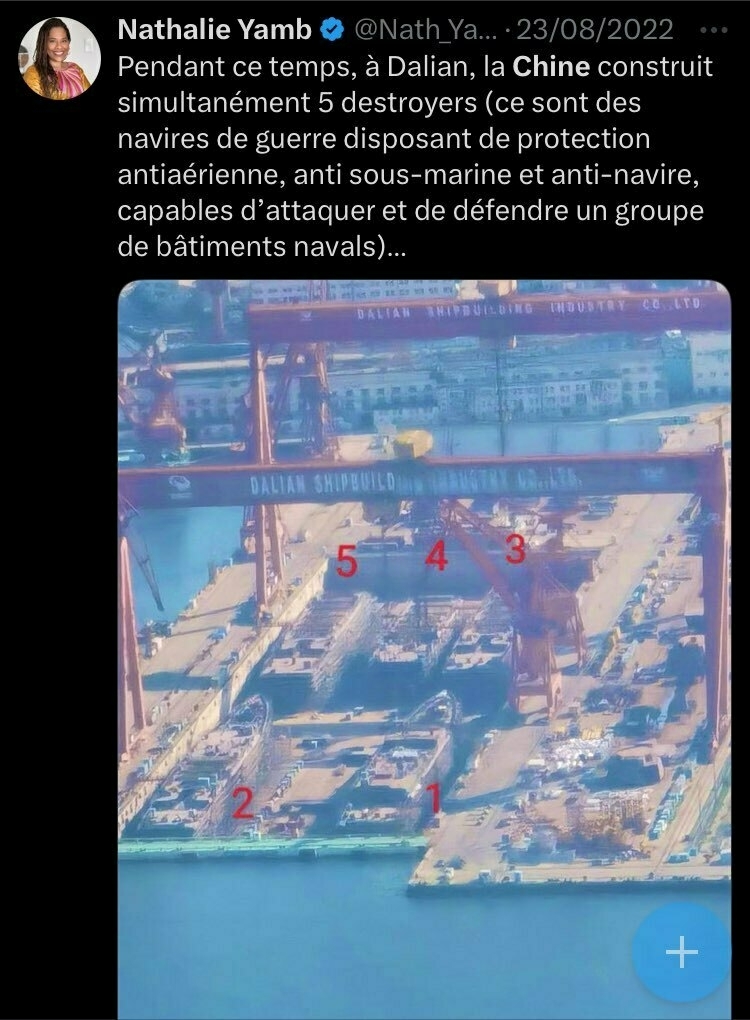

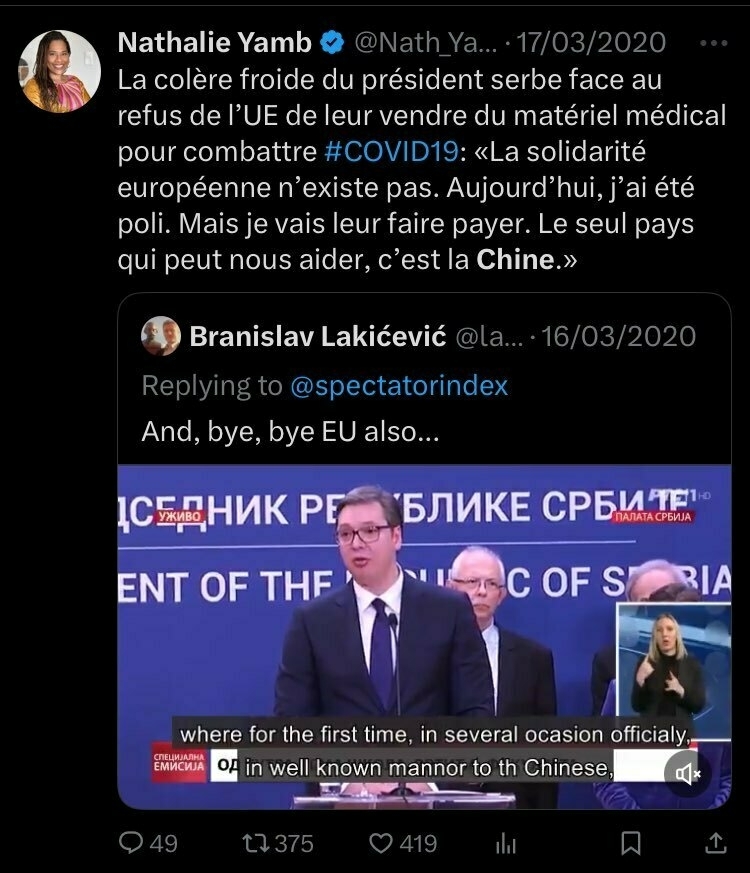
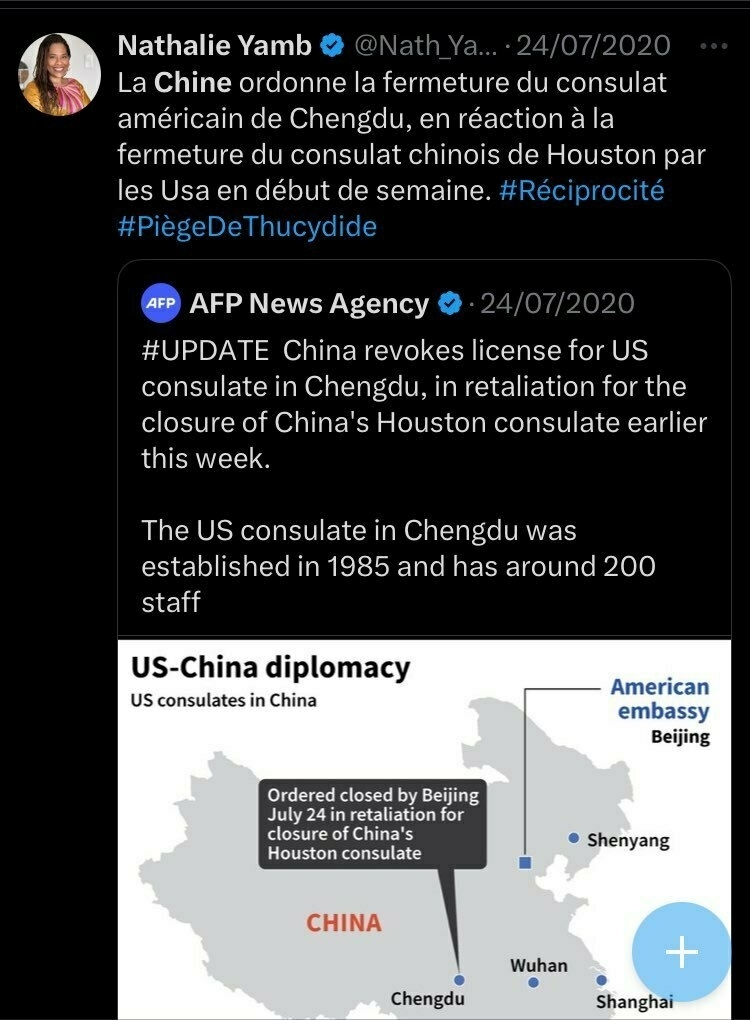
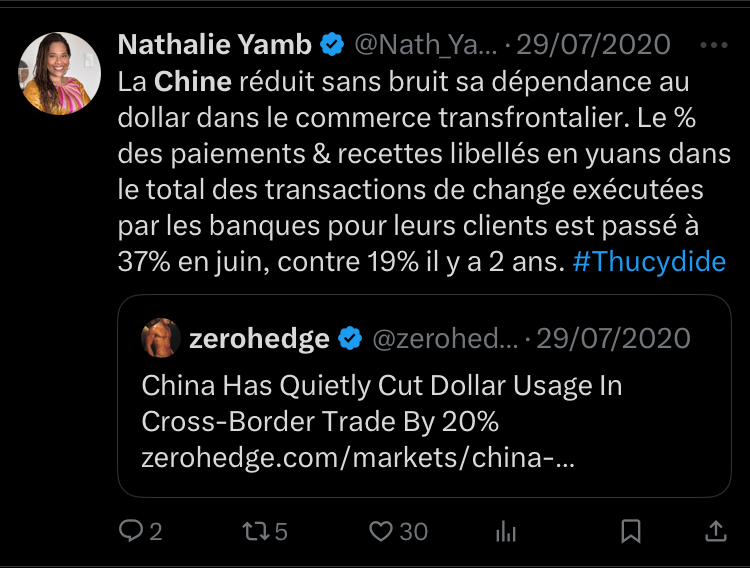
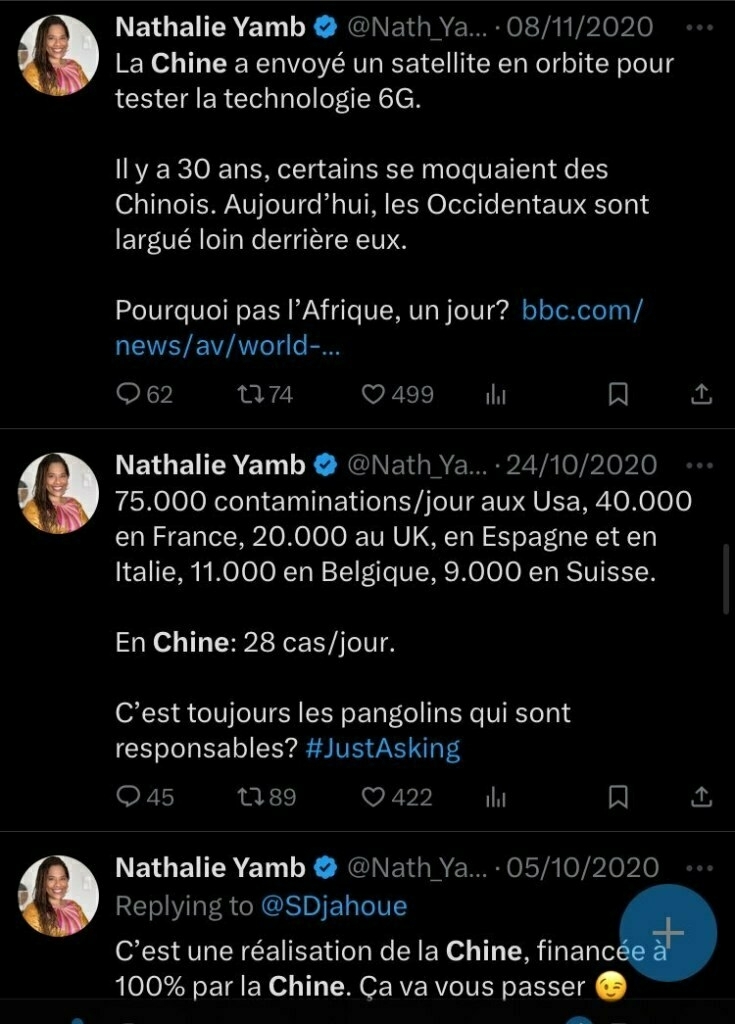


-
Ukraine Reforms Tracker Weekly — Issue 31
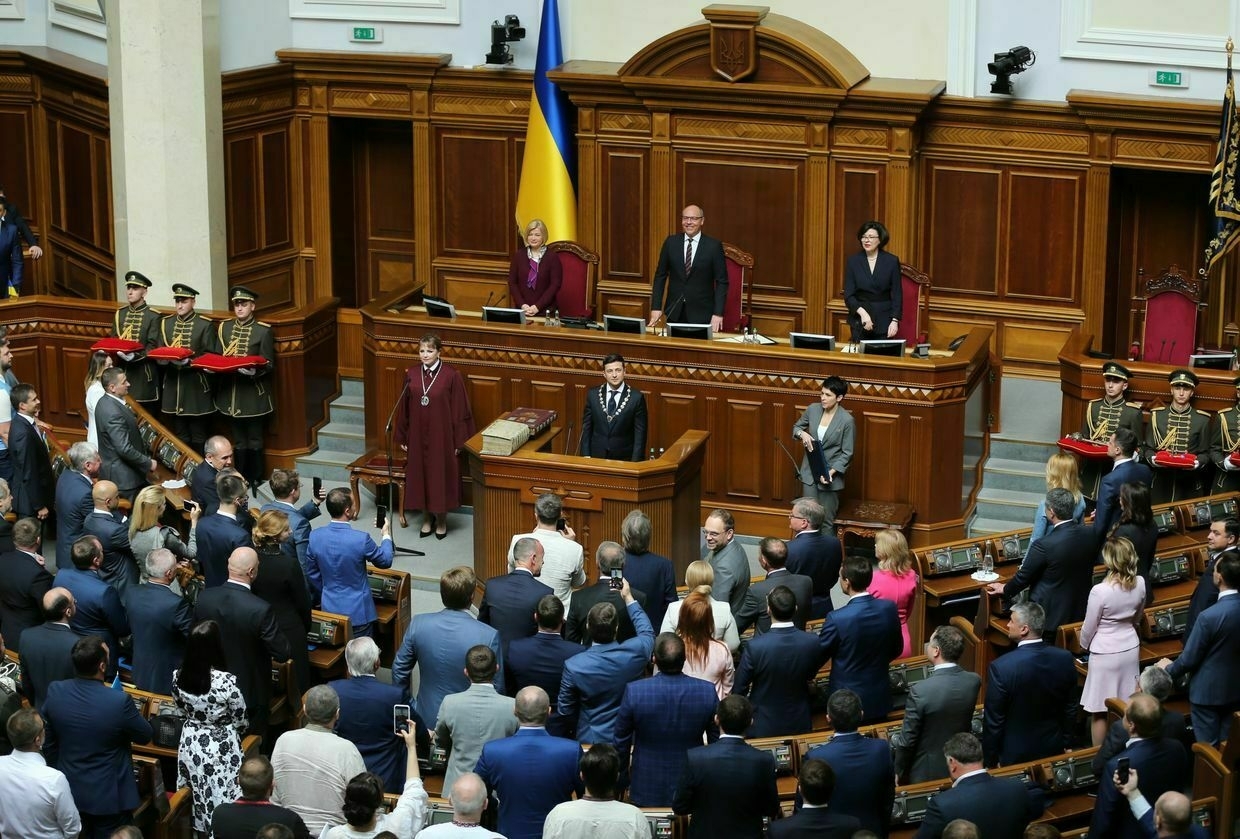
Editor’s note: This is issue 31 of Ukrainian lawmaker Yaroslav Zhelezniak’s weekly “Ukraine Reforms Tracker” covering events from June 17–June 24, 2025. The digest highlights steps taken in the Ukrainian parliament related to business, economics, and international financial programs.
The Kyiv Independent is republishing with permission.
Benchmarks and soft commitments with the IMFNABU detective wins contest to lead Ukraine’s Bureau of Economic Security
On June 24, the recruitment commission selected National Anti-Corruption Bureau of Ukraine (NABU) detective unit head Oleksandr Tsyvinskyi as the next director of Ukraine’s Bureau of Economic Security (BES), following a vote by the commission’s three international members.
Tsyvinskyi has served at NABU since 2015 and currently leads its detective division. He is known for his key role in the “Clean City” operation targeting corruption in Kyiv city’s land and budget sectors.
No other candidate secured the legally required support from the commission’s international members. As a result, Tsyvinskyi’s name alone will be submitted to the prime minister and the Cabinet of Ministers must finalize the appointment within 10 days.
Ukraine’s Cabinet moves to add Hr 412 billion for defense, Hr 449 billion in total in major 2025 budget revision
Ukraine’s Cabinet of Ministers has approved amendments to the 2025 state budget to allocate an additional Hr 412.4 billion ($9.9 billion) for defense spending, amid a widening fiscal gap in the security sector.
The total proposed adjustment increases expenditures by Hr 448.8 billion ($10.8 billion), while cutting other programs by Hr 51.3 billion. Net spending would rise by Hr 397.5 billion ($9.5 billion).
To balance the revision, the government plans to raise Hr 147.5 billion ($3.5 billion) in additional revenue and borrow another Hr 250 billion ($6 billion) through debt operations.
The draft legislation is expected to be submitted to parliament shortly.
Obligations to the EUUkraine passes long-delayed ARMA reform
After months of political delays, the Ukrainian parliament has passed bill #12374-d on reforming the Asset Recovery and Management Agency (ARMA) in its entirety, with 253 votes in favor.
The law introduces new requirements for the agency’s leadership, mandates a selection process involving international experts, and strengthens transparency in asset management and transfer controls. Passage of the reform is a key benchmark under the EU’s Ukraine Facility program and unlocks a 600 million euros ($701 million) disbursement.
However, implementation will be delayed. Yuliia Tymoshenko and members of her Batkivshchyna faction have submitted a resolution to block the law, preventing the speaker of parliament from signing it until July 15.
However, no votes were held on other legislative commitments under the program that were due by the end of Q2. The next parliamentary session is scheduled for July.
Other key economic issuesUkraine’s vice prime minister formally named as corruption suspect
Ukraine’s National Anti-Corruption Bureau (NABU) and the Specialized Anti-Corruption Prosecutor’s Office (SAPO) have served a formal notice of suspicion to Vice Prime Minister and National Unity Minister Oleksii Chernyshov, accusing him of abuse of office and accepting improper benefits.
Chernyshov announced his visit to NABU in a Facebook post earlier the same day. He is linked to an ongoing investigation into a Kyiv real estate development case involving land allocations
As NABU claims, “a Kyiv-based property developer was obliged to give the state a share of the future apartments proportionate to the value of the land received from a state-owned enterprise. To minimize this share, the land and buildings on it were undervalued by nearly five times, with the discrepancy between this appraisal and the market value exceeding Hr 1 billion ($24 million).
As a “reward” for successfully setting up the scheme, the developer provided substantial discounts on apartments in completed residential complexes. With these discounts, the price per square meter ranged from Hr 1,000 ($24) to Hr 8,000 ($192), while the minimum market price was around Hr 30,000 ($720) per square meter.
‘Alarms went off everywhere’ — Explosions reported in Moscow, Russia claims 50 Ukrainian drones downed across countryExplosions were reported in Moscow overnight on June 26, prompting airport closures, as Mayor Sergey Sobyanin claimed that two drones were shot down.The Kyiv IndependentVolodymyr Ivanyshyn
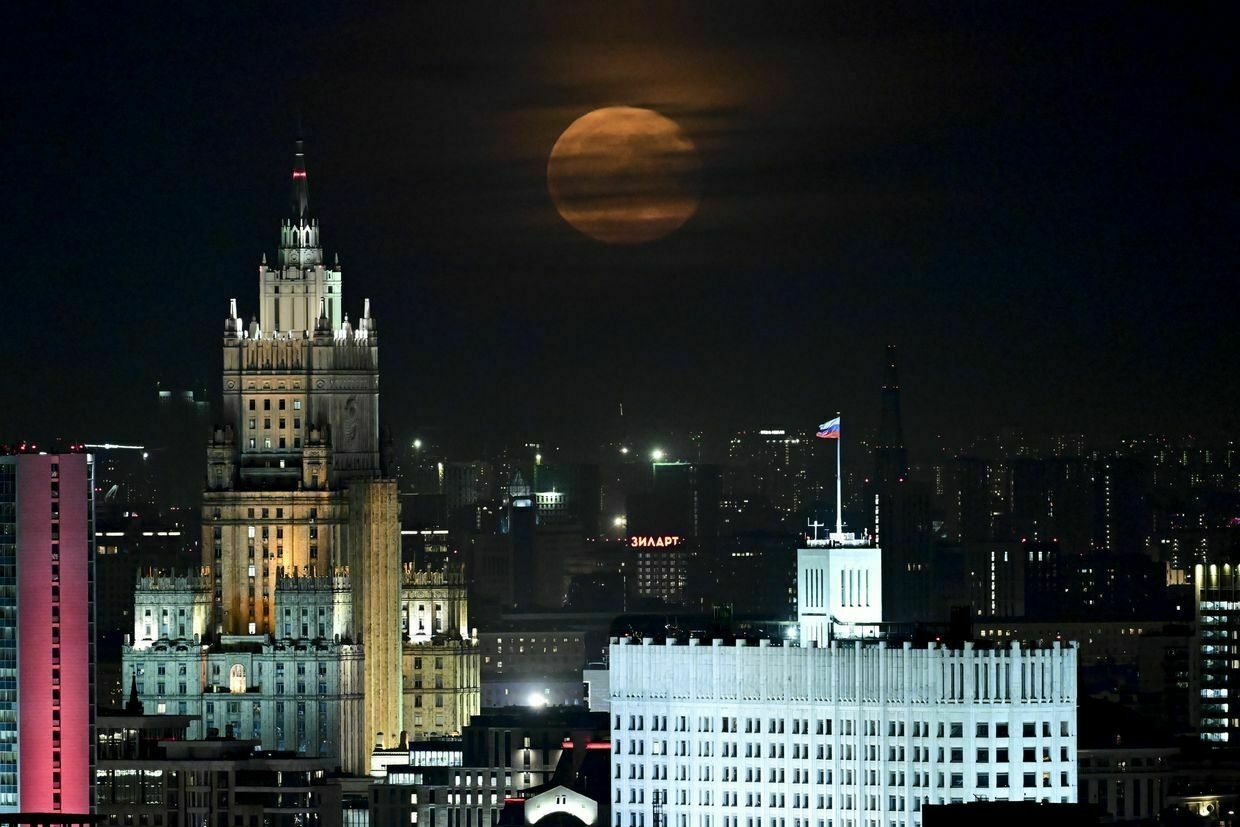
-
Over 20,000 Russian soldiers prosecuted for refusing to fight in Ukraine, media reports
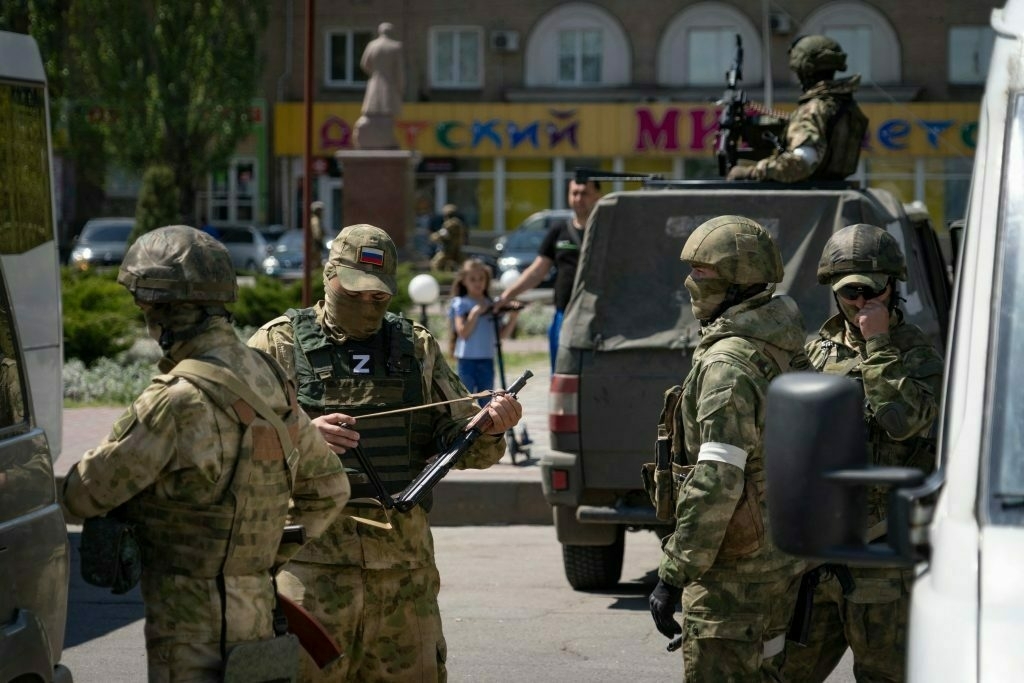
More than 20,000 Russian soldiers have been prosecuted for refusing to fight in Ukraine, a Russian independent media outlet Mediazona reported on June 26, citing online data from military courts.
As of late May, Mediazona had documented 20,538 such cases since September 2022 (when the Kremlin announced a first wave of partial mobilization) compared to 10,025 cases reported as of June 2024.
Of these, 18,159 were cases of soldiers going AWOL, 1,369 cases of failure to comply with an order, and 1,010 cases of desertion.
According to Mediazona, 17,721 of the accused have already been sentenced.
The Insider reported that Moscow uses a systematic program of “gulag-style” abuse directed at its soldiers in Ukraine in order to “maintain order” and punish perceived offenders.
Reports of Russian soldiers being abused by commanders and fellow troops have emerged since the full-scale war against Ukraine began.
Moscow has only intensified its war effort despite calls by Kyiv, the U.S., and European partners for an unconditional ceasefire as a first step toward a peace deal.
According to President Volodymyr Zelensky, Russia recruits around 40,000-45,000 men for its military every month.
Although Russia did go through phases of mobilization and has made great use of its prison population, most new recruits have for a while been volunteer contract soldiers, lured in by one-time signup bonuses often more than several years' average salary in poorer regions of Russia.
In late 2024, Russian President Vladimir Putin signed a decree to increase the size of Russia’s Armed Forces to about 2.4 million, including 1.5 million military personnel.
’50,000 Russian troops pinned down’ — Ukraine halts advance in Sumy Oblast, summer offensive ‘faltering,’ Syrskyi says“This year’s wave of the enemy’s ‘summer offensive’ from Russian territory is faltering,” Commander-in-Chief Oleksandr Syrskyi said. The Kyiv IndependentTim Zadorozhnyy
The Kyiv IndependentTim Zadorozhnyy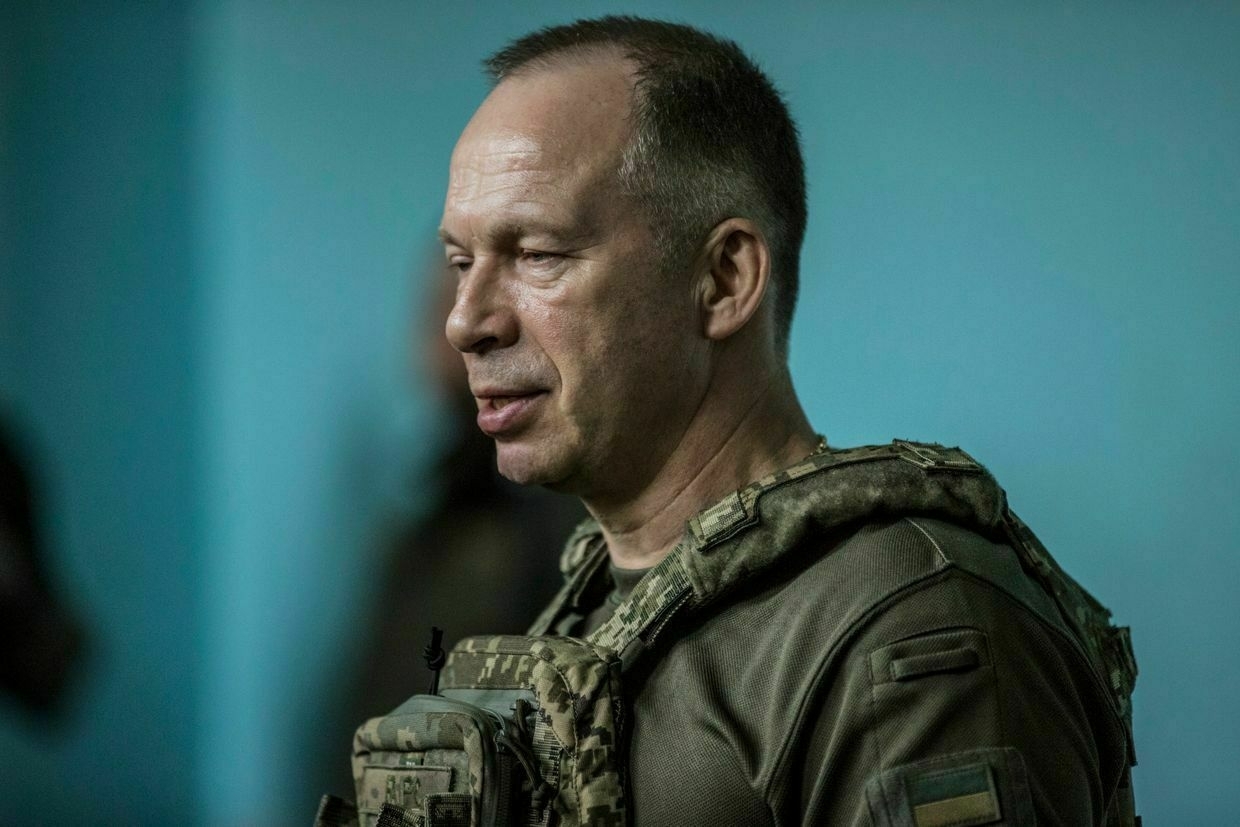
-
Russia still hasn't declared war on Ukraine, and doing so could spell Putin's demise, experts say
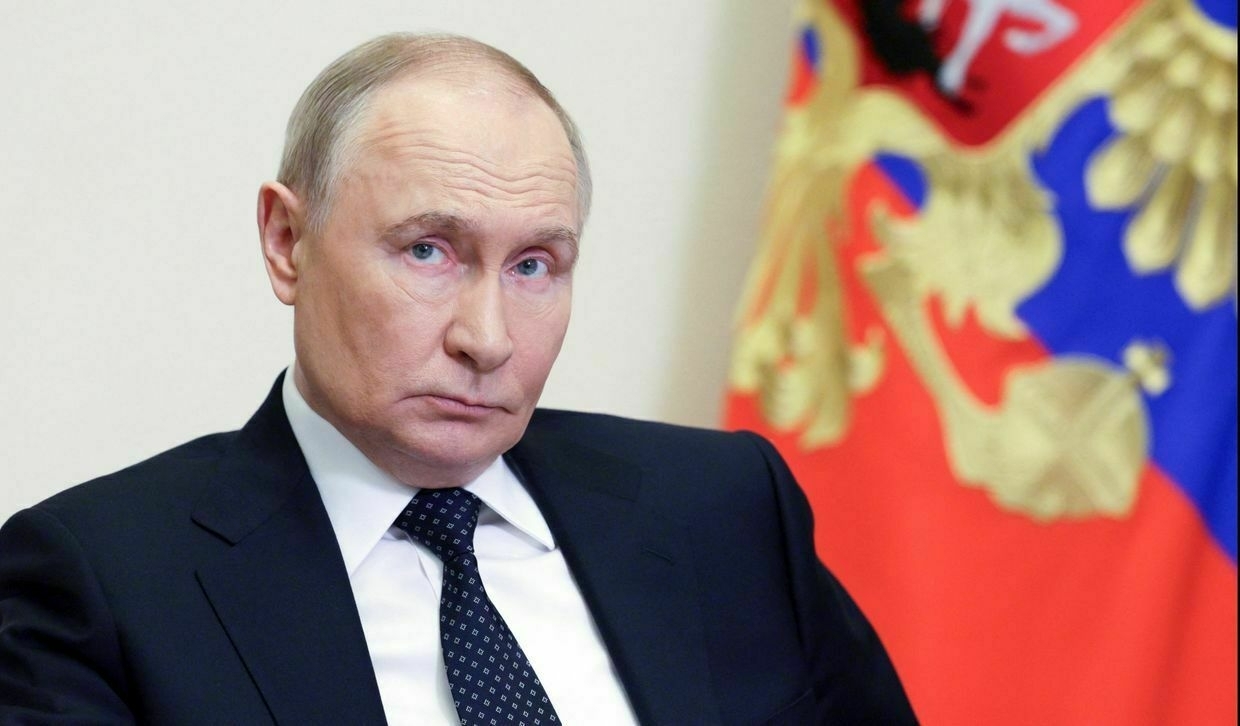
Despite suffering over 1 million casualties, pounding Ukrainian cities nightly with missiles and drones, and committing countless war crimes, one startling fact about Russia’s full-scale invasion remains — Moscow has yet to officially declare war on Ukraine.
In February 2022, Russian President Vladimir Putin described what he believed was going to be a swift victory and the capture of Kyiv within days as a “special military operation."
Nearly three-and-a-half years later, the Kremlin is stuck with the term, caught in a quandary of its own making — waging by what any measure is a war, while being unable to call it one for fear of a domestic backlash.
“Putin has protected himself in this war by separating the direct effects of the war from the majority of the Russian population.”
A formal declaration of war would have far-reaching implications for the country's industry and economy, as well as allowing the Kremlin to launch a full mobilization.
But partial mobilization announced in September 2022 led to the only widespread protests against the war inside Russia, making clear to Putin that announcing anything more would cause him serious political problems.
"Putin has protected himself in this war by separating the direct effects of the war from the majority of the Russian population," Karolina Hird, Russia deputy team lead at the Institute for the Study of War, told the Kyiv Independent.
"But as soon as that starts to spill over and actually be felt by more of the Russian domestic population, that's when he gets into more trouble."
According to reports, there has recently been unrest within the Kremlin after Ukraine's audacious Operation Spiderweb, with hardliners reportedly pressuring Putin to make a formal war declaration that would permit true retaliation and escalation, and give the Russian government sweeping authority to shift the country fully onto a wartime footing.
But experts who spoke to the Kyiv Independent say this is unlikely, arguing that for all intents and purposes, Russia's industry and economy are already on a wartime footing even if Kremlin officials deny this, and that Putin simply can't risk his hold on power by launching what would be a deeply unpopular mobilization.
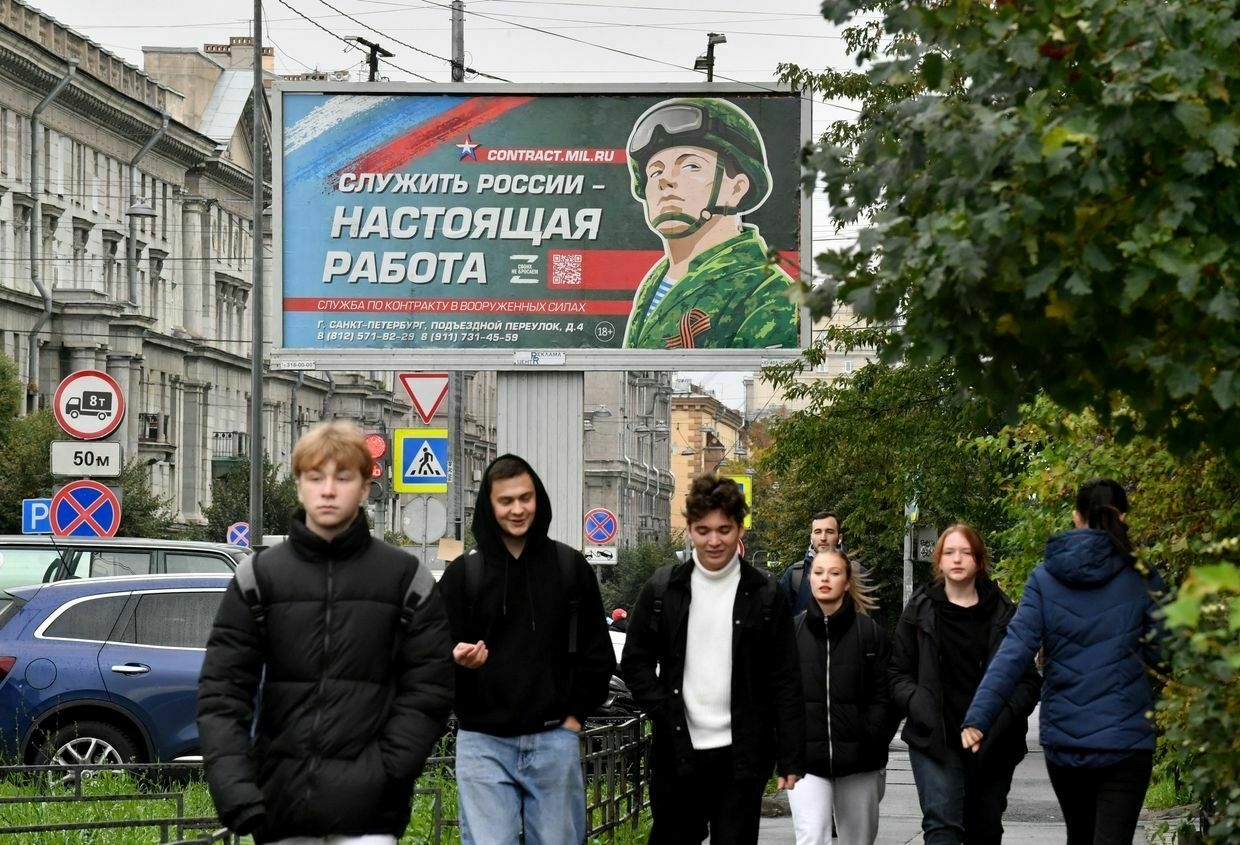
Youths walk past a billboard promoting contract army service with an image of a serviceman and the slogan “Serving Russia is a real job” in Saint Petersburg, Russia, on Sept. 29, 2022. (Olga Maltseva / AFP via Getty Images) 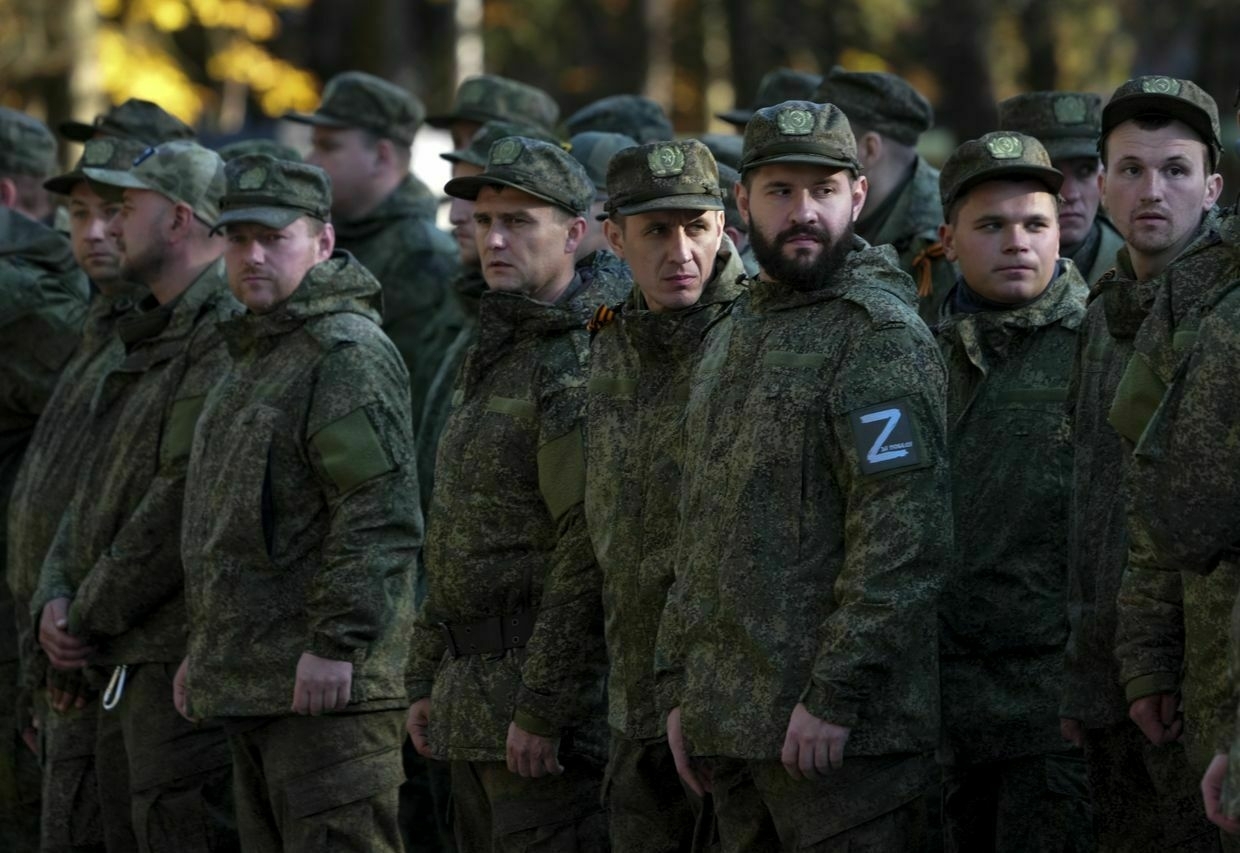
Russian citizens drafted during the partial mobilization are seen being dispatched to combat coordination areas after a military call-up for the Russian invasion of Ukraine in Moscow, Russia, on Oct. 10, 2022. (Stringer / Anadolu Agency via Getty Images) What would a Russian declaration of war mean?The two major factors that would come into play are the Russian economy and the Russian people.
A full war footing would be a complete pivot of the economy and its workers towards defense and the production of weapons, and allow for a full mobilization to conscript the necessary manpower to use them.
The Kremlin is projected to allocate 6.3% of its GDP to defense this year — the highest level since the Cold War — yet still far below what would typically indicate a country fully mobilized for war.
By contrast, Ukraine spent 34% of its GDP on defense last year, while British military spending surpassed 50% of GDP during the Second World War.
These same figures were cited by Russian Ambassador to the U.K. Andrey Kelin in an interview with CNN last week as evidence that Russia was in fact still fighting a "special military operation," and not a war.
Experts are not convinced.
"The Russian economy is already on a war footing, and the 6.5% of GDP spent on defense for 2025 is likely an underestimation," Federico Borsari, a defense expert at the D.C.-based Center for European Policy Analysis, told the Kyiv Independent.
"Defense production in key capability segments such as drones, missiles, and armored vehicles is at full steam, with up to three worker shifts per day."
Russia has drastically upped weapons production in recent months as it drains its stockpiles.
According to data from Ukraine's military intelligence (HUR) shared with the Kyiv Independent earlier this month, production of ballistic missiles, for example, has increased by at least 66% over the past year.
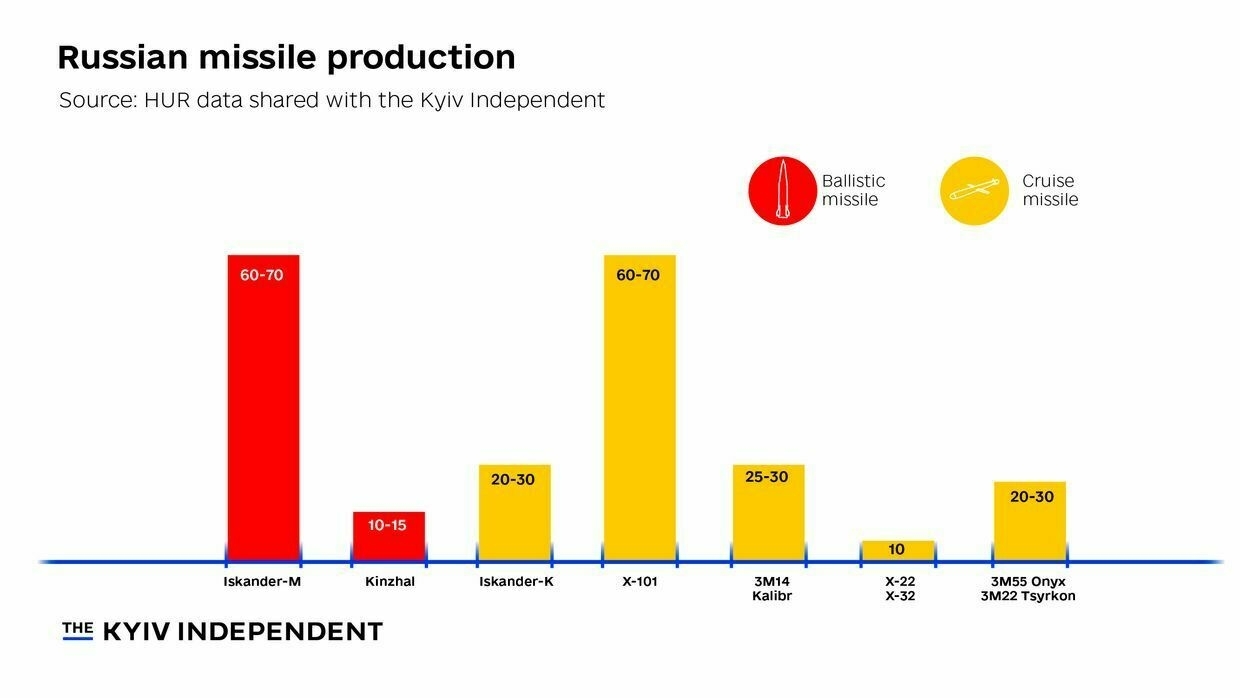
Russian missile production per month. (The Kyiv Independent) Hird agrees with Borsari's analysis, saying the massive boost in defense manufacturing is a sign that, despite Russia's claims that it isn't at war, its depleted stockpiles are a pretty clear sign they are.
"It's not like Russia has a secret reserve of weapons in the background that it can somehow kind of unlock and unleash on Ukraine," she said.
"Russia is already fighting an all-out war in Ukraine, so there's actually not much more that can be done on their side."
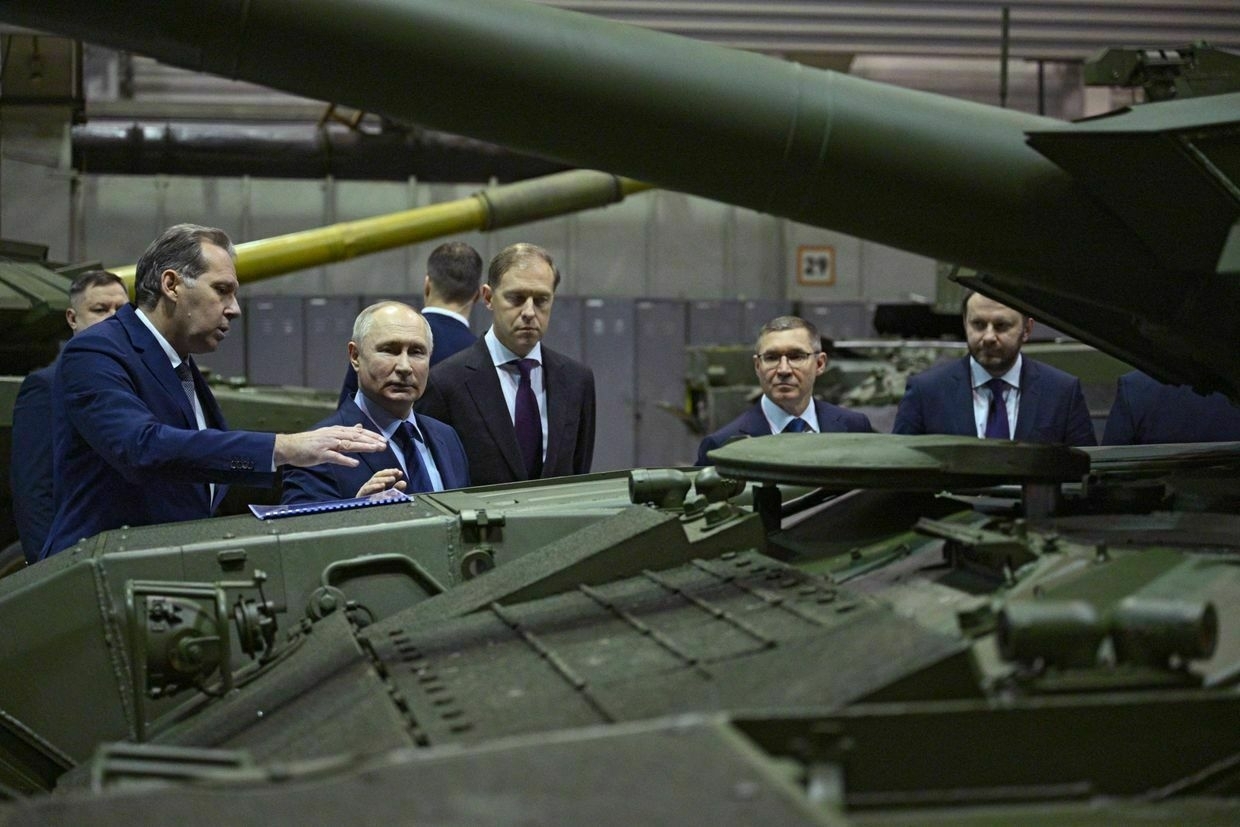
Russia’s President Vladimir Putin visits Uralvagonzavod, the country’s main tank factory in the Urals, in Nizhny Tagil, Russia, on Feb. 15, 2024. (Ramil Sitdikov / Pool / AFP via Getty Images) 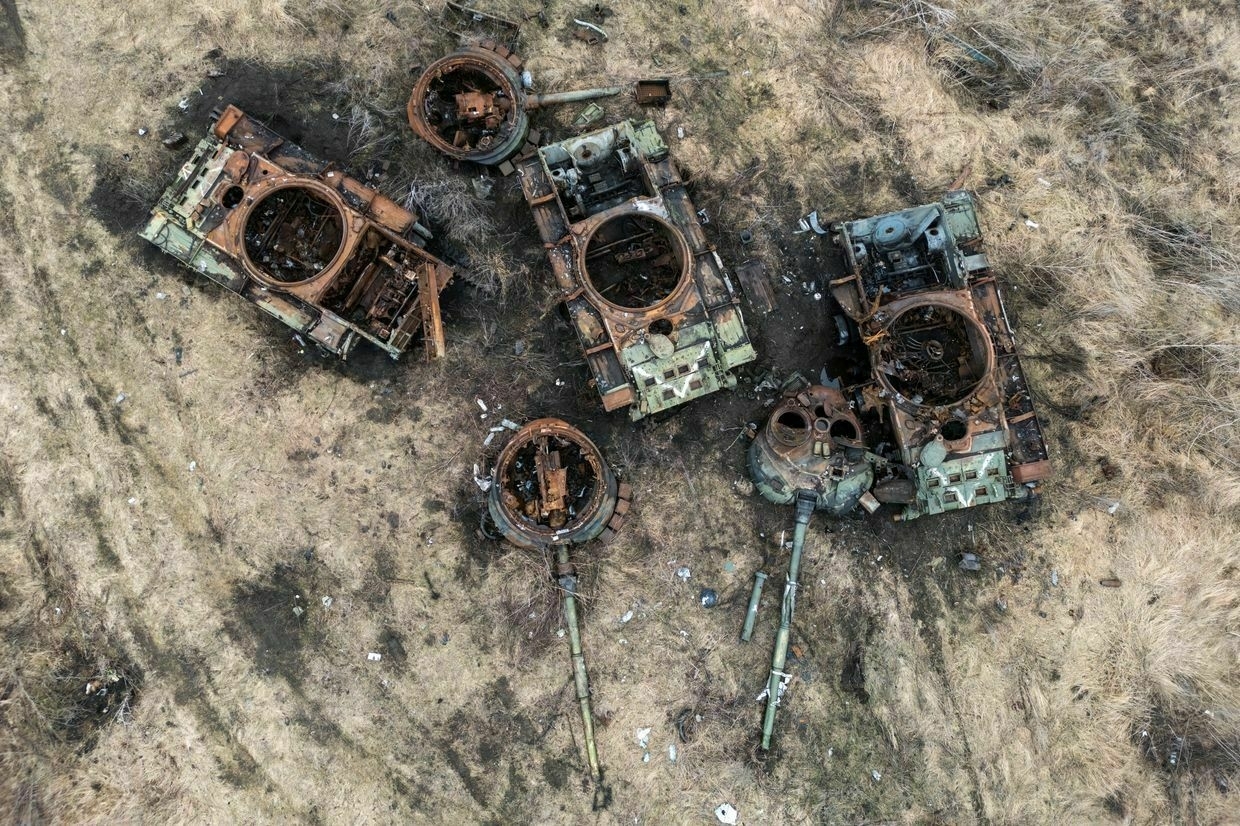
Destroyed Russian tanks lie in a field near the village of Bohorodychne in Donetsk Oblast, Ukraine, on Feb. 13, 2024. (Maxym Marusenko / NurPhoto via Getty Images) The manpower issueThe one crucial area in which a declaration of all-out war against Ukraine could significantly boost Russia's ability to wage war is manpower.
Throughout the full-scale invasion of Ukraine, Putin has steered clear of a full mobilization, conscious of the domestic backlash it would create.
Instead, the Kremlin has simply paid people to fight, offering huge sign-up bonuses to encourage people to volunteer, a method which, up to now has managed to replenish the huge losses the army has incurred, but which many experts think is unsustainable.
"In terms of manpower, Russia still has a sizeable population pool it can draw from, at least in the near term, especially in peripheral regions," Borsari said.
"However, this pool may not be sufficient to sustain the current pace of losses, with thousands of casualties each week, beyond the first half of 2026."
With no end to the war in sight, that looming deadline will likely pose a huge dilemma for Putin — how to find enough men to fight, without losing his hold on power?
"They are aware of the massive risks involved and Putin is rather risk-aversive," Ryhor Nizhnikau, a Russia expert at the Finnish Institute of International Affairs, told the Kyiv Independent.
"Full mobilization is expected to have a destabilizing effect on Putin’s regime, the already ailing Russian economy, and it will certainly unbalance the current public consensus on the war."
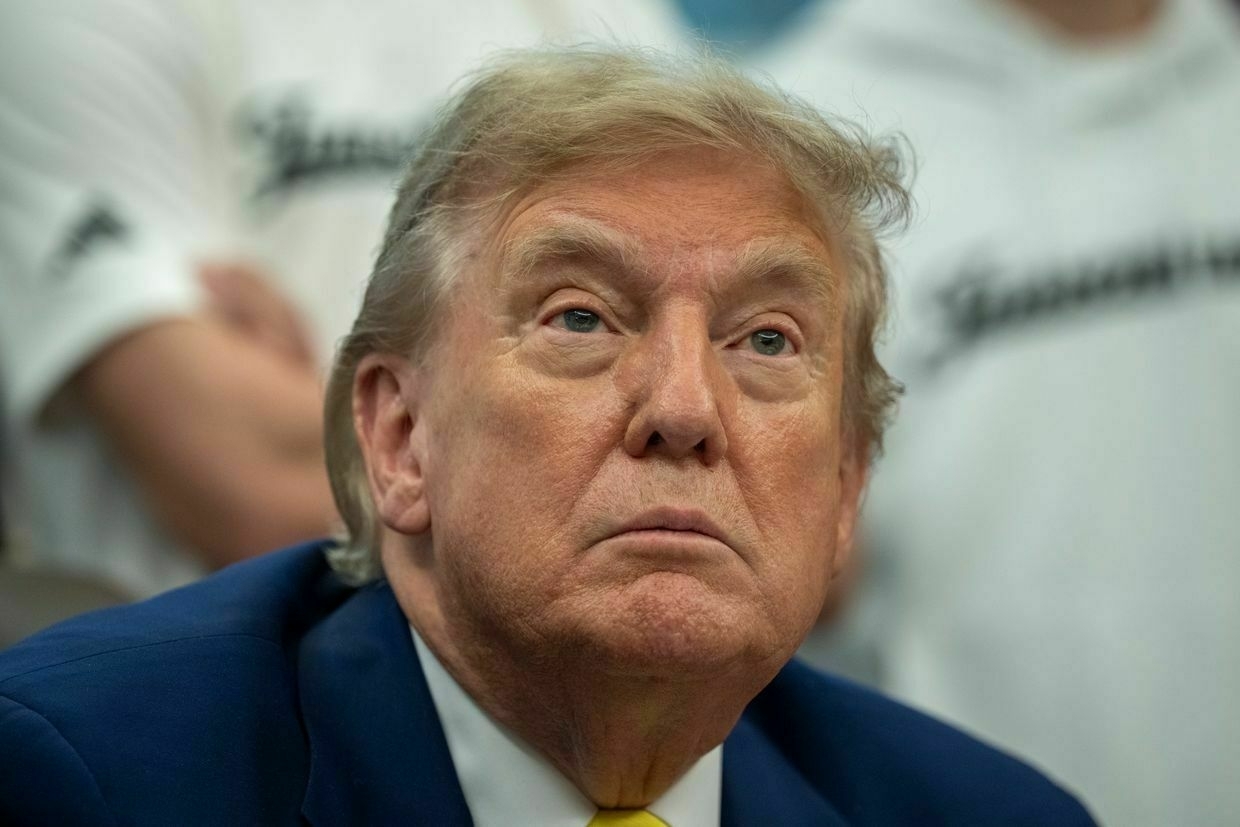
US President Donald Trump in the Oval Office of the White House in Washington, DC, U.S., on June 18, 2025. (Ken Cedeno / UPI / Bloomberg via Getty Images) The geopolitical aspectDeclaring war on Ukraine would also have international ramifications for Putin, Shea said.
"He will no longer be able to pretend to (U.S. President Donald Trump and (U.S. Special Envoy Steve) Witkoff that he is interested primarily in a partial victory by taking only the Donetsk region and Crimea," he said.
"He also said in St Petersburg last week that Russia posed no threat to NATO and that NATO was rearming for nothing. But a formal Russian declaration of war will convey the entirely opposite message."
Putin insists the Russian economy is fine, but Kremlin officials say otherwiseIn a rare public sign that all is not well in Russia, two high-ranking Moscow officials last week issued separate warnings about the state of the country’s economy. Russian Central Bank Governor Elvira Nabiullina and Economy Minister Maxim Reshetnikov both highlighted that amid the Kremlin’s full-scale war against Ukraine, the tools Moscow once relied on to maintain wartime growth are nearly exhausted. Almost immediately, Russian President Vladimir Putin on June 20 dismissed the concerns, clai The Kyiv IndependentTim Zadorozhnyy
The Kyiv IndependentTim Zadorozhnyy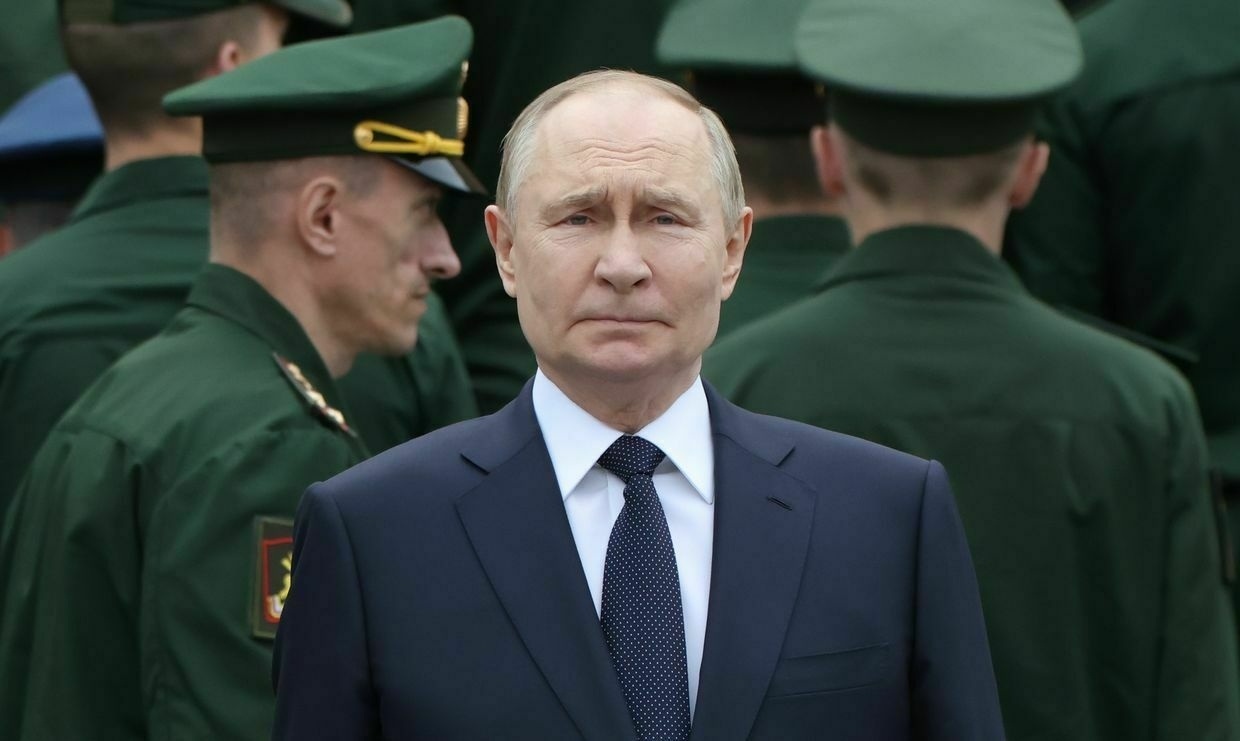
-
The Kyiv Independent reaches 20,000 paying members — thanks to our global community
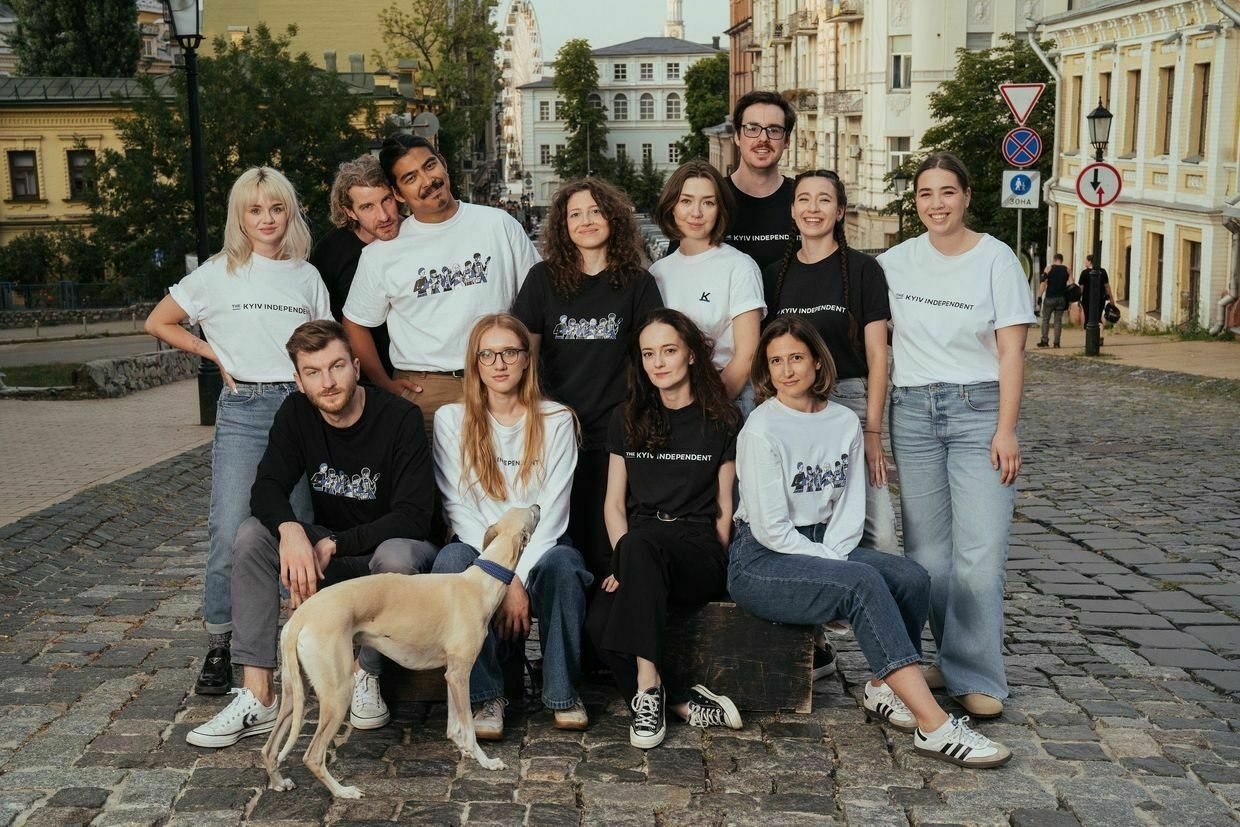
The Kyiv Independent has officially reached 20,000 paying members, becoming the first Ukrainian media outlet in history to cross this milestone.
This is not just a number — it’s a reminder that people around the world believe in the importance of independent journalism from Ukraine, and are willing to stand behind it.
When Russia launched its full-scale invasion in February 2022, the Kyiv Independent knew how important it would be to keep its reporting free and accessible — to show the world what was really happening on the ground.
More than three years later, that mission hasn’t changed. That´s why, in May, the Kyiv Independent launched a campaign to ensure that no matter what happens, it would be able to continue showing the threat Russia poses to the world, and the consequences of when it is allowed to do so unchecked.
In less than one month, 2,400 people became new members of the Kyiv Independent community.
- Support came from more than 60 countries, with the highest number of new members joining from North America and Europe.
- To help members feel more connected, an updated interactive community map was unveiled — since the update, over 700 people have added their pins to show where they’re supporting from.
- A live campaign counter allowed every person who joined to see their impact in real time — and know they were contributing to something bigger.
- Visitors to the Kyiv Independent website saw country-specific messages during the campaign — small touches of language or culture that helped people feel seen, no matter where they were coming from.
Since its founding in late 2021, more than 50,000 people from over 130 countries have contributed financially to support the Kyiv Independent — either through one-time donations or recurring membership. In 2024, reader contributions accounted for 70% of revenue.
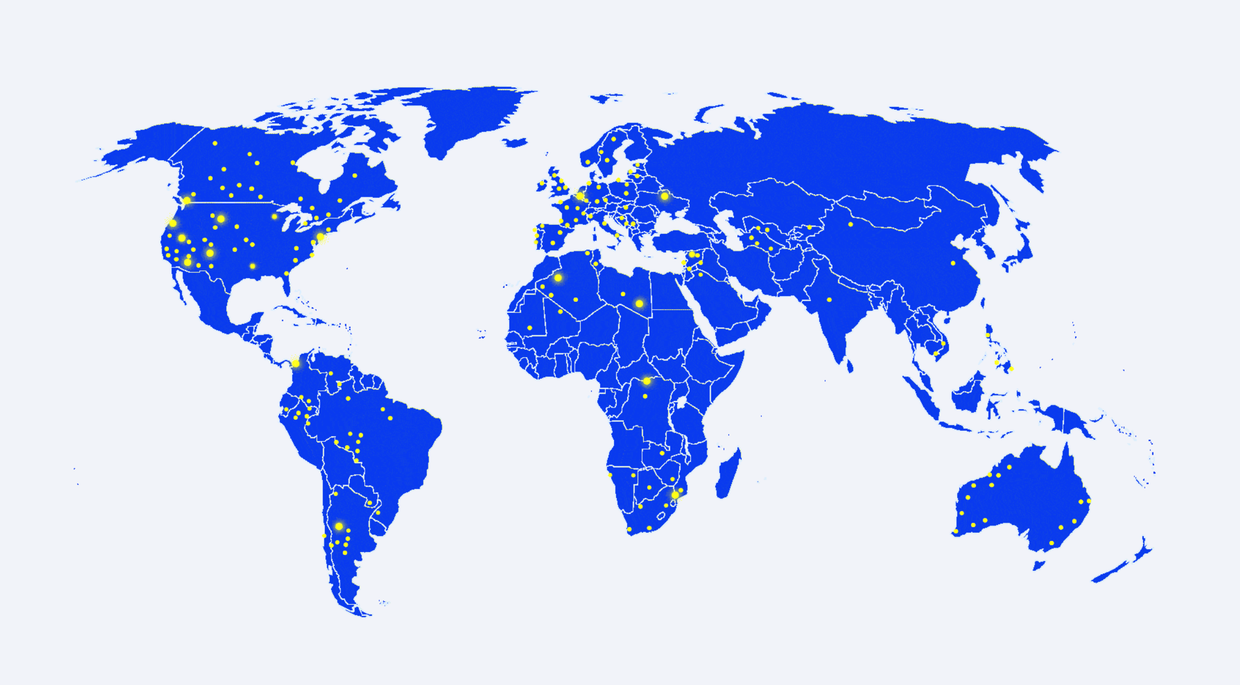
A map of The Kyiv Independent supporters from around the world. (The Kyiv Independent) “The journey to twenty thousand took us 3.5 years and thousands of hours of work by the most talented people I know. It’s a testament to our journalism and our mission to provide high-quality reporting from Ukraine to the world.” said Zakhar Protsiuk, COO of The Kyiv Independent. “These twenty thousand people are our secret power that allows us to do our work and grow.”
All of this is a powerful reminder of what a committed community can do, and how reader-funded journalism can thrive, even in the hardest conditions.
The team at the Kyiv Independent is incredibly grateful to everyone who joined, gifted a membership, or shared the campaign. This achievement belongs to all of them — and it shows what’s possible when journalism is powered by community.
For more information, please contact: news@kyivindependent.com
-
They are HOME! Ukraine has RETURNED the captive HEROES
-
Facing manpower shortage, Ukrainian brigade turns to women in first-ever female recruitment drive
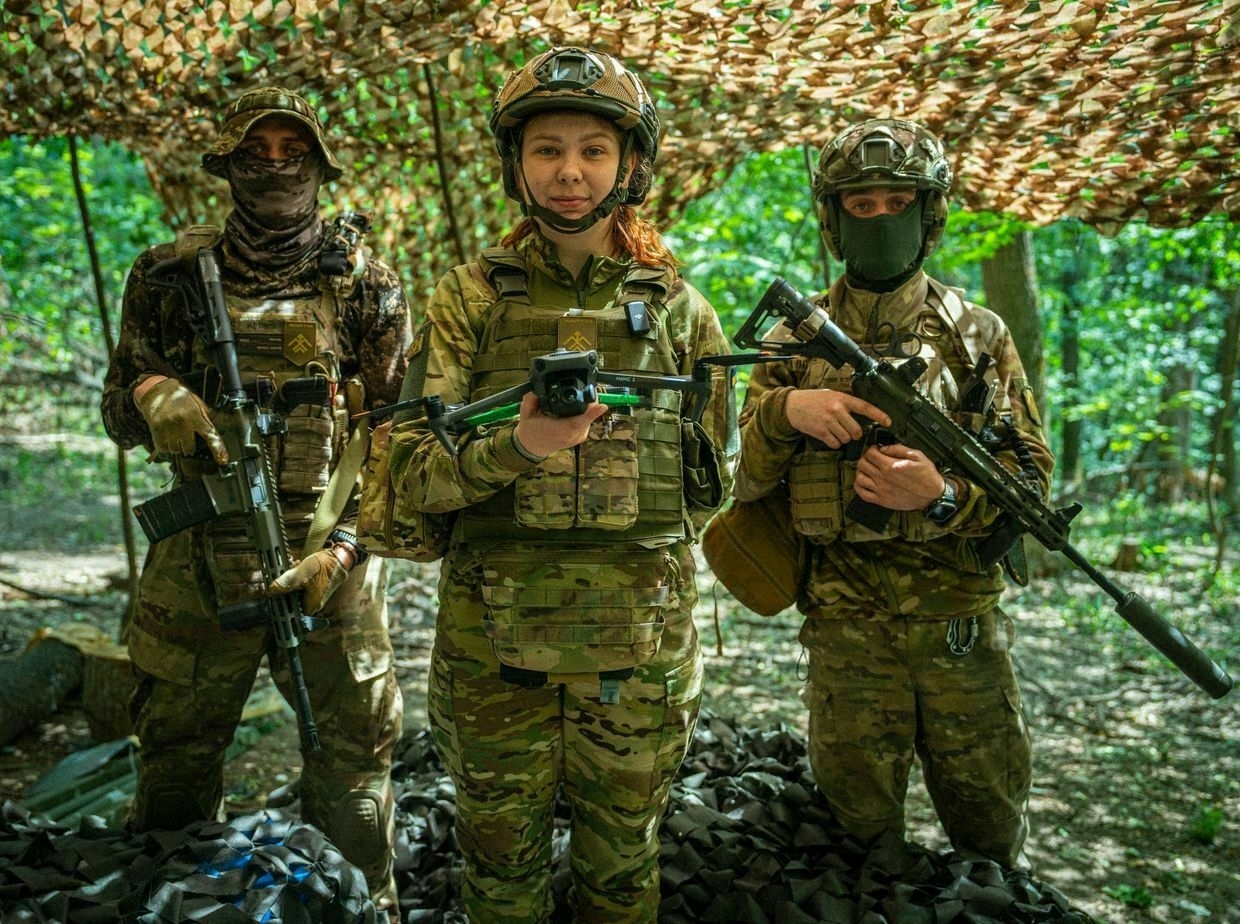
Editor’s note: This article originated as a winning story idea in a vote by members of the Kyiv Independent’s community. Join our community today and join our exclusive members-only Discord channel, where you can discuss and suggest stories, ask our journalists questions, and more.
“Her strength is her mind. Her choice is Khartiia.” That was the message — written in sleek neon green script — shared across all social media accounts of Ukraine’s 13th National Guard Khartiia Brigade this May.
The short tagline headed Ukraine’s first-ever military recruiting campaign targeting women, launched by the brigade to attract them to tech roles in the army.
Around 70,000 women are serving in Ukraine’s nearly million-strong military as of 2025, according to the Defense Ministry. But military service largely remains an unwelcoming environment for female soldiers, who face Soviet-rooted prejudice, limitations on education, career growth, and access to combat positions.
Some progressive units like Khartiia are working to change the situation, in particular by updating internal practices to better integrate women into units. With the new campaign, Khartiia says its hope is to show women they are welcome and can thrive in different positions.
As Ukraine continues to face critical shortages in manpower to fight Russia, the military needs all the help it can get in attracting new recruits.
Motivated and skilled recruitsAfter nearly 3.5 years of full-scale war, Ukraine’s military increasingly relies on mobilized, rather than volunteer, recruits, leading to units often receiving less motivated soldiers.
Since Ukraine doesn’t conscript women, female volunteers represent a highly motivated yet severely under-utilized category in the army, according to soldiers and activists.
“Motivated women are better at any job than unmotivated men,” said Alina Andreieva, a drone operator in a Khartiia’s reconnaissance unit and the key driver of the campaign.
Andreieva told the Kyiv Independent that she was “obsessed” with the idea of recruiting women since she joined the army about a year and a half ago while working as a photographer.
When in 2025, Khartiia collaborated with two non-profits, Dignitas Fund and the Dutch organization “Protect Ukraine,” to create the campaign, Andreieva and other female soldiers from Khartiia were closely involved in its development.
Another female soldier in Khartia, a 21 year old nurse by training who requested to be identified only by her callsign “Jess,” quickly became a pioneering operator of ground robotic systems within months of joining the brigade.
“I quickly learned basic things like soldering and assembling communication kits for our drones and figured out how the drones worked (and was then able to) propose new ideas — different flight controllers and what we could connect to them to make it informative,” she told the Kyiv Independent in a video interview.
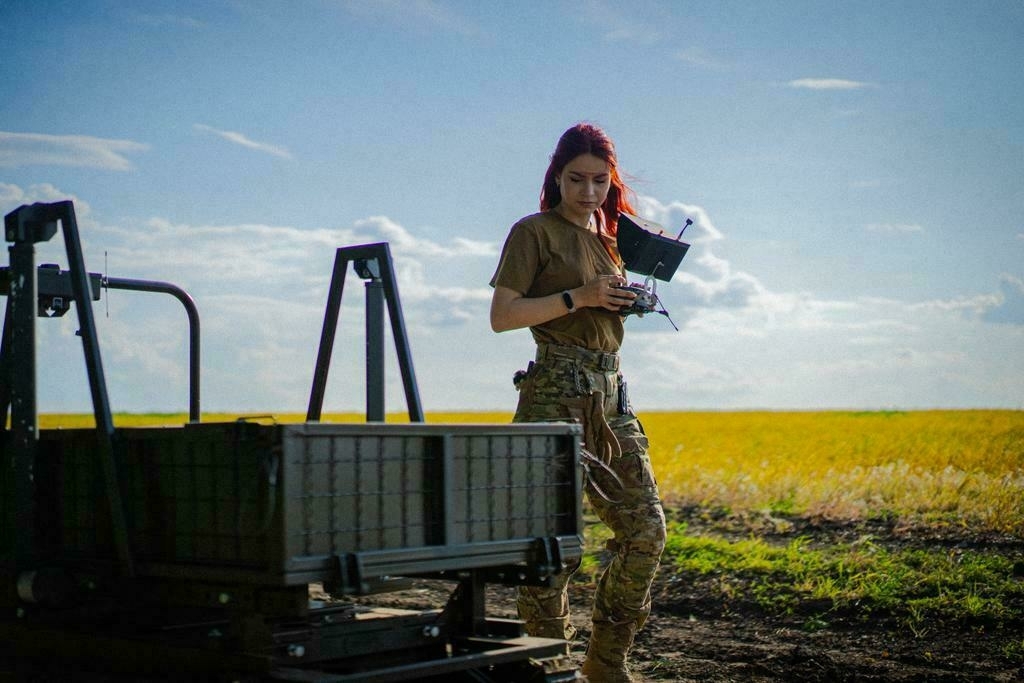
‘Jess’, an operator of Khartiia’s Unmanned Ground Vehicle, prepares for a mission in unspecified location, Ukraine on an unspecified date. (X/Khartiia Brigade) The tech jobs that Khartiia invites women to fill include drone and ground robotic systems operators, electronic warfare and intelligence specialists, and ISTAR (Intelligence, Surveillance, Target Acquisition, and Reconnaissance) dispatchers, involved in a NATO approach towards planning combat operations.
“We really need women in STEM,” said Sofiia Pryduvalova, 30, who does public relations for Khartiia and who co-developed the campaign. “There are many of them (in Ukraine), and they could make the brigade so much stronger.”
Progressive cultureKhartiia, well-known for its incorporation of technology and NATO standards into its workflow, became a flagship of the military corp reform together with the 12th Special Forces Azov Brigade in 2025.
Since its formation in 2022, Khartia has stood out in Ukraine’s post-Soviet military, with its progressive management style cultivating a more welcoming atmosphere for women.
Pryduvalova shared her and her friends' disheartening recruitment experiences, saying that some of them abandoned their plans to join certain units as a result.
“There are brigades that consciously discourage women from joining them, explicitly saying so,” Pryduvalova said.
“The time is ripe for women who want to take matters into their own hands.”
All the women from Khartiia interviewed for this story said they feel safe in the brigade, citing its top-down efforts to modernize and treat every soldier fairly, regardless of gender. Women of the brigade say they also frequently collaborate to advocate for further changes.
"I saw that an unbiased attitude towards women was fostered in recruits even during training," "Jess" said about one of her training courses with the brigade.
"Khartiia was the only brigade at the time (when I was enlisting in 2023) that considered women for a combat role," Andreieva said. As of 2025, around 5,500 women are serving in the Ukrainian army in front-line combat roles, compared to under 5,000 in 2023, according to official data.
"The commanders always treated women equally. The priority was not gender, but how you handled the job," Andreieva added.
Campaign resultsThe results of the campaign, launched in May, aren't expected until this fall, according to Khartiia’s press officer, Volodymyr Dehtiarov.
Accounting for the initial interviews, medical commission, and at least two basic training courses provided by the National Guard and additionally by Khartiia, it can take at least three months for a non-specialized recruit to join their unit’s daily tasks.
"The results so far are not in quantity, but quality," Dehtiarov told the Kyiv Independent. Before, women who applied rarely listed specific positions they were interested in, while now, more apply for “communications” or “UAV," thanks to the campaign videos where women of Khartiia talk about their respective jobs, he said.
Dehtiarov explained that Dignitas Fund, the non-profit sponsoring the campaign, also found donors to cover the training for dozens of female recruits.
"But we need to fill hundreds of positions (in the Khartiia Brigade), and thousands in the corps (led by the Khartiia brigade commander)," he added, referencing both male and female recruits.

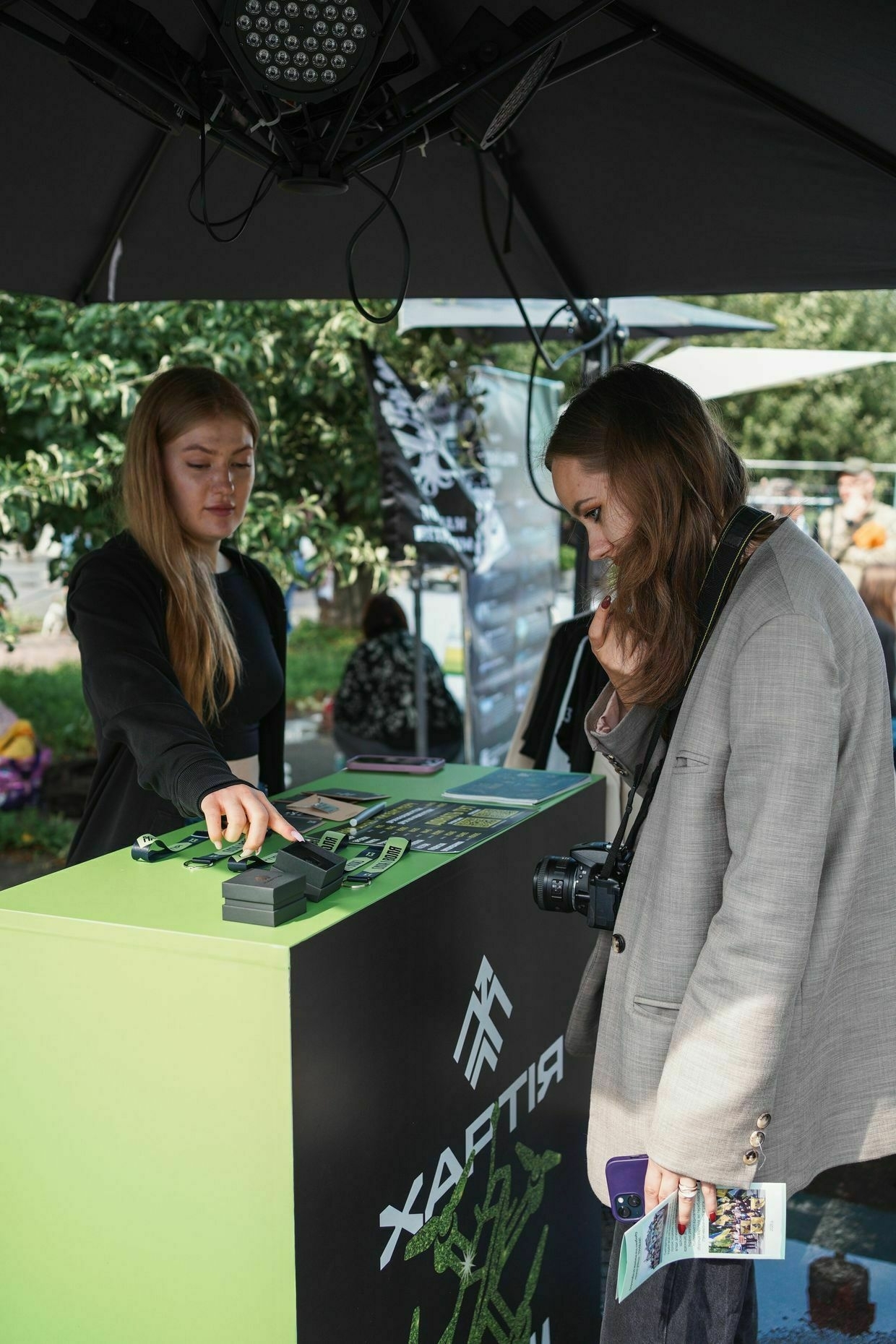
L: Khartiia serviceman Volodymyr Skoryk next to the Khartiia stand at Kurazh Bazar in Kyiv, Ukraine, on June 14, 2025. (Elena Kalinichenko/The Kyiv Independent) R: A woman stands near the Khartiia stand at Kurazh Bazar in Kyiv, Ukraine, on June 14, 2025. (Elena Kalinichenko/The Kyiv Independent) The future of women in Ukraine's armyAs female soldiers become more visible in the media, some people are concerned that it’s a step towards compulsory mobilization for women, said Kateryna Pryimak, a leader of the Ukrainian NGO Veteranka Movement which advocates for women in the army.
"It's untrue — our country is hardly ready to mobilize women forcibly," Pryimak added.
And Khartiia’s officers expect the percentage of women in the army to grow even without female conscription.
"There will be a lot of girls in the UAV (unmanned aerial vehicles) segment because (rather than physical strength,) it favors intellect, intuition, and tech skills," said Ihor Raikov, a UAV platoon commander in Khartiia’s anti-tank guided missile company, adding that he expects the number of female volunteers to increase.
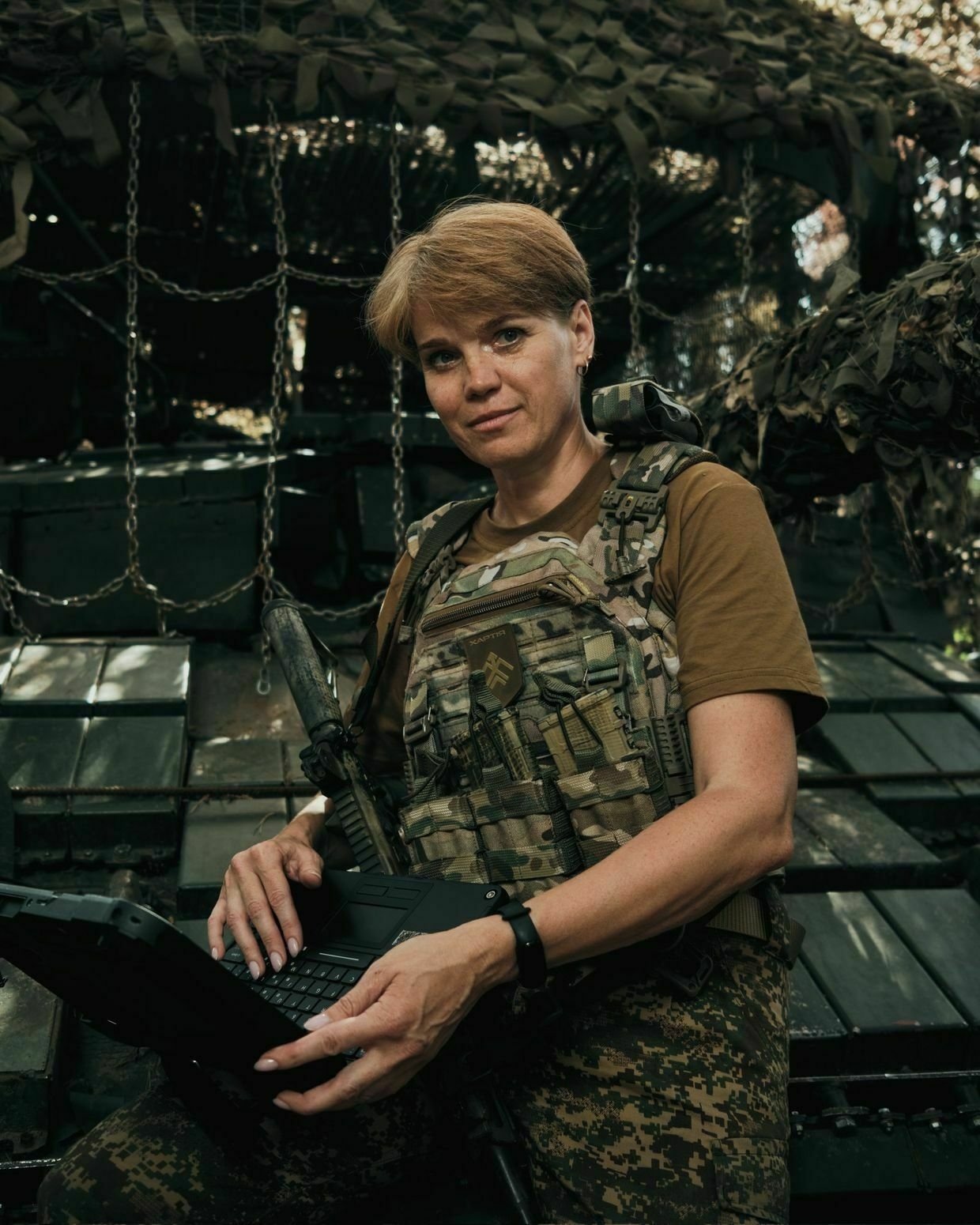
Vitalina, a soldier of Khartiia Brigade, restores communications inside a tank in an unspecified location, Ukraine, on an unspecified date. (X/Khartiia Brigade) Future female instructors, highly experienced with modern warfare, might also revolutionize military universities, where women face barriers in military education that directly affect career advancement, according to Pryimak.
"The time is ripe for women who want to take matters into their own hands," Andreieva told the Kyiv Independent in a written comment she sent from her front-line position in Kharkiv Oblast.
"Their husbands are either at war or dead; their homes have been destroyed, their loved ones killed or captured; they have seen too much to sit back idly," Andreieva said.
Note from the author:
Hello, this is Natalia Yermak. I wrote this story for you, which was selected by our members through voting on Discord. All the Kyiv Independent members are welcome to join our Discord community and help choose between several options for the story from Ukraine that you are most interested in.
If you’d like to vote on what we should cover in the future and support our work, please consider becoming our member.Women account for 21% of applicants at Ukraine’s army recruitment centersSince the army recruitment centers began operation, 42,366 Ukrainians have applied, with the highest number of female candidates coming from western Chernivtsi, Khmelnytskyi, and Ternopil oblasts.The Kyiv IndependentTim Zadorozhnyy
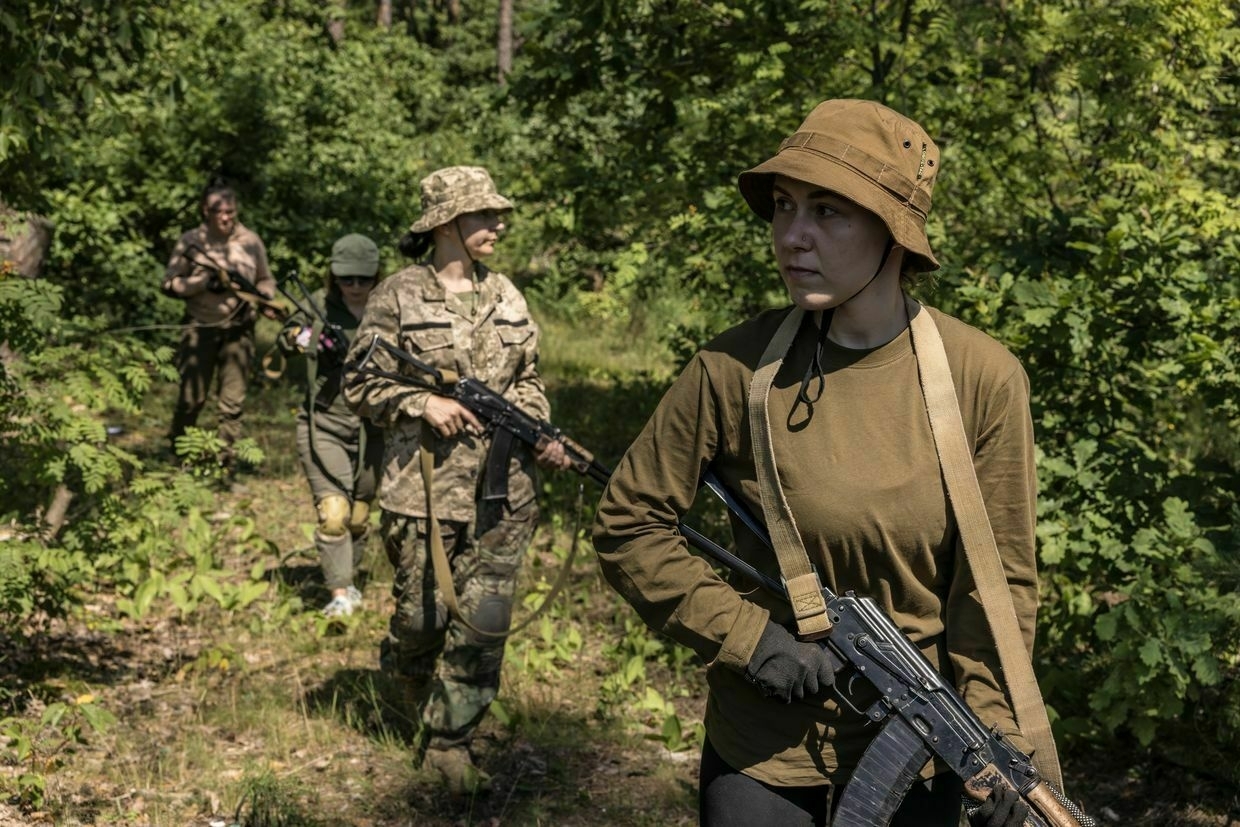
-
Ukraine, Russia conduct new POW swap under Istanbul deal
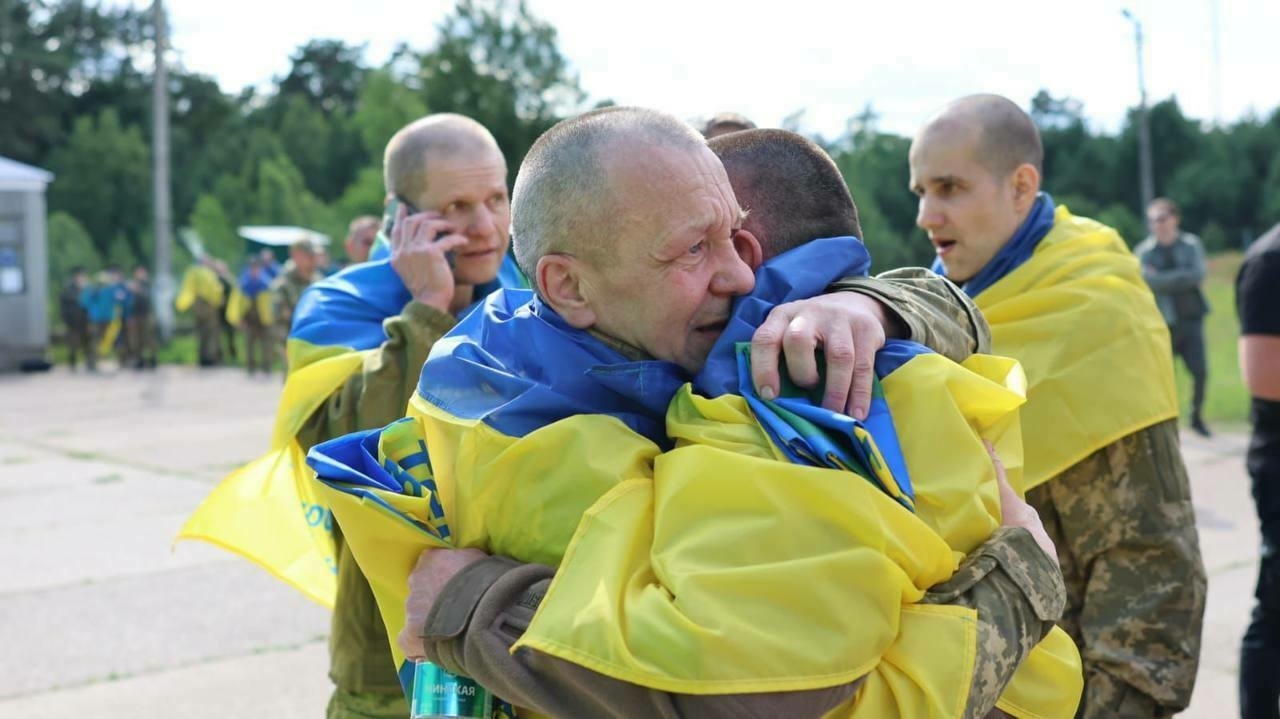
Ukraine has brought home a group of soldiers released from Russian captivity, President Volodymyr Zelensky said on June 26, marking yet another in a recent series of exchanges with Moscow.
“Today, soldiers of the Armed Forces, the National Guard, and the State Border Guard Service are returning home,” Zelensky said without revealing their numbers.
The exchange follows five similar swaps carried out in recent weeks in accordance with agreements reached between Kyiv and Moscow at the second round of peace talks in Istanbul on June 2.
As in the other recent swaps, the latest one focused on severely ill and wounded POWs and also included a group of young soldiers under the age of 25, the Coordination Headquarters for the Treatment of Prisoners of War (POWs) said.
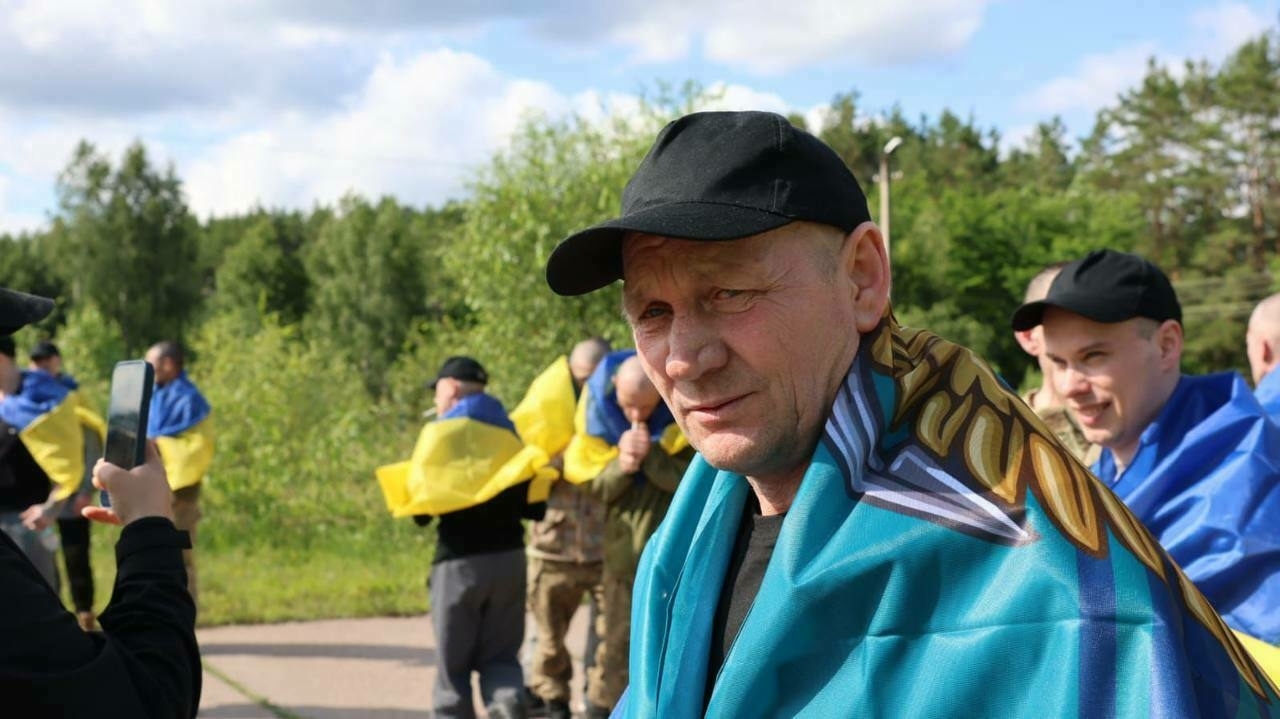
A Ukrainian soldier pictured after being released from Russian captivity on June 26, 2025. (President Volodymyr Zelensky/Telegram) 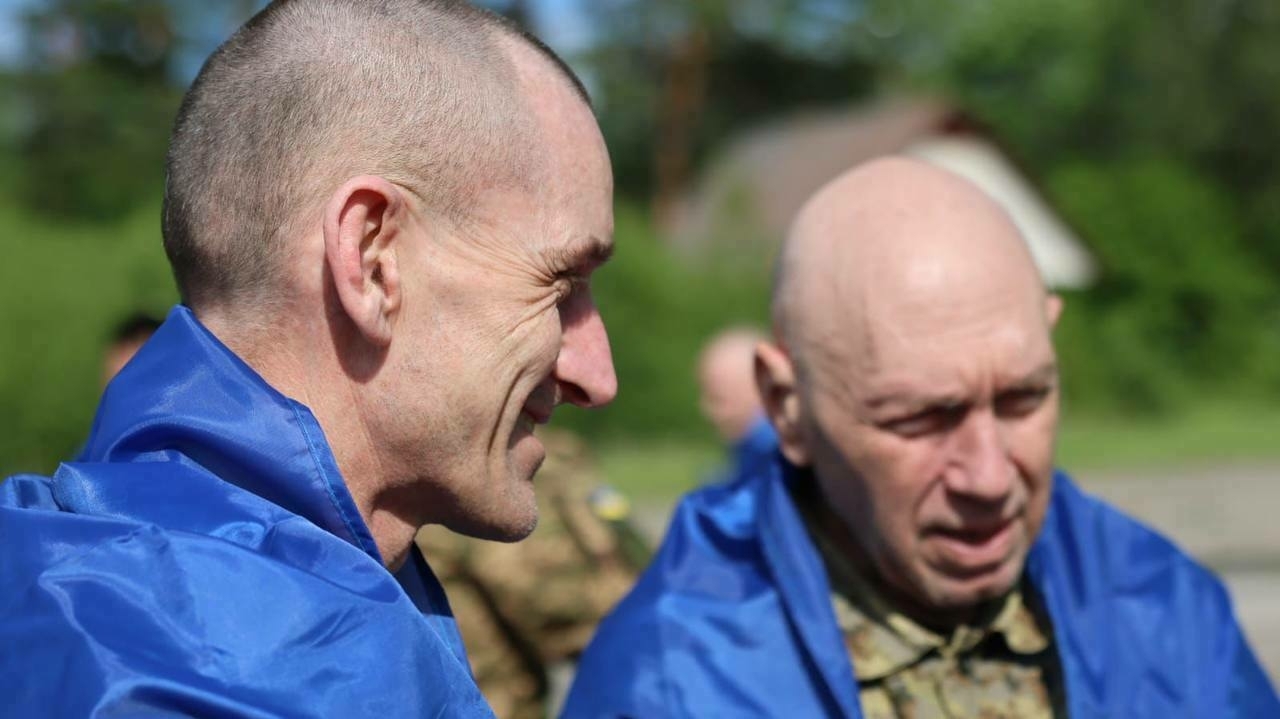
Ukrainian soldiers pictured after being released from Russian captivity on June 26, 2025. (President Volodymyr Zelensky/Telegram) 
A Ukrainian soldier pictured after being released from Russian captivity on June 26, 2025. (President Volodymyr Zelensky/Telegram) Most of those released had been in Russian captivity since 2022, with the youngest being a 24-year-old soldier taken prisoner during the battle for Mariupol. The oldest of the freed captives was 62.
The released soldiers fought elsewhere in Donetsk, Luhansk, Kherson, Kharkiv, Sumy, and Kyiv oblasts. Among those freed are several officers, according to the headquarters.
“We are doing everything possible to find each person and verify information about every name,” Zelensky said. “We must bring all our people home."
Russia’s Defense Ministry also announced a prisoner exchange with the Ukrainian side, without specifying the number of soldiers involved.
While no political breakthrough was achieved, both sides agreed to a phased exchange of prisoners and the repatriation of fallen soldiers' bodies. As part of that agreement, Russia pledged to return the bodies of up to 6,000 Ukrainian service members and citizens.
Moscow has handed over 6,057 bodies to Ukraine in several stages over the past few days. President Volodymyr Zelensky later said Ukrainian authorities have confirmed that at least 20 of the bodies Russia returned as Ukrainian were actually Russian soldiers.
According to Zelensky, Moscow is using this tactic as a tool for manipulation to obscure the scale of its military losses from the public.
The June 2 agreements came after the largest-ever POW swap in late May, when 1,000 prisoners were exchanged on each side.
Ukraine repeatedly called for a prisoner exchange in an all-for-all format, but Russia continues to reject the offer.
Explained: How Ukraine negotiates prisoner of war swaps with RussiaEven after Ukraine cut diplomatic ties with Russia in 2022, prisoner exchanges have continued as one of the few remaining channels of communication between the two countries. Negotiated behind closed doors and carried out irregularly, POW swaps — and the decisions surrounding them — have long been shrouded in secrecy. Controversies haveThe Kyiv IndependentDaria Shulzhenko
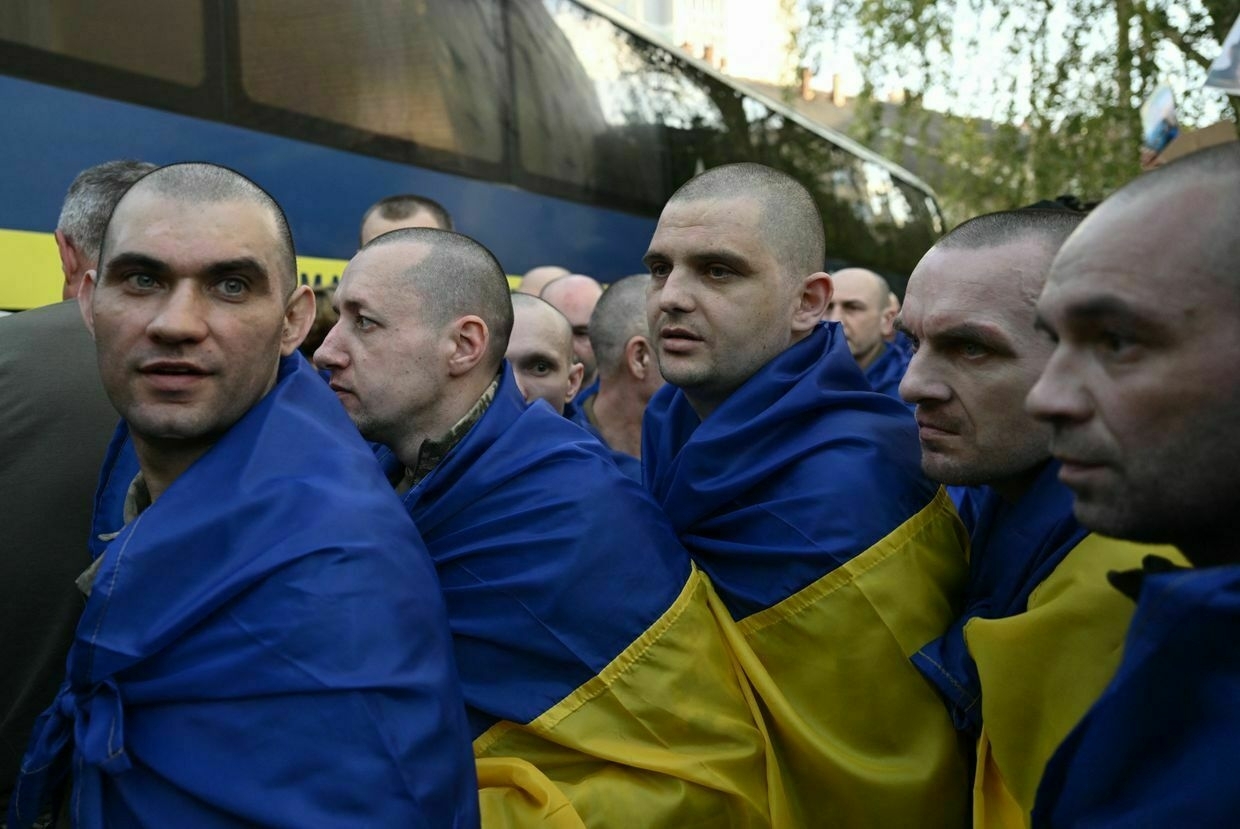
-
Erdogan says Trump ready to join Zelensky-Putin talks in Turkey
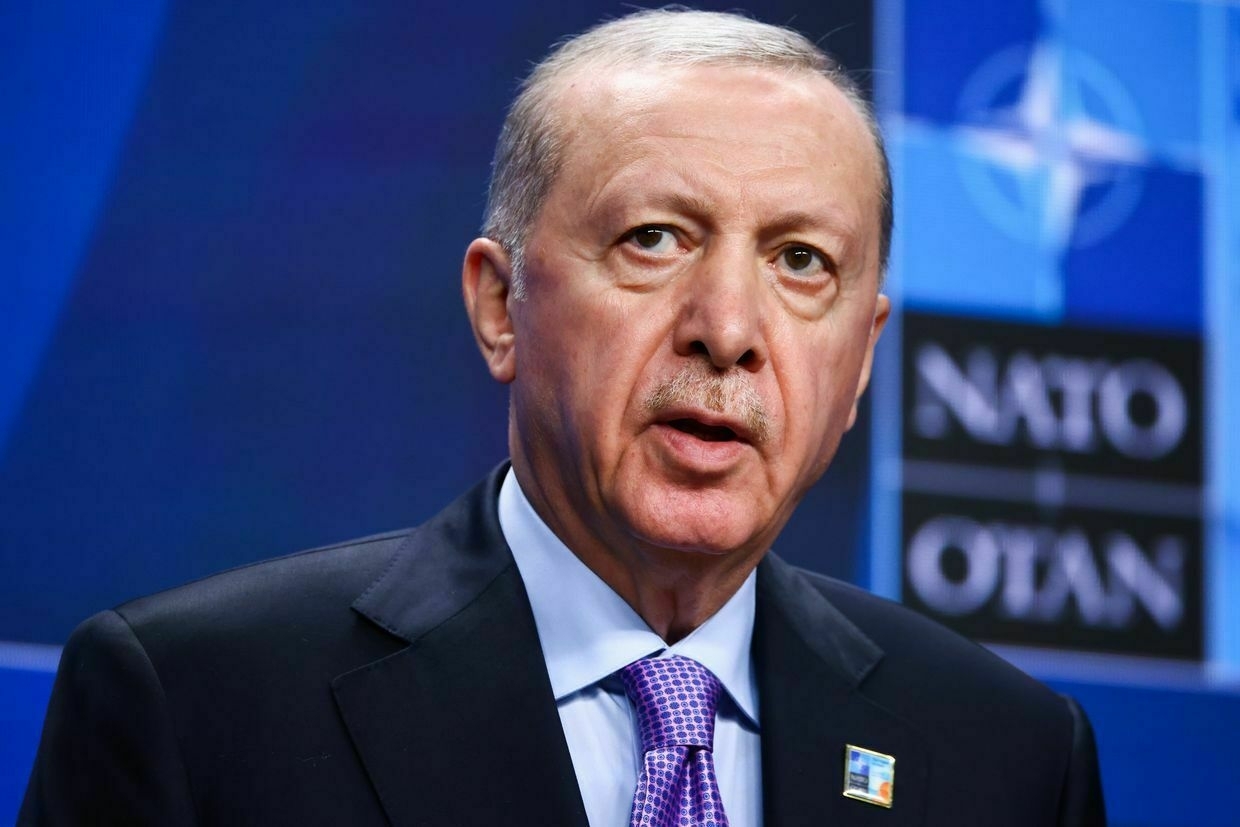
Turkish President Recep Tayyip Erdogan said Ankara is working to organize a meeting between President Volodymyr Zelensky and Russian President Vladimir Putin, with U.S. President Donald Trump potentially joining the talks, Reuters reported.
Speaking after his meeting with Trump, Erdogan said on June 26 that the U.S. president expressed interest in participating if the meeting were to take place in Turkey.
“He said,‘If Russian President Vladimir Putin comes to Istanbul or Ankara for a solution, then I will also come,'” Erdogan told reporters. “We will hold the necessary contacts and, God willing, realize this meeting as soon as possible."
Zelensky and Trump met during the NATO summit on June 25, where the two leaders discussed battlefield developments, Kyiv’s need for additional air defense systems, and the potential for co-production of drones.
Zelensky has previously voiced openness to a trilateral meeting. On May 27, he told public broadcaster Suspilne that he was ready to sit down with both Trump and Putin.
Putin has claimed he is also willing to meet, but did not attend previous talks proposed in Istanbul, opting instead to send lower-level delegates to peace discussions held on May 16.
The Kremlin has long sought to portray Zelensky as “illegitimate”, with spokesperson Dmitry Peskov in February claiming that any talks must consider “legal aspects” of his mandate.
Turkey previously hosted direct peace talks in March 2022 and has remained one of the few countries with open lines to both Kyiv and Moscow. The latest round of direct talks on June 2 was held in Istanbul.
Trump gets king’s treatment at NATO summit while Ukraine sits on the sidelinesTHE HAGUE, Netherlands — As NATO leaders convened in The Hague for a two-day summit on June 24–25, allies and Kyiv braced for the first annual meeting since U.S. President Donald Trump’s return to office. With the Israel-Iranian conflict dominating the news and the summit agenda focused onThe Kyiv IndependentMartin Fornusek
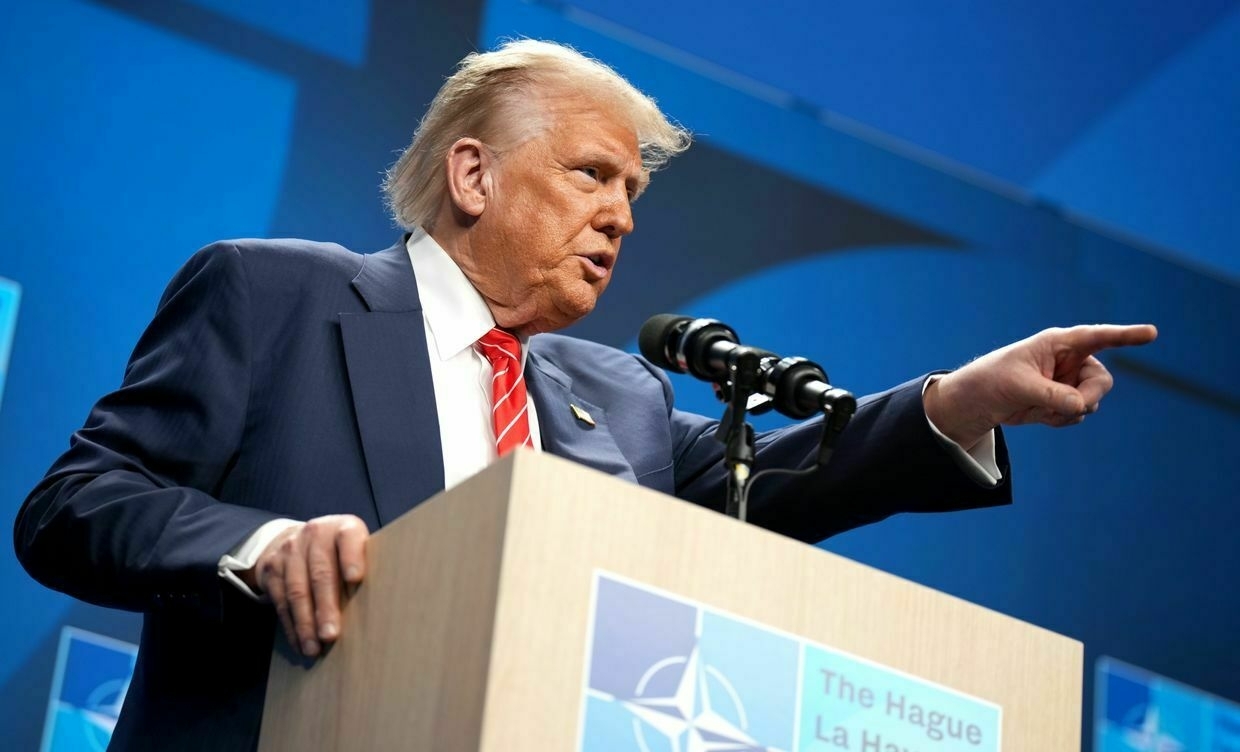
-
North Korea likely to send more troops to Russia by August, South Korea says
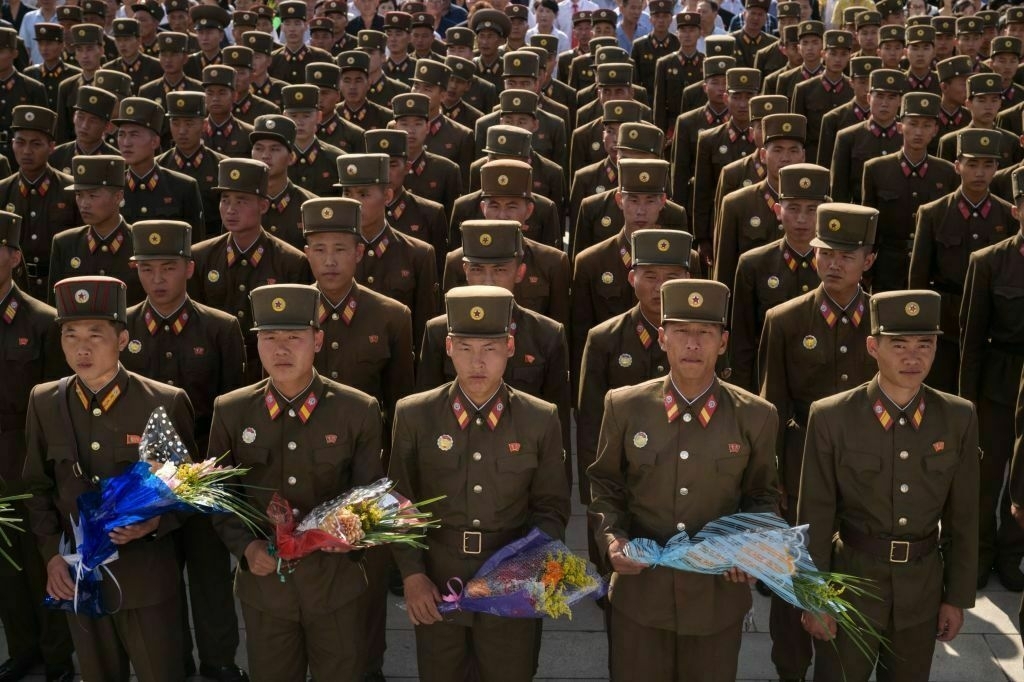
North Korea is likely to send more troops to Russia as early as July or August to bolster Moscow’s war effort against Ukraine, South Korea’s National Intelligence Service (NIS) said during a closed-door briefing, Yonhap reported on June 26.
According to lawmakers briefed by the NIS, Pyongyang has already begun recruiting soldiers for deployment to Russia. The latest intelligence adds to growing concerns about the expanding scope of North Korea’s involvement in Russia’s war.
The additional troop deployment would come on top of what Seoul estimates is already substantial support from North Korea, including the transfer of over 10 million artillery shells, and ballistic missiles in exchange for economic and technical assistance.
Yonhap’s reporting follows recent findings that Pyongyang may send up to 25,000 laborers to Russia to support drone production, specifically Shahed-type loitering munitions, at the Alabuga Special Economic Zone in Tatarstan, according to Japan’s NHK broadcaster.
In return, Pyongyang reportedly seeks training in drone operations, signaling an effort to integrate advanced unmanned aerial capabilities into its own military arsenal.
Putin insists the Russian economy is fine, but Kremlin officials say otherwiseIn a rare public sign that all is not well in Russia, two high-ranking Moscow officials last week issued separate warnings about the state of the country’s economy. Russian Central Bank Governor Elvira Nabiullina and Economy Minister Maxim Reshetnikov both highlighted that amid the Kremlin’s full-scale war against Ukraine, the tools Moscow once relied on to maintain wartime growth are nearly exhausted. Almost immediately, Russian President Vladimir Putin on June 20 dismissed the concerns, clai The Kyiv IndependentTim Zadorozhnyy
The Kyiv IndependentTim Zadorozhnyy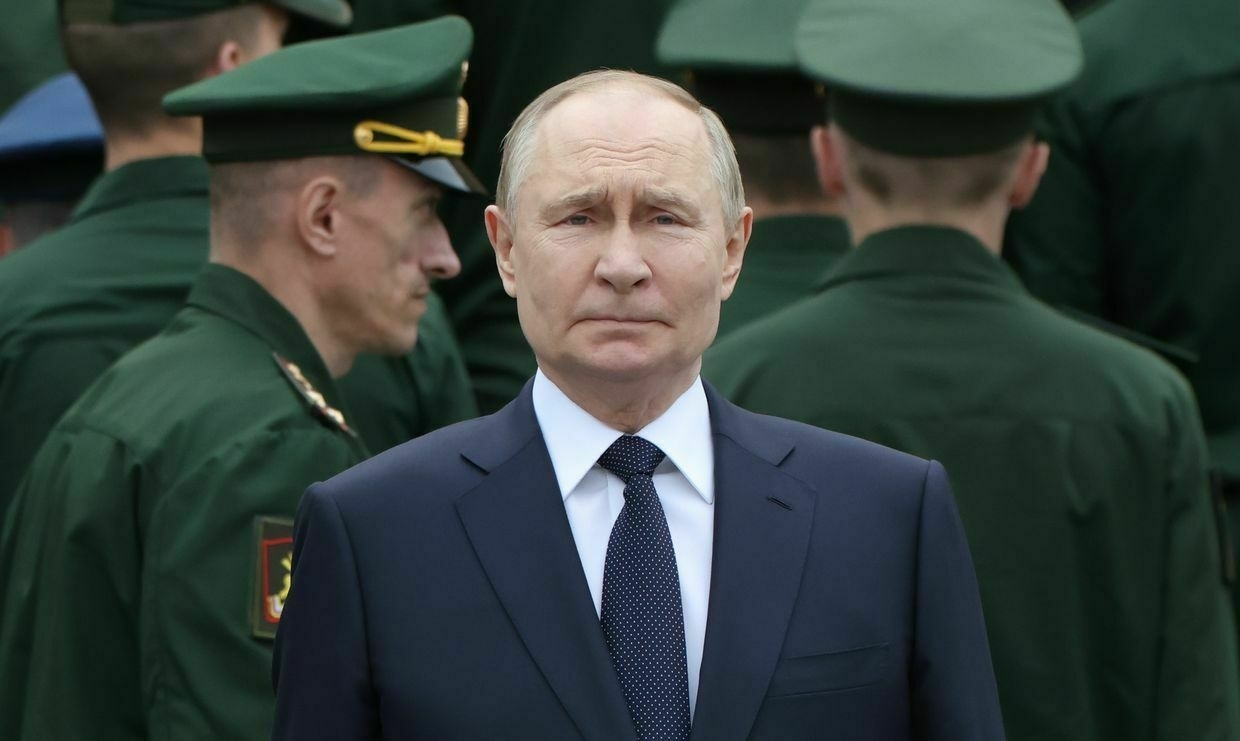
The developments come amid intensifying diplomatic exchanges between the two authoritarian regimes. Russian Security Council Secretary Sergei Shoigu traveled to North Korea on June 17 under a special directive from President Vladimir Putin.
After meeting North Korean leader Kim Jong Un, Shoigu announced that Pyongyang had agreed to dispatch 1,000 sappers and 5,000 military engineers to Russia’s Kursk Oblast.
North Korean combat units have already participated in front-line operations. Thousands of troops helped Russia repel a Ukrainian cross-border offensive into Kursk Oblast that began in August 2024.
Ukraine briefly held 1,300 square kilometers in the region before losing most of the territory during Russia’s March 2025 counteroffensive, which was supported by Pyongyang. The U.K. defense intelligence estimates place North Korean casualties at over 6,000.
Kyrylo Budanov, Ukraine’s military intelligence chief, said on June 9 that Russia and North Korea had agreed to begin domestic production of Shahed-136 drones on North Korean territory, further solidifying their military partnership.
During Russia’s May 9 Victory Day Parade in Moscow, President Putin personally greeted North Korean troops in Red Square, underscoring the alliance’s symbolic and operational depth.
Kim did not attend but remains one of the Kremlin’s staunchest foreign backers.
Russia reportedly helping North Korea build warships, but questions over seaworthiness remain after failed launchSatellite imagery and launch footage suggest a clear Russian design influence. The Kyiv IndependentTim Zadorozhnyy
The Kyiv IndependentTim Zadorozhnyy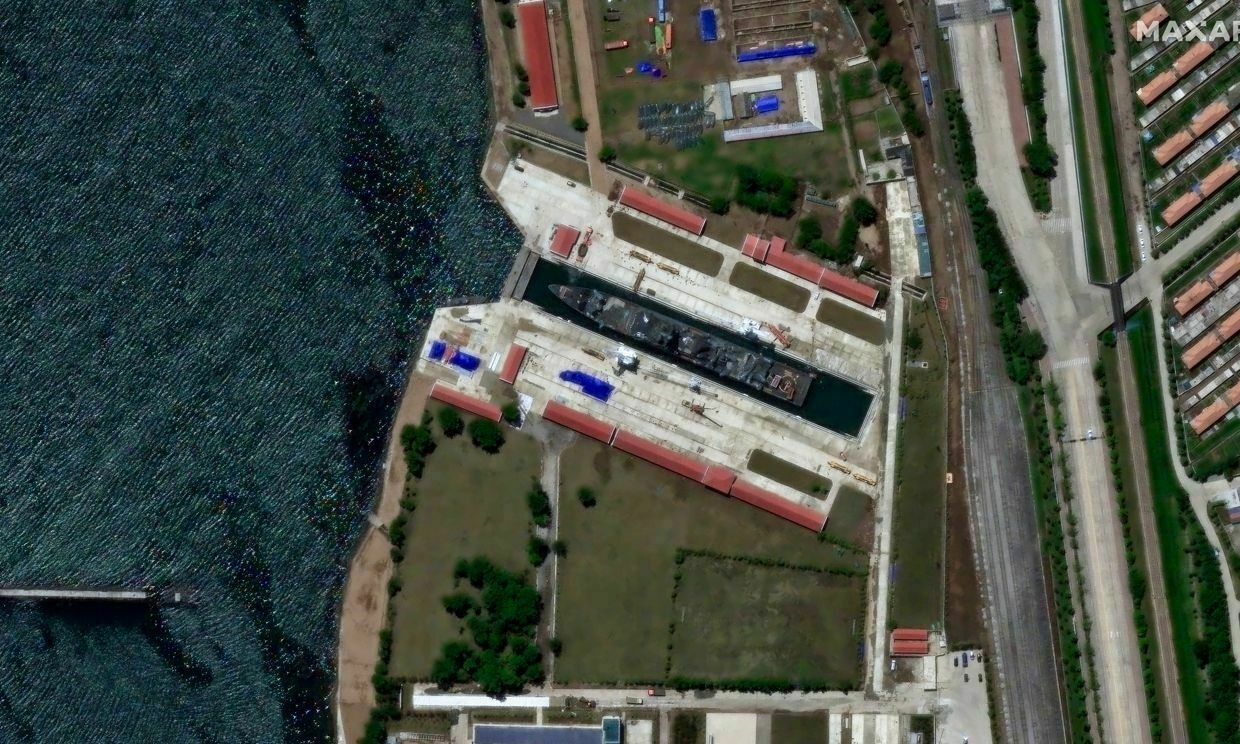
-
'50,000 Russian troops pinned down' — Ukraine halts advance in Sumy Oblast, summer offensive 'faltering,' Syrskyi says
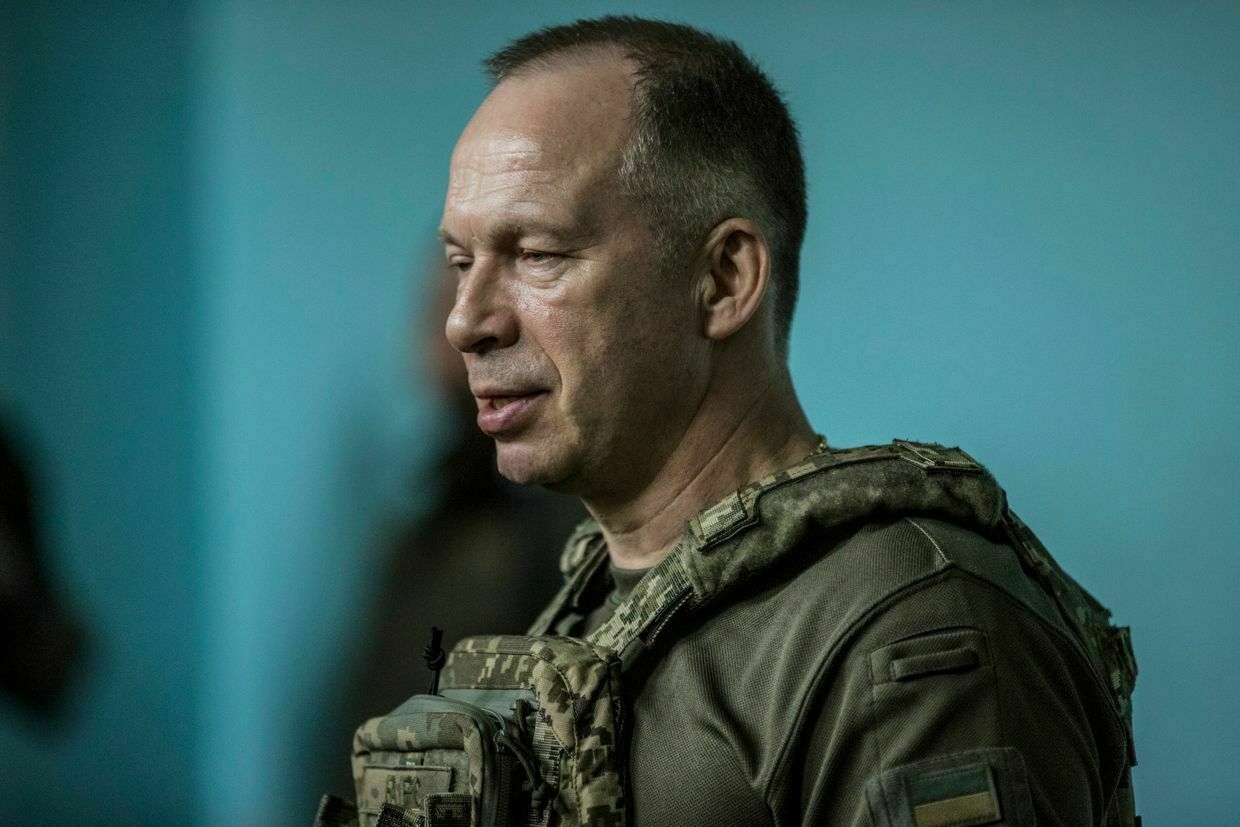
Ukraine has halted Russia’s advance in Sumy Oblast, stabilizing the front line and blunting the momentum of Moscow’s summer offensive, Commander-in-Chief Oleksandr Syrskyi said on June 26.
“Based on the results of May and June, we can say that this year’s wave of the enemy’s summer offensive from Russian territory is faltering,” Syrskyi said, reporting that Russian troops in the northeastern border region had been stopped.
Moscow launched its new summer campaign in May, aiming to push deeper into Ukraine’s northeast and eastern regions, disregarding Kyiv’s calls for an unconditional ceasefire.
Russian forces had made modest gains, occupying around 449 square kilometers (173 square miles) in May, the highest monthly total in 2025, according to the open-source intelligence group DeepState.
In Sumy Oblast, however, the line of contact has stabilized. Syrskyi said Ukrainian troops are not only defending but also reclaiming ground using active defense tactics.
“In certain areas, our units are liberating Ukrainian territory,” he said.
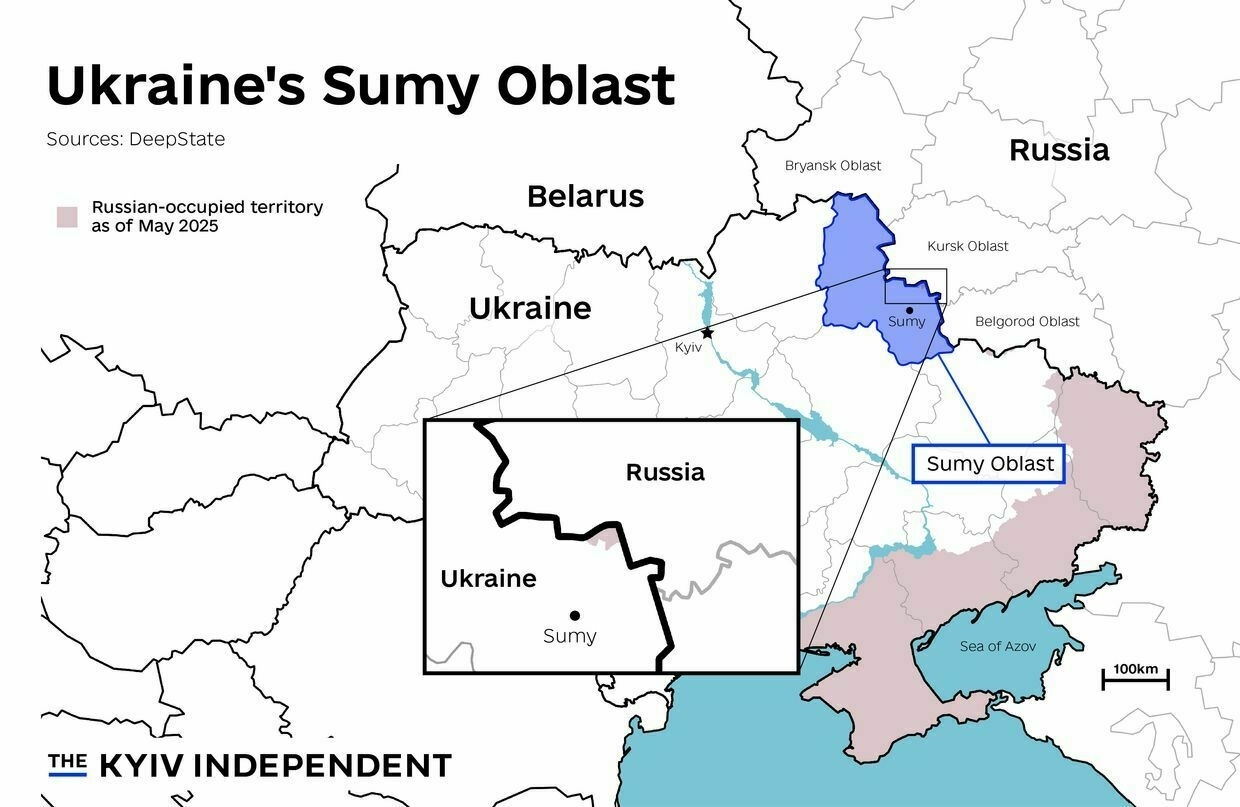
A map of Ukraine’s Sumy Oblast (Nizar al-Rifal/The Kyiv Independent) Syrskyi said Ukrainian operations in Russia’s Glushkovsky district had forced Moscow to shift elite units, including Airborne Forces and Marine Corps brigades, into defensive positions, undermining their offensive capabilities in Sumy.
“In the North Slobozhansky and Kursk directions, we have once again pinned down about 50,000 Russian Armed Forces personnel,” Syrskyi said. He provided no further details about how Ukraine had achieved this.
Ukraine launched a cross-border offensive into Russia’s Kursk Oblast in August 2024, initially capturing 1,300 square kilometers before losing most of that territory in a Russian counterattack earlier this year.
Russian officials declared complete control over the region on April 26, though the claim was later disputed by Kyiv and contradicted by Russia’s own local authorities.
Russia’s broader offensive aims to seize the remaining administrative borders of Donetsk and Luhansk oblasts and carve out a buffer zone along the Sumy and Kharkiv frontiers.
Sumy Oblast, which borders Russia to the east, remains a strategic region. Since the beginning of the full-scale invasion, it has faced near-daily attacks.
Putin insists the Russian economy is fine, but Kremlin officials say otherwiseIn a rare public sign that all is not well in Russia, two high-ranking Moscow officials last week issued separate warnings about the state of the country’s economy. Russian Central Bank Governor Elvira Nabiullina and Economy Minister Maxim Reshetnikov both highlighted that amid the Kremlin’s full-scale war against Ukraine, the tools Moscow once relied on to maintain wartime growth are nearly exhausted. Almost immediately, Russian President Vladimir Putin on June 20 dismissed the concerns, clai The Kyiv IndependentTim Zadorozhnyy
The Kyiv IndependentTim Zadorozhnyy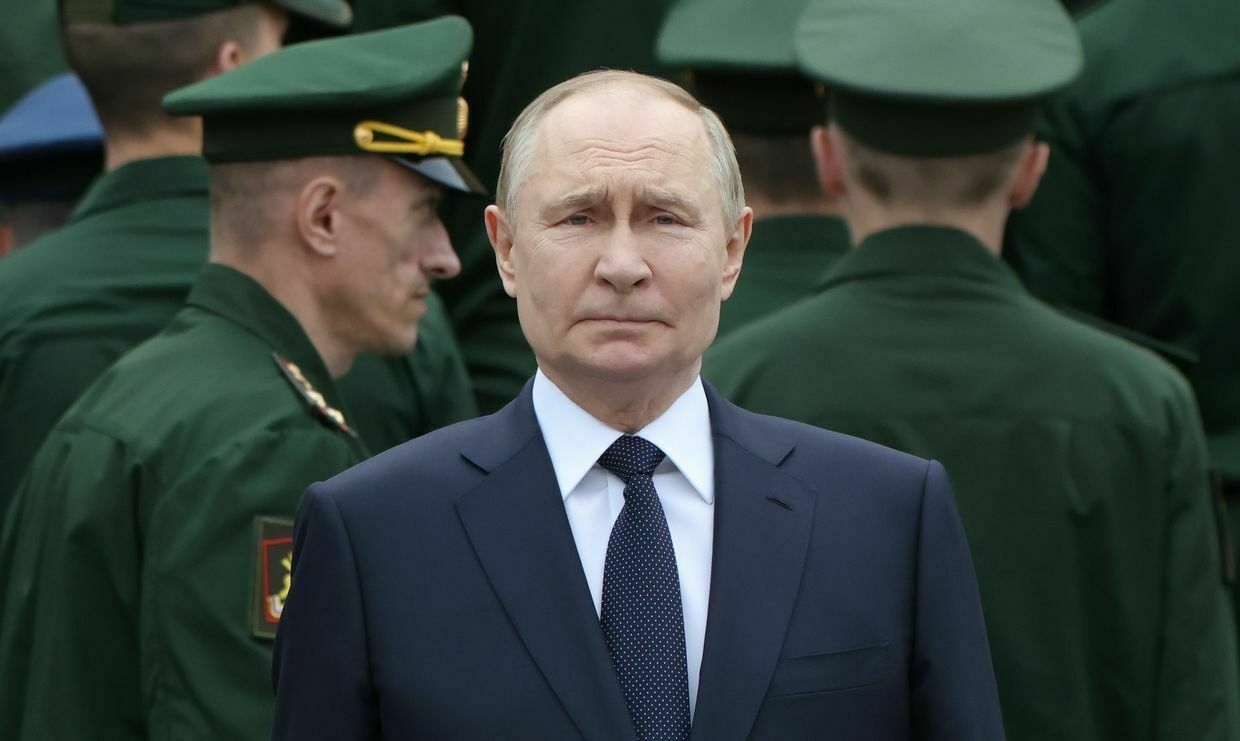
-
Trump gets king’s treatment at NATO summit while Ukraine sits on the sidelines
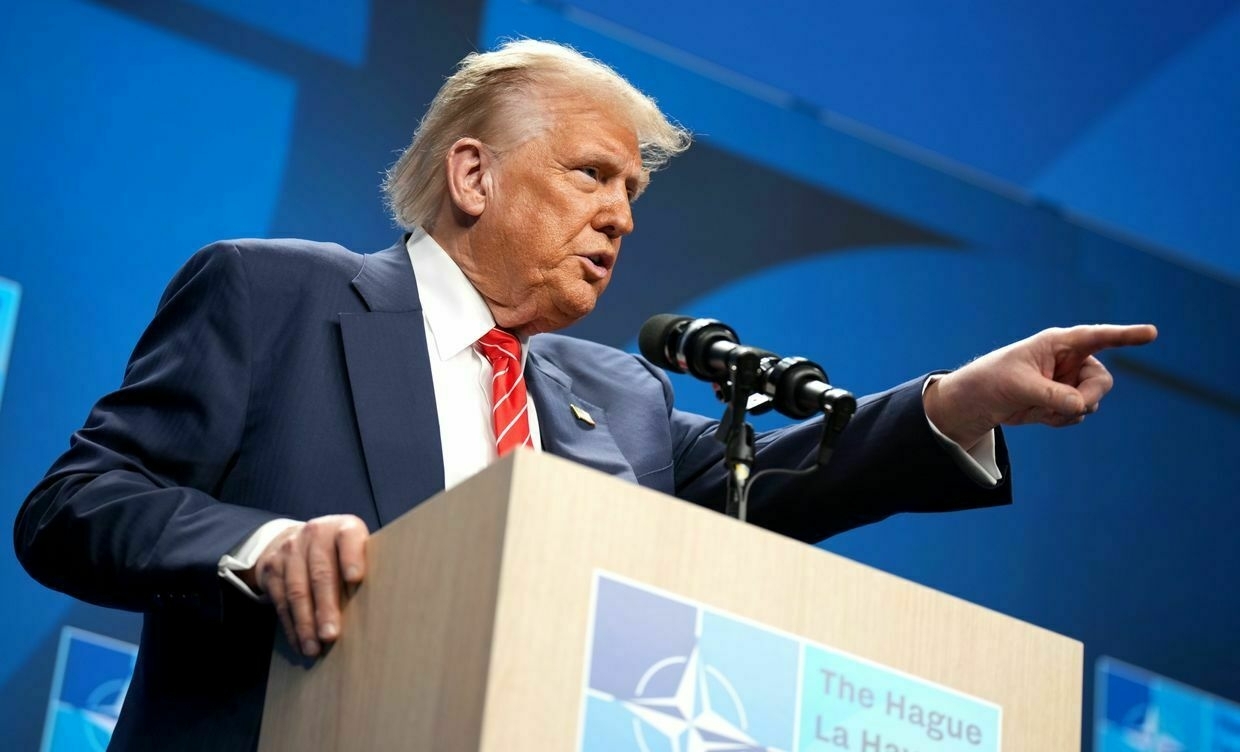
THE HAGUE, Netherlands — As NATO leaders convened in The Hague for a two-day summit on June 24–25, allies and Kyiv braced for the first annual meeting since U.S. President Donald Trump’s return to office.
With the Israel-Iranian conflict dominating the news and the summit agenda focused on the new 5% defense spending target, Ukraine no longer took center stage.
This was chiefly because of one man: Trump has shown little appetite for ramping up military assistance for Ukraine, and there are growing fears he might disengage from the war altogether.
He has also ruffled the feathers of his NATO allies by publicly doubting the U.S. commitment to Article 5.
NATO Secretary General Mark Rutte set out to demonstrate that transatlantic unity remains strong — even if that meant appeasing Trump with flattery and deprioritizing potentially divisive topics like Ukraine.
This shift was underscored by the summit’s final statement, which offered little more than stale words of comfort to the war-torn country, even as Russia launched new large-scale attacks against its cities.
President Volodymyr Zelensky did not leave the summit empty-handed, however. He got his much-desired meeting with Trump, which seemed to have gone smoothly.
Rutte also sought to reassure Kyiv that support for Ukraine holds, stressing that allies have committed some 35 billion euros ($40 billion) in aid to Ukraine this year so far, about 10 billion euros more than in the first half of last year.
But it hasn’t dispelled the sense that an era is ending — one in which Ukraine’s struggle against Russia held an unquestioned place at the center of NATO’s agenda.
Ukraine’s small victoriesThe NATO summit wasn’t a complete failure for Ukraine. In fact, the most pessimistic rumors swirling around in the lead-up to the event did not come true.
Zelensky did, after all, receive an invitation to the summit, dispelling speculation that Ukraine would be left out due to opposition from the U.S. He also managed to have a face-to-face meeting with Trump for the first time since their brief talk in the Vatican in April, rectifying the missed opportunity at the G7 summit.
“Everybody understands that the attack against Ukraine is an attack against us as well. Ukraine belongs to Europe.”
Though details of the meeting are scarce, Trump left the talk uncharacteristically critical of Russian leader Vladimir Putin.
Responding to a journalist during a press conference, the U.S. president acknowledged it is “possible” Putin may have territorial ambitions beyond Ukraine – a rare admission for Trump, who always professed his trust in the Russian leader.
"I consider him (Putin) a person I think is misguided," Trump said.
"I think it’s a great time to end it (war). I’m going to speak to Vladimir Putin, see if we can get it ended," Trump added. "He (Zelensky) is fighting a brave battle, it's a tough battle."
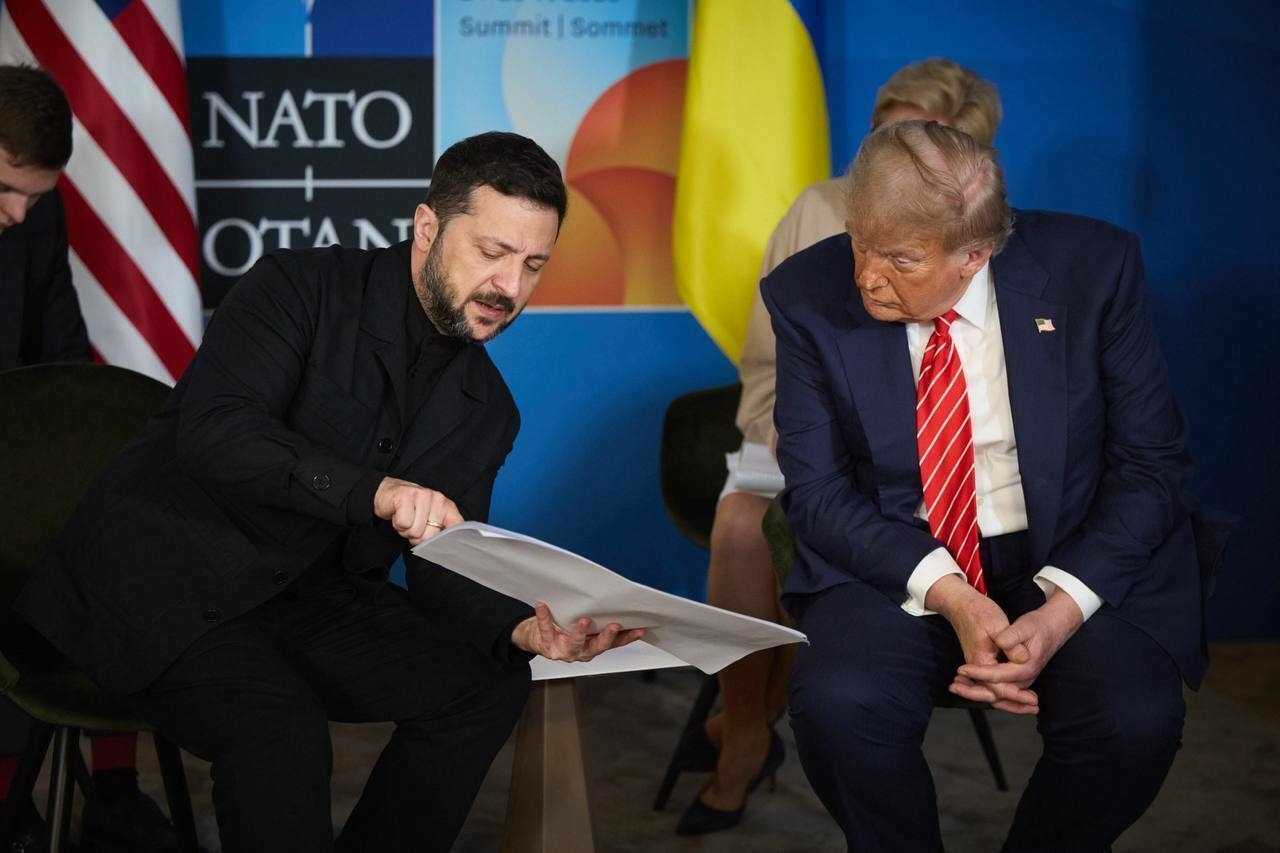
President Volodymyr Zelensky (L) and U.S. President Donald Trump (R) meet during the NATO Summit in The Hague, Netherlands, on June 25, 2025. (Zelenskiy / Official Telegram Account / Handout / Anadolu via Getty Images) Trump also carefully signaled support for sending Ukraine additional missiles for Patriot air defense systems, though no concrete commitment was made. Asked about further air defense assistance by a Ukrainian journalist whose husband is a soldier fighting in Ukraine, Trump, in a rare show of sympathy toward Ukrainians, acknowledged her distress over Russia’s escalating aerial attacks.
"They (Ukraine) do want to have the anti-missile missiles, as they call them, the Patriots, and we're going to see if we can make some available," Trump said.
Other NATO leaders reaffirmed their steadfast support for Ukraine as it continues to resist Russia’s full-scale invasion, now in its fourth year.
“Everybody understands that the attack against Ukraine is an attack against us as well. Ukraine belongs to Europe,” Estonian Foreign Minister Margus Tsakhna told the Kyiv Independent during an interview at the summit.
Zelensky’s rhetoric was focused on pressuring Russia to accept a just peace and on raising more international funding for the Ukrainian defense industry.
Individual countries and other partners responded. The Netherlands and Norway pledged hundreds of millions to the Ukrainian defense industry, while the EU confirmed that its new, ambitious $175-billion SAFE defense spending program will be open to Kyiv.
But as the summit unfolded, it became increasingly clear that the spotlight is on Trump.
Putin insists the Russian economy is fine, but Kremlin officials say otherwiseIn a rare public sign that all is not well in Russia, two high-ranking Moscow officials last week issued separate warnings about the state of the country’s economy. Russian Central Bank Governor Elvira Nabiullina and Economy Minister Maxim Reshetnikov both highlighted that amid the Kremlin’s full-scale war against Ukraine, the tools Moscow once relied on to maintain wartime growth are nearly exhausted. Almost immediately, Russian President Vladimir Putin on June 20 dismissed the concerns, clai The Kyiv IndependentTim Zadorozhnyy
The Kyiv IndependentTim Zadorozhnyy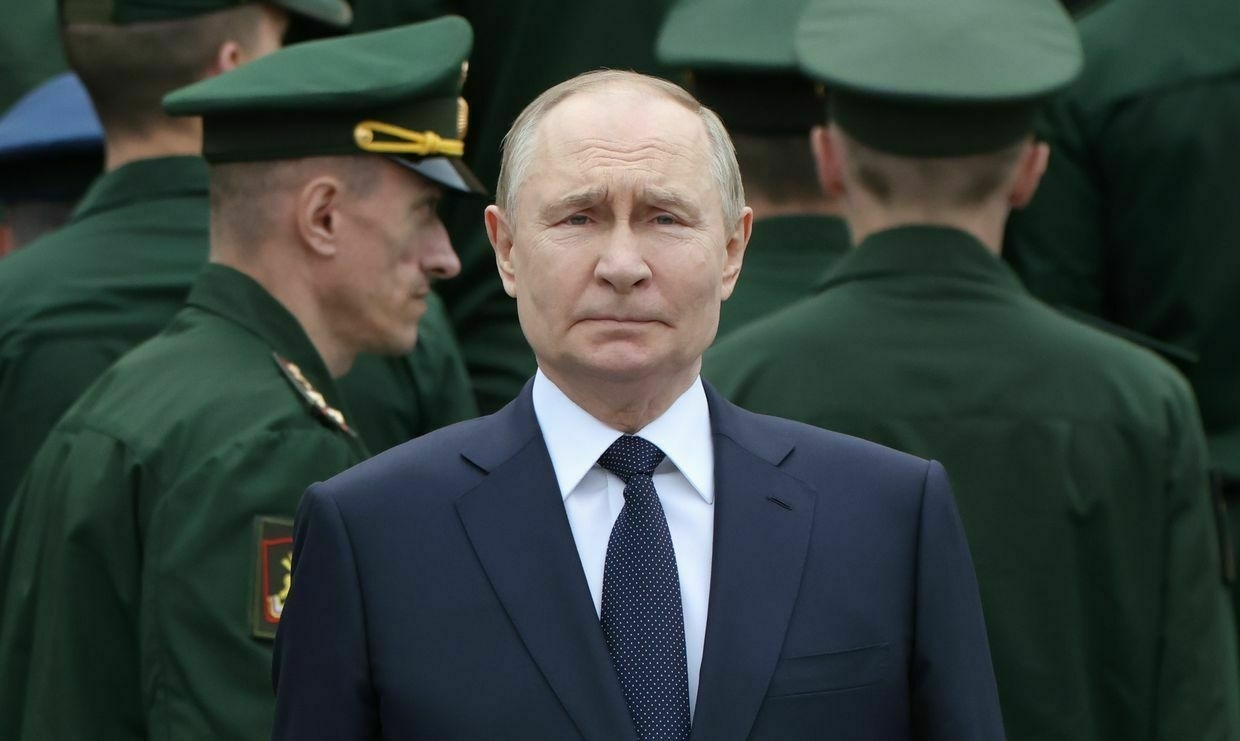
Charm offensive, aimed at TrumpTo say that The Hague summit took place at a precarious moment would be an understatement.
NATO is gripped by what is arguably its greatest existential crisis yet, and the most challenging security situation since the Cold War.tes
Since taking office, Trump has signaled plans to reduce military presence in Europe and cast doubt on his commitment to Article 5 – including just before his trip to the summit.
As Trump’s attention wanders away from Europe and Ukraine to the Israel-Iran conflict and other regions, Europeans are left to grapple with the fears that they might have to face Russian aggression on their own.
“Mr President, dear Donald, Congratulations and thank you for your decisive action in Iran, that was truly extraordinary, and something no one else dared to do. It makes us all safer.”
Perhaps that is why NATO leaders were so dead set on bringing Trump to the summit.
As the Kyiv Independent learned from a Ukrainian official, member countries pulled out all the stops to get Trump to attend, giving him a king’s treatment during the dinner and keeping the summit deliberately short.
Leading this charm offensive was the secretary general himself.
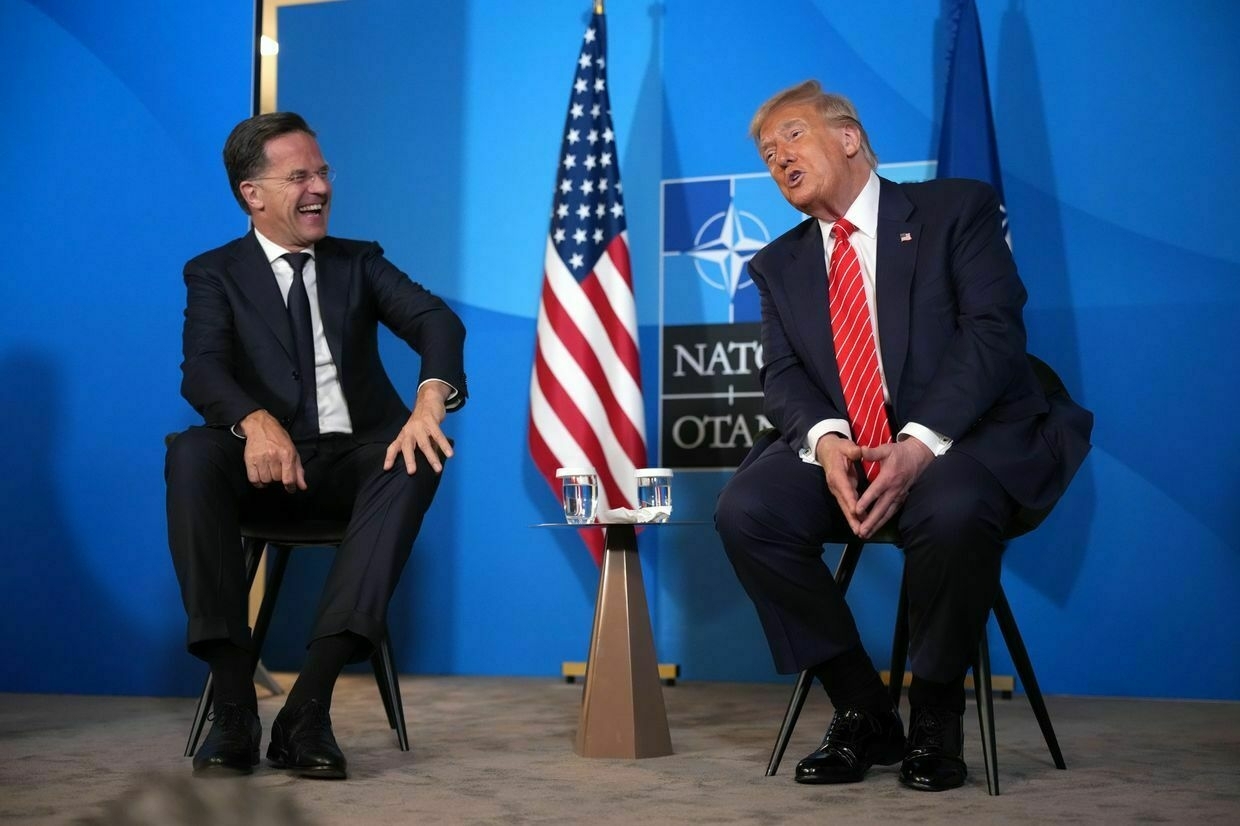
U.S. President Donald Trump (R) and NATO Secretary General Mark Rutte (L) speak to media at the start of the second day of the 2025 NATO Summit in The Hague, Netherlands, on June 25, 2025. (Andrew Harnik / Getty Images) 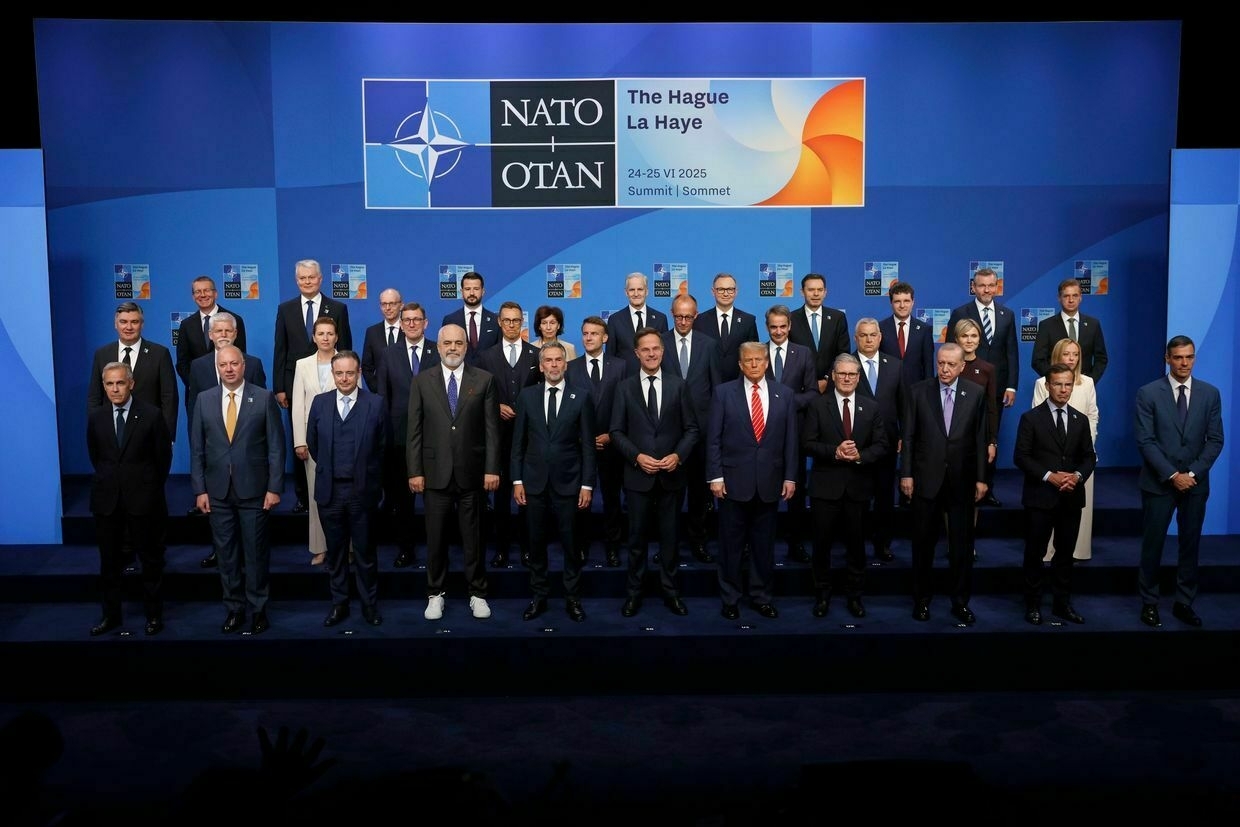
NATO heads of state and government pose for an official photo on the second day of the 2025 NATO Summit in The Hague, Netherlands, on June 25, 2025. (Omar Havana / Getty Images) “Mr President, dear Donald, Congratulations and thank you for your decisive action in Iran, that was truly extraordinary, and something no one else dared to do. It makes us all safer,” Rutte wrote in a message to Trump ahead of the summit, which the U.S. president promptly published.
“Europe is going to pay in a BIG way, as they should, and it will be your win,” he continued, referring to an agreement to raise the defense spending benchmark to 5% of GDP in a style strikingly similar to Trump’s.
Asked by a journalist whether the revelation of this text was not embarrassing for him, Rutte only doubled down, jokingly referring to Trump as a “daddy” during a briefing.
The summit’s focus on defense spending was likely a deliberate offering to Trump, who has lambasted European allies as underpaying freeloaders. When Rutte managed to get a unanimous agreement on the new spending target despite protests from Spain, he had a big win to present to Trump.
"Your leadership on this has already produced $1 trillion in extra spending from European allies since 2016. And decisions today will produce trillions more for common defense,” Rutte told Trump during the summit.
Trump has not been alone in this criticism. NATO’s eastern members, who devote considerably more to defense than their western and southern partners, echoed the sentiment.
“I totally agree with President Trump… Europe must pay more, Europe must take more responsibility for its own defense,” Tsakhna said.
“Europe has been like an old, lazy cat who was just waiting for something bad to happen, and the U.S. would come and solve the problems.”
Rutte's strategy seemed to have paid off. Trump appeared in good spirits, praising the new defense pledge while enjoying a flurry of questions from journalists that, in the absolute majority, focused on recent U.S. strikes on Iran.
Trump also signed off on the final statement that reaffirmed commitment to Article 5, mollifying his earlier comments.
Ukraine sidelinedWhile the final communique of the NATO summit in Washington last year was 38 paragraphs long, with six devoted to support for Ukraine, this year’s joint declaration was a mere five paragraphs.
The document did name Russia as a threat to the Euro-Atlantic security and reaffirmed support for Kyiv, but stopped short of condemning Moscow, mentioning Ukraine’s NATO aspirations, or offering any concrete new assistance.
This did not come as a surprise. Already in the runup to the summit, Bloomberg reported that the joint communique would omit these topics to avert friction with the U.S. president, who has been averse to offending Russia.
Rutte used the summit to repeat the familiar pledge that Ukraine’s path toward NATO is “irreversible,” but it was obvious that Kyiv’s accession, openly opposed by Trump, would not see any development in the near future.
Even as Russia launched a brutal aerial attack against Dnipro during the summit, which killed 19 people and injured 300, NATO offered Ukraine little but words.
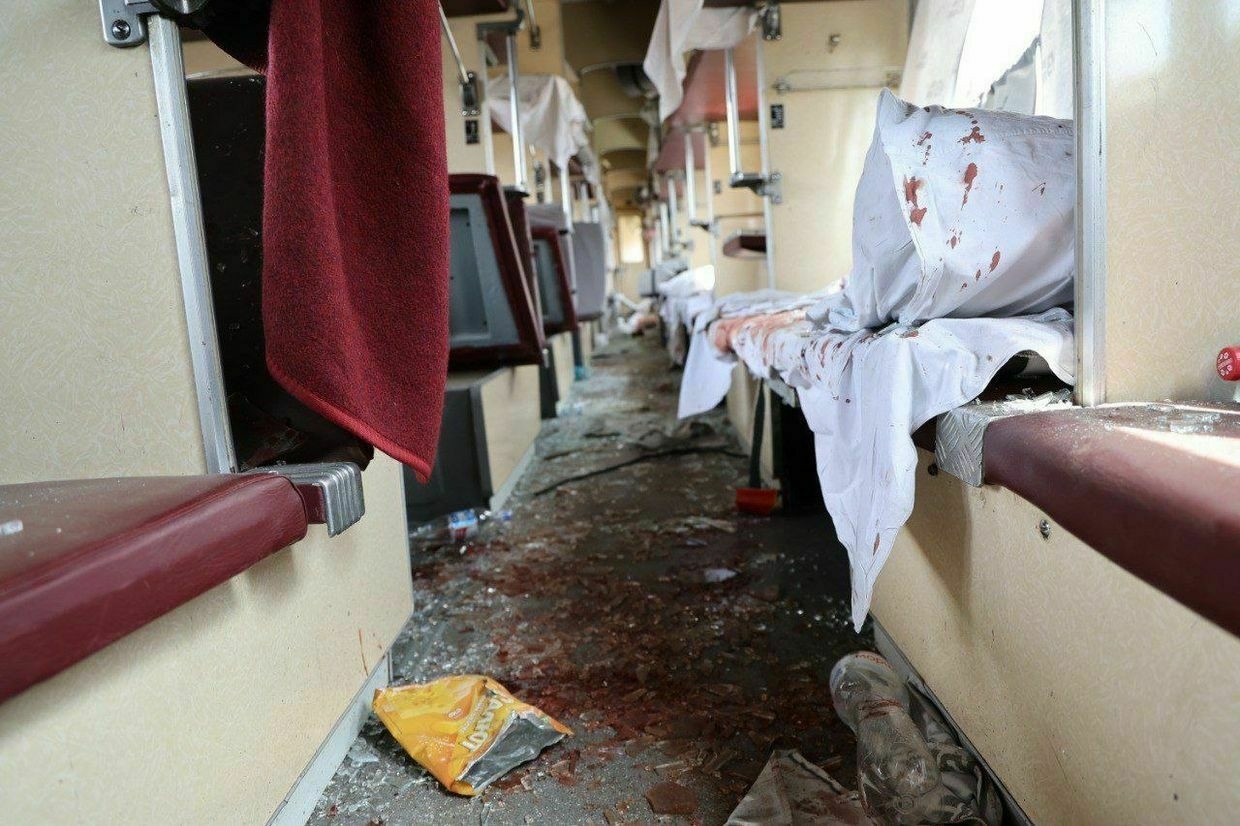
The aftermath of a Russian ballistic missile attack damaged a passenger train in Dnipro, Ukraine, on June 24, 2025. (Serhii Lysak / Telegram) What Ukraine received at this year’s NATO summit was a far cry from the bold pledges made last year in Washington.
But the meeting passed without any visible friction between Trump and his Ukrainian and European partners, with Ukraine even grabbing a few modest wins.
In the era of Trump, that might be a success of itself.
Asami Terajima contributed to reporting.Note from the author:
Hi, this is Martin Fornusek. I hope you enjoyed this article. If you want to help us continue covering crucial events like the NATO summit in The Hague, please consider becoming our member.
Thank you very much.
-
Orban claims 95% oppose Ukraine's EU accession in disputed Hungary referendum
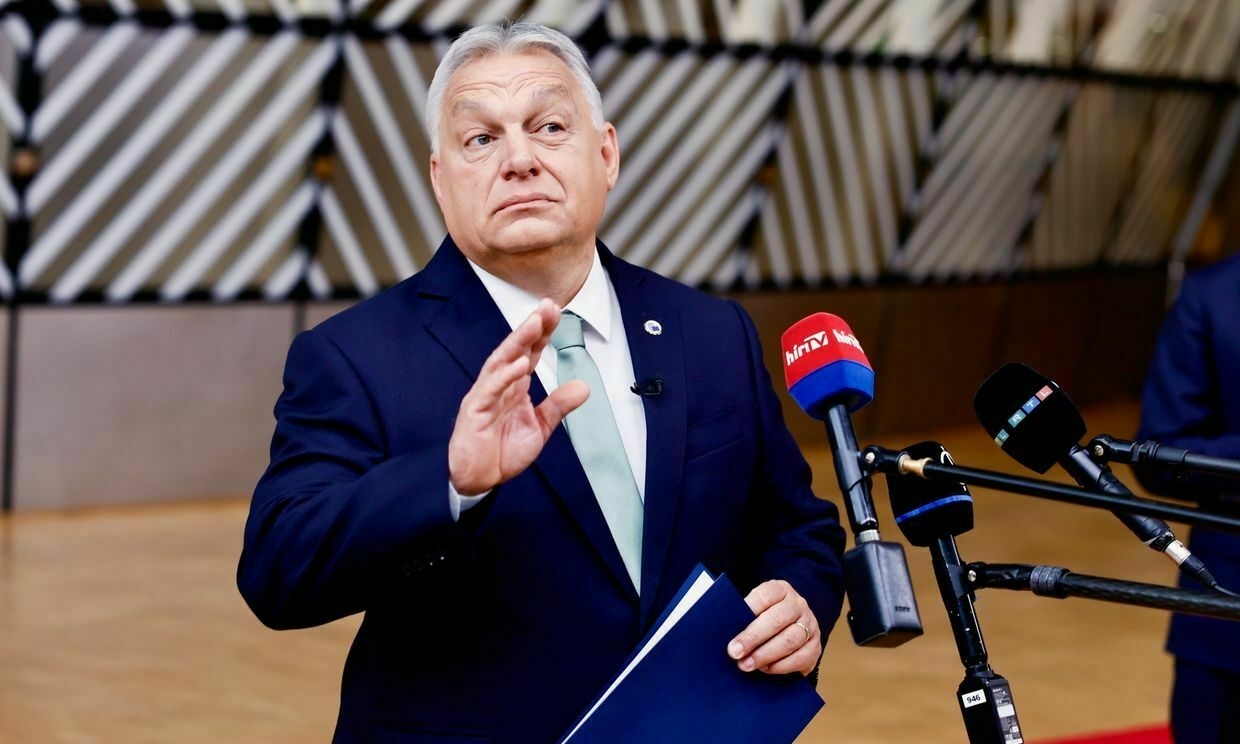
Hungary’s government announced on June 26 that 95% of participants in a national consultation opposed Ukraine’s accession to the EU, Hungarian news outlet Telex reported.
The poll, promoted by Prime Minister Viktor Orban’s government, has already drawn criticism over its credibility and turnout. Telex reported that the system could be manipulated — testing showed that users were able to vote twice using different email addresses.
According to Telex, 2,278,000 people participated in the consultation — approximately 29% of the electorate that voted in the 2024 European Parliament elections. Of those, the government claimed 95% voted against Ukraine joining the EU, while only 5% supported the bid.
Ukraine applied for EU membership shortly after Russia launched its war in 2022 and was granted candidate status within months. As an EU member, Hungary has veto power over further progress.
The consultation results were released on the eve of the European Council summit, giving Orban leverage to delay Ukraine’s membership. But the process itself has drawn skepticism.
Government spokesman Gergely Gulyas claimed printed ballots were notarized and secure, and that electronic votes, which made up 10% of the total, were being verified. However, he could not confirm whether the system could detect if someone voted both by mail and online.
Opposition leader Peter Magyar on June 22 dismissed the consultation as a “government propaganda campaign” and cited internal data from Magyar Posta indicating that only 3-7% of mailed ballots were returned.
“It’s the lowest-ever turnout for any such consultation,” Magyar wrote on social media.
Since 2010, Orban's government has conducted more than a dozen similar national consultations — non-binding letter campaigns with leading questions designed to reinforce government positions.
Previous campaigns targeted topics like LGBTQ rights and EU migration policy. In one 2023 consultation, voters were asked whether they supported Brussels' alleged plans to create "migrant ghettos" in Hungary — 99% voted no, with turnout under 20%.
On April 22, Orban said he voted against Ukraine's accession to the EU in the consultation, publicly sharing photos of himself marking "against" on the poll ballot. He warned earlier this year that allowing Kyiv to join the EU would "destroy" Hungary.
Orban, the EU's most openly pro-Russian leader, has blocked or delayed military aid to Ukraine, maintained close ties with President Vladimir Putin, and echoed Kremlin talking points.
Hungary's opposition and Western critics view his administration as increasingly authoritarian, citing the erosion of press freedom, judicial independence, and electoral fairness.
Despite the low turnout and widespread allegations of manipulation, Orban is expected to use the consultation's outcome to justify future obstruction of Ukraine's EU integration.
Hungary’s soft power meets Ukraine’s hard reality in ZakarpattiaBEREHOVE, Zakarpattia Oblast — Thin gray smoke drifts beyond the patchwork of Soviet-era apartment blocks, historical buildings, and hillside vineyards that make up Berehove — the heart of the Hungarian community in Ukraine’s westernmost Zakarpattia Oblast. “That’s Hungary, over there, where you see the smoke,” gestures Vitalii Antipov, a member of the local council, toward the not-so-distant horizon. He stands on top of a hill adorned by a massive white cross with a makeshift inscription thank The Kyiv IndependentMartin Fornusek
The Kyiv IndependentMartin Fornusek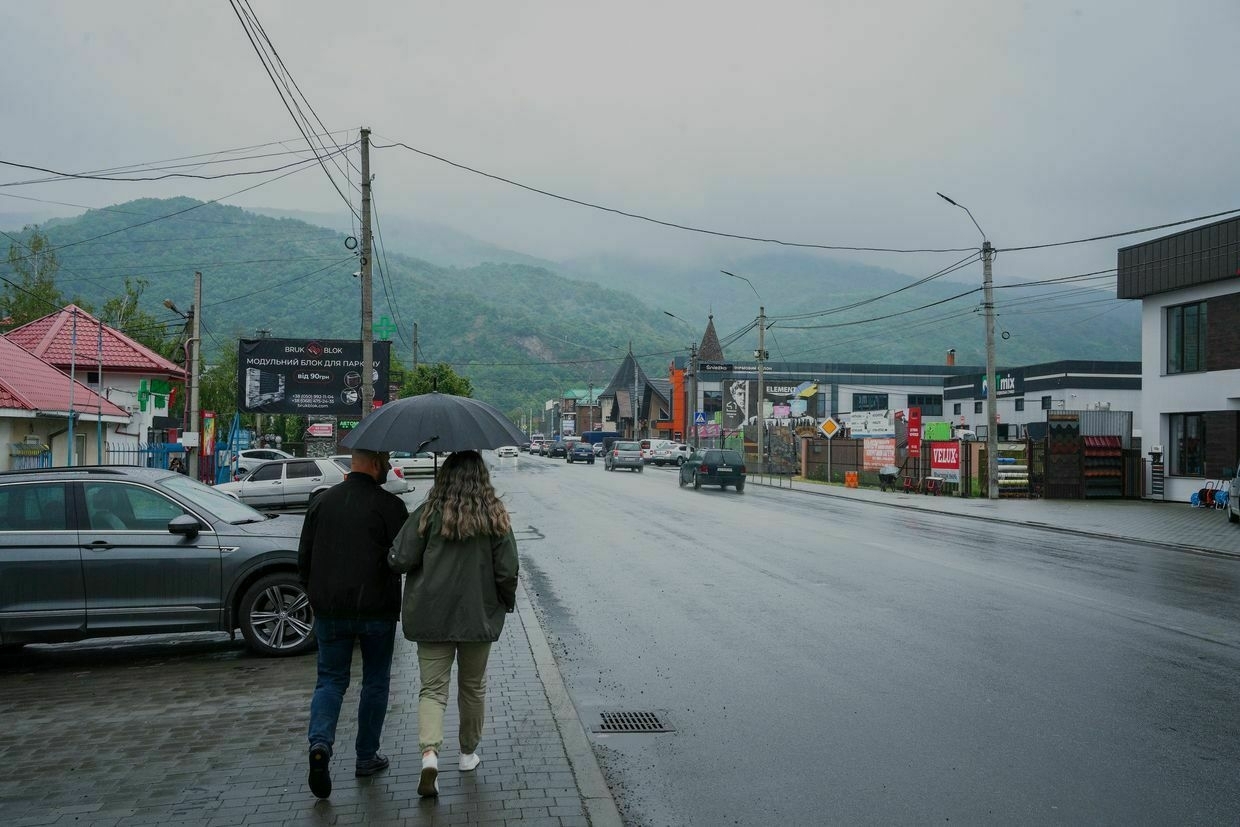
-
Russia reportedly helping North Korea build warships, but questions over seaworthiness remain after failed launch
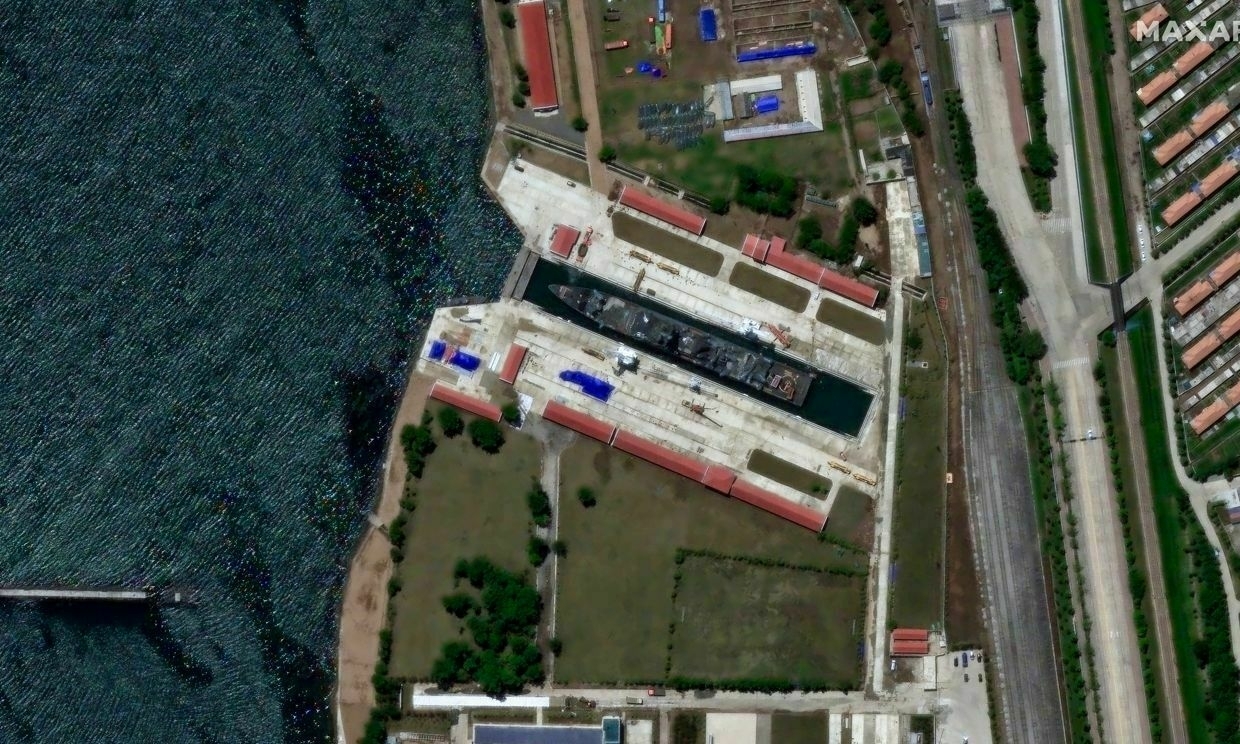
Russia appears to have provided North Korea with extensive assistance in designing and rapidly constructing two advanced destroyers, the most modern in Pyongyang’s fleet, the Wall Street Journal (WSJ) reported on June 25.
The destroyers, part of the new Choe Hyon class, were built in just over a year — an unusually fast timeline that analysts say would have been impossible without foreign support.
Satellite imagery and launch footage suggest a clear Russian design influence, including the distinctive bow and stern structure found on Russia’s Admiral Grigorovich-class frigates.
One of the destroyers, launched in April, was followed in May by a failed launch during which the second vessel capsized in front of North Korean leader Kim Jong Un.
The incident prompted outrage from Kim, who condemned the failed launch as a “criminal act” and placed blame on several state institutions, accusing relevant officials of “irresponsibility” which “could not be tolerated,“North Korean state-run Korean Central News Agency (KCNA) reported.
According to the agency, a malfunction in the launch mechanism caused the stern of the 5,000-ton destroyer to slide into the water too early, while the rest of the ship remained stuck.
Damage to the bottom of the ship threw it off balance, and the bow failed to move, resulting in “a serious accident."
The wreck was recovered in early June.
Mike Plunkett, a senior naval analyst at Janes, an open-source intelligence company, told the WSJ that the ships appeared to have signs of Russian involvement. He pointed to identical hull lines and profiles where the hull connects to the side, between the Korean and Russian vessels.
One of the destroyers appears to be equipped with the Russian Pantsir-M system, marking the first time this advanced air-defense system has been seen on a non-Russian warship.
Plunkett noted that the ventilation grilles for the engine room were sealed with metal plates, indicating the ships might not yet have engines.
The news comes amid deepening military ties between Russia and North Korea. According to a May 29 report by the Multilateral Sanctions Monitoring Team (MSMT), Pyongyang shipped up to 9 million artillery shells and at least 100 ballistic missiles to Russia in 2024 alone.
In fall 2024, North Korea’s role in Russia’s war grew as it sent thousands of troops to Russia’s western border to assist in repelling a Ukrainian incursion.
The partnership has also expanded into drone cooperation. On June 9, Ukraine’s military intelligence chief, Kyrylo Budanov, said the two nations had agreed to begin production of Iranian-designed Shahed-136 drones on North Korean territory.
‘Alarms went off everywhere’ — Explosions reported in Moscow, Russia claims 50 Ukrainian drones downed across countryExplosions were reported in Moscow overnight on June 26, prompting airport closures, as Mayor Sergey Sobyanin claimed that two drones were shot down.The Kyiv IndependentVolodymyr Ivanyshyn
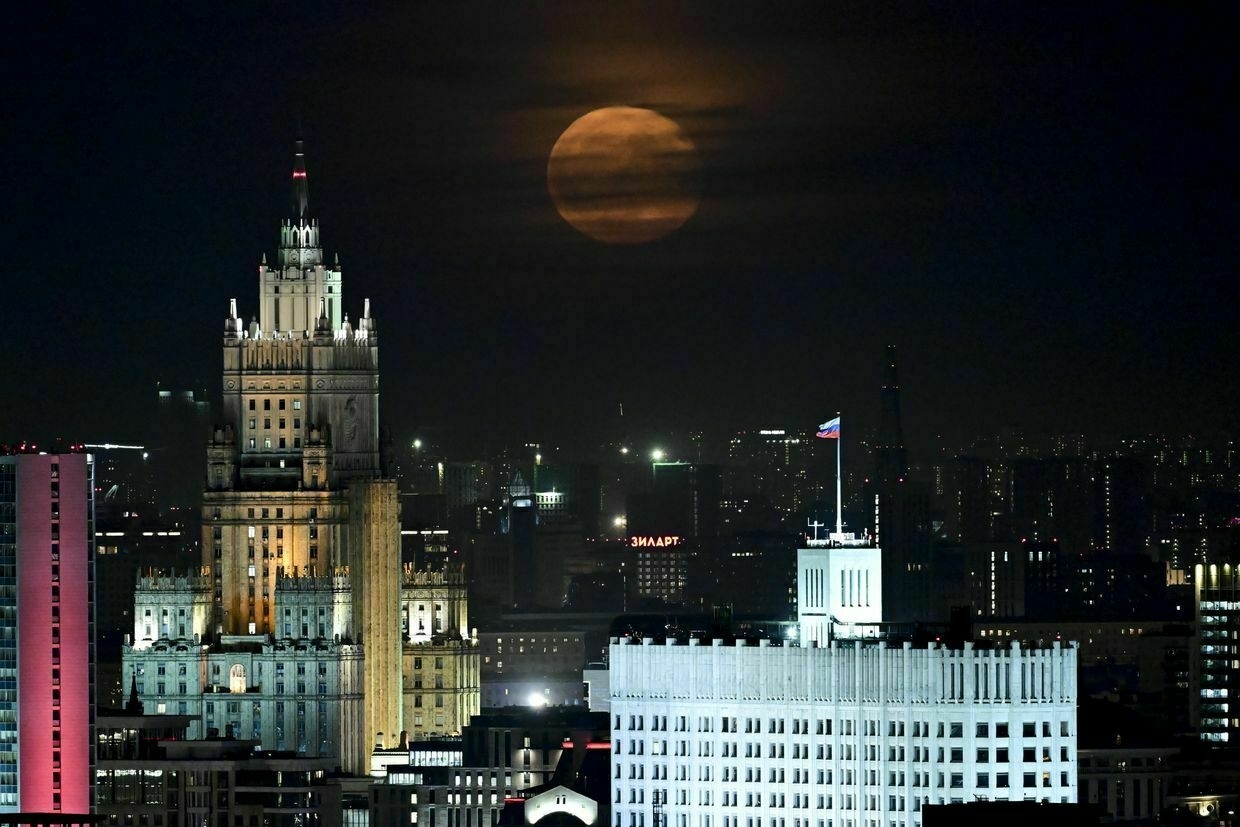
-
Taking lessons from Ukraine war, Trump's US defense budget prioritizes drones, missiles
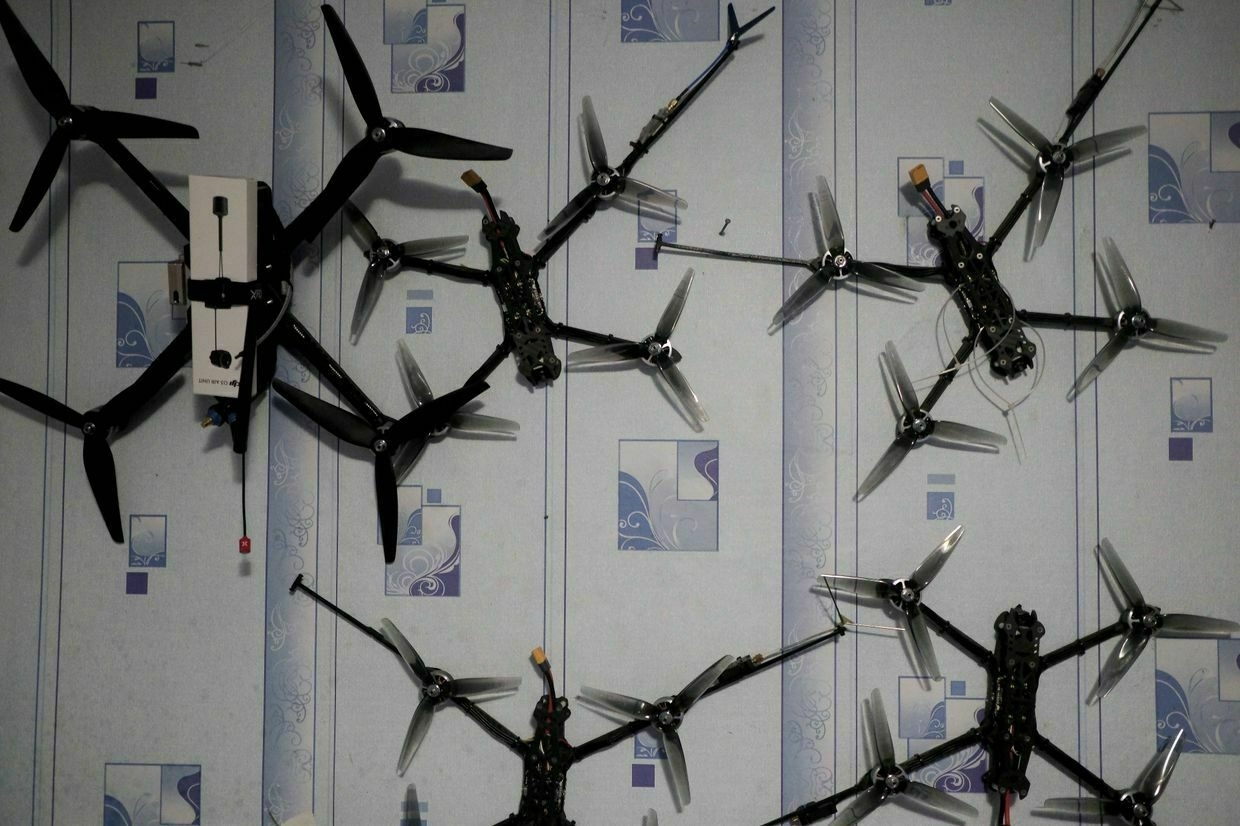
U.S. President Donald Trump’s proposed defense budget for fiscal year 2026 prioritizes drones and long-range missile systems over traditional air and naval platforms, Reuters reported on June 26.
The $892.6 billion request maintains the overall funding level from 2025 but shifts spending toward innovation and high-tech systems. The budget includes increased investment in small drones, a response to their proven battlefield value in Ukraine.
The proposal slashes procurement of key legacy systems. Trump’s plan includes just 47 F-35 fighter jets, down from the 68 planned by the Biden administration, and only three warships.
The Pentagon will continue to purchase Joint Air to Surface Standoff Missile – Extended Range and Long Range Anti-Ship missiles for the U.S. Air Force. Fewer Precision Strike Missiles, meant to replace the ATACMS, are included in the main request.
The proposal also includes a 3.8% increase in military salaries, while decommissioning aging and costly aircraft and ships. The Navy’s civilian workforce will be reduced by more than 7,000 employees to free up resources for technology and modernization.
The shift from traditional fleet expansion indicates a move towards asymmetric, precise warfare with drones playing a crucial battlefield role.
Ukraine’s experience has informed several elements of the request. Since Russia’s full-scale invasion in 2022, Kyiv has expanded drone production across all domains — air, land, and sea — with plans to manufacture 30,000 long-range drones in 2025.
Ukraine’s hybrid strike platforms, such as the Palianytsia and Peklo missile-drones, have drawn international attention for their range and versatility.
Putin insists the Russian economy is fine, but Kremlin officials say otherwiseIn a rare public sign that all is not well in Russia, two high-ranking Moscow officials last week issued separate warnings about the state of the country’s economy. Russian Central Bank Governor Elvira Nabiullina and Economy Minister Maxim Reshetnikov both highlighted that amid the Kremlin’s full-scale war against Ukraine, the tools Moscow once relied on to maintain wartime growth are nearly exhausted. Almost immediately, Russian President Vladimir Putin on June 20 dismissed the concerns, clai The Kyiv IndependentTim Zadorozhnyy
The Kyiv IndependentTim Zadorozhnyy